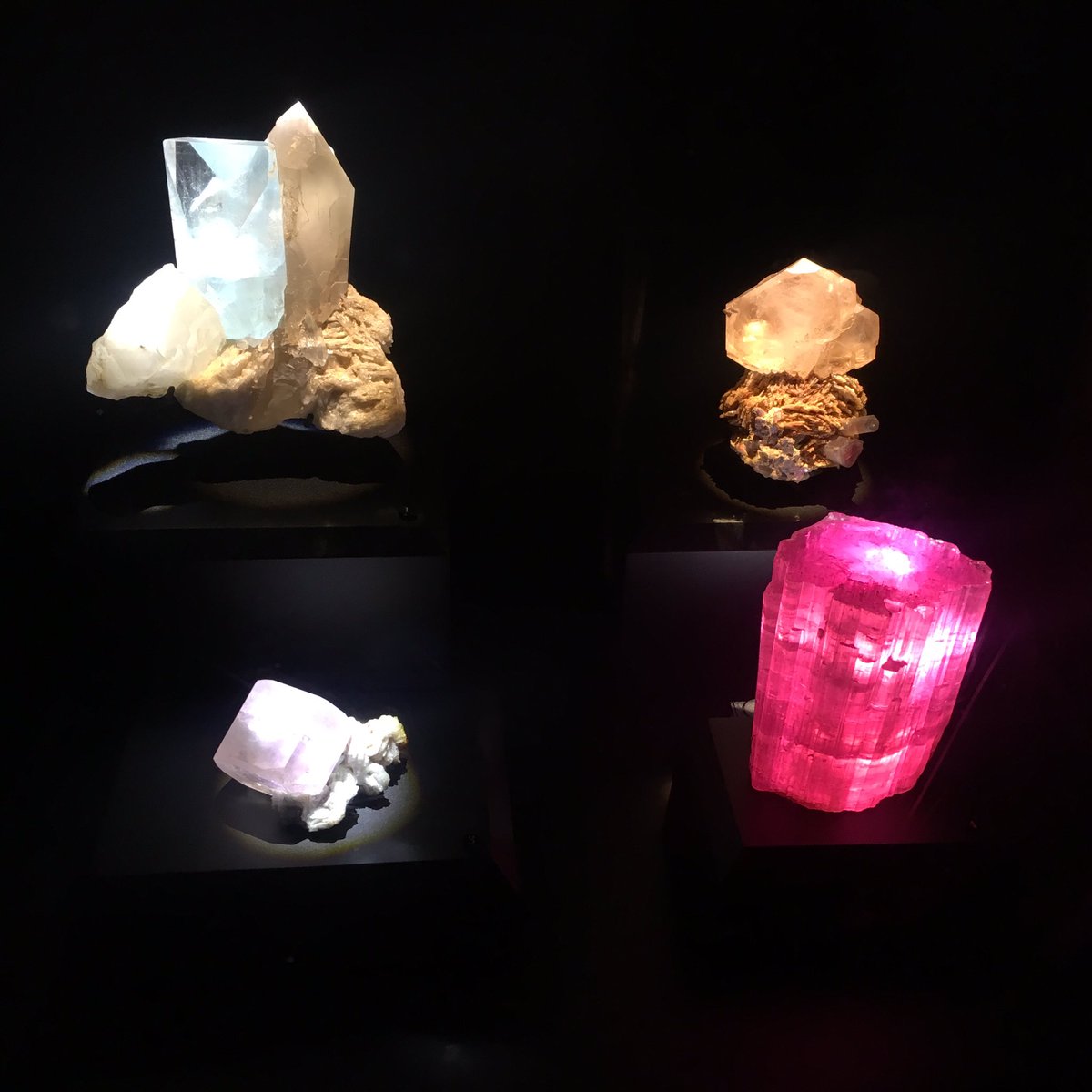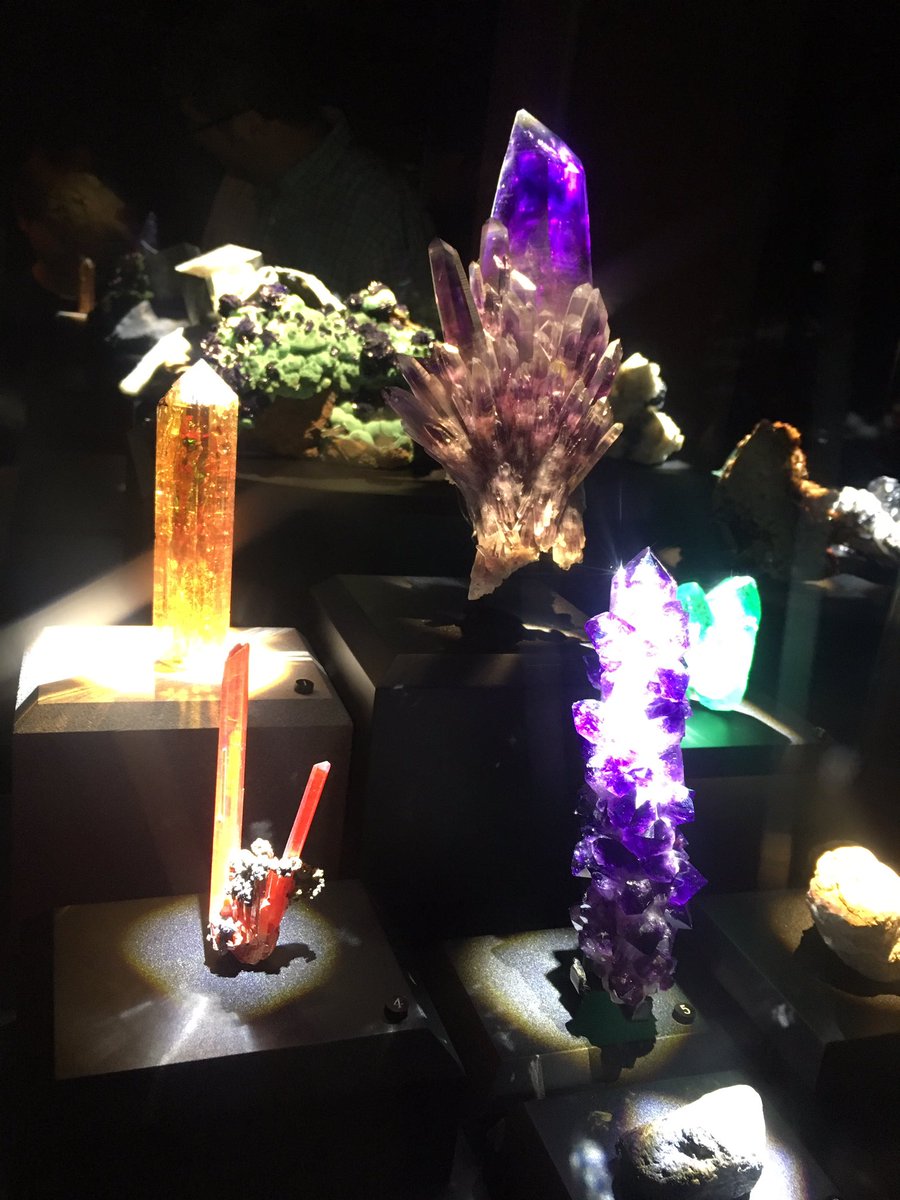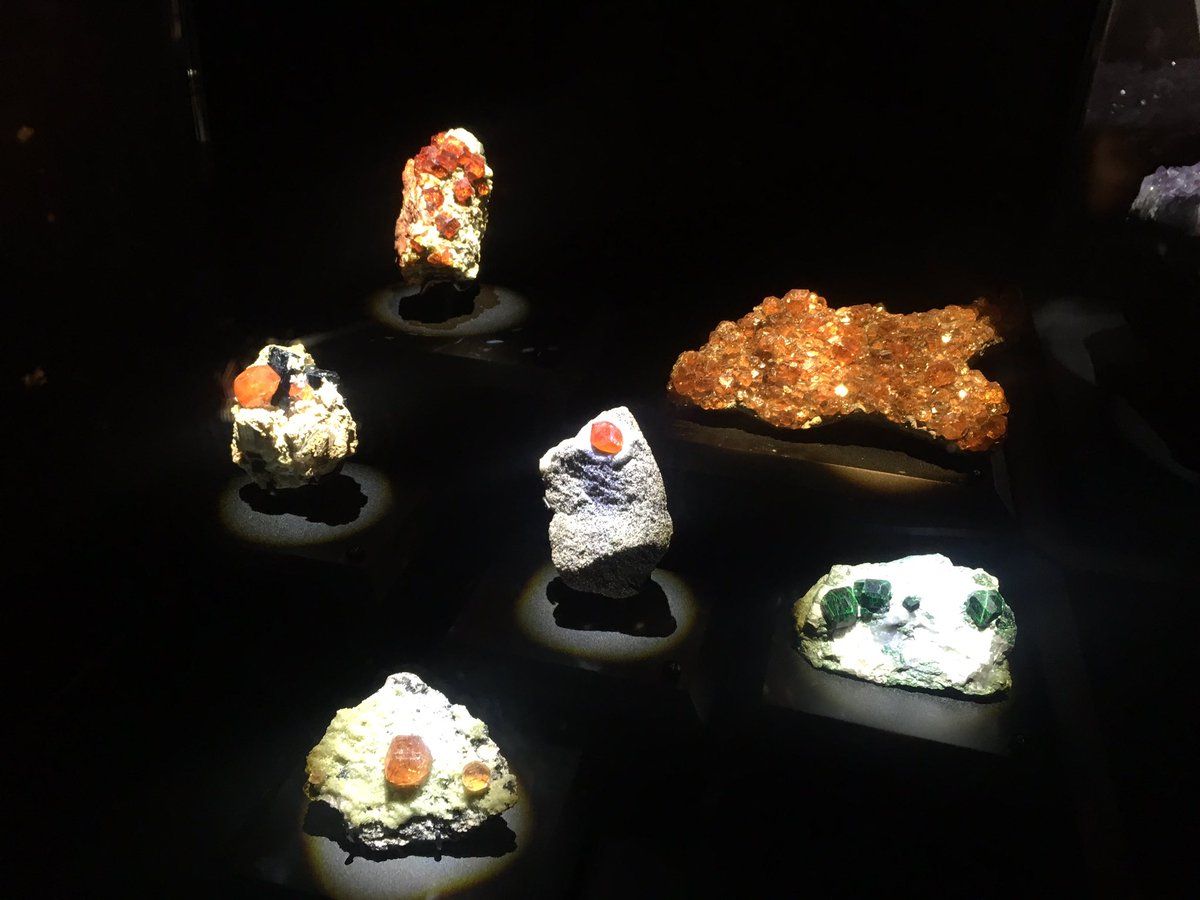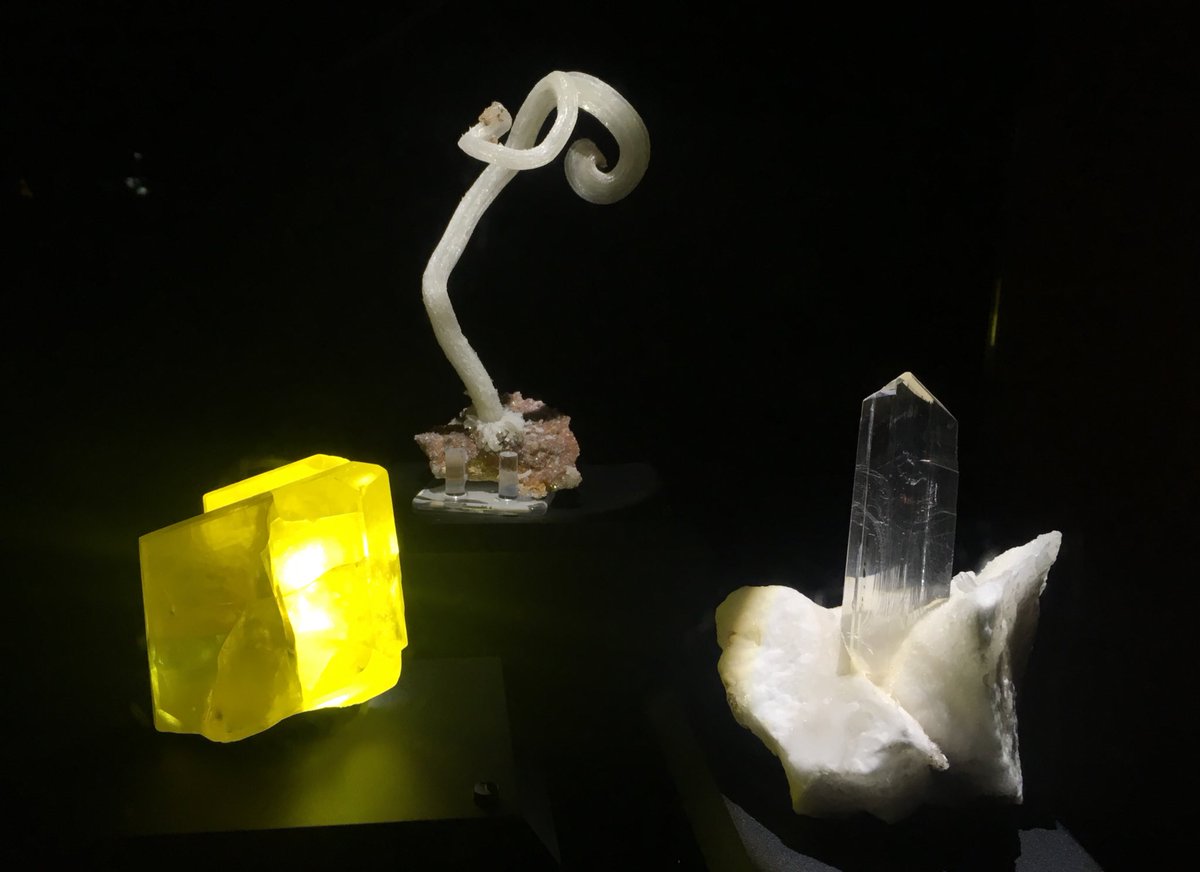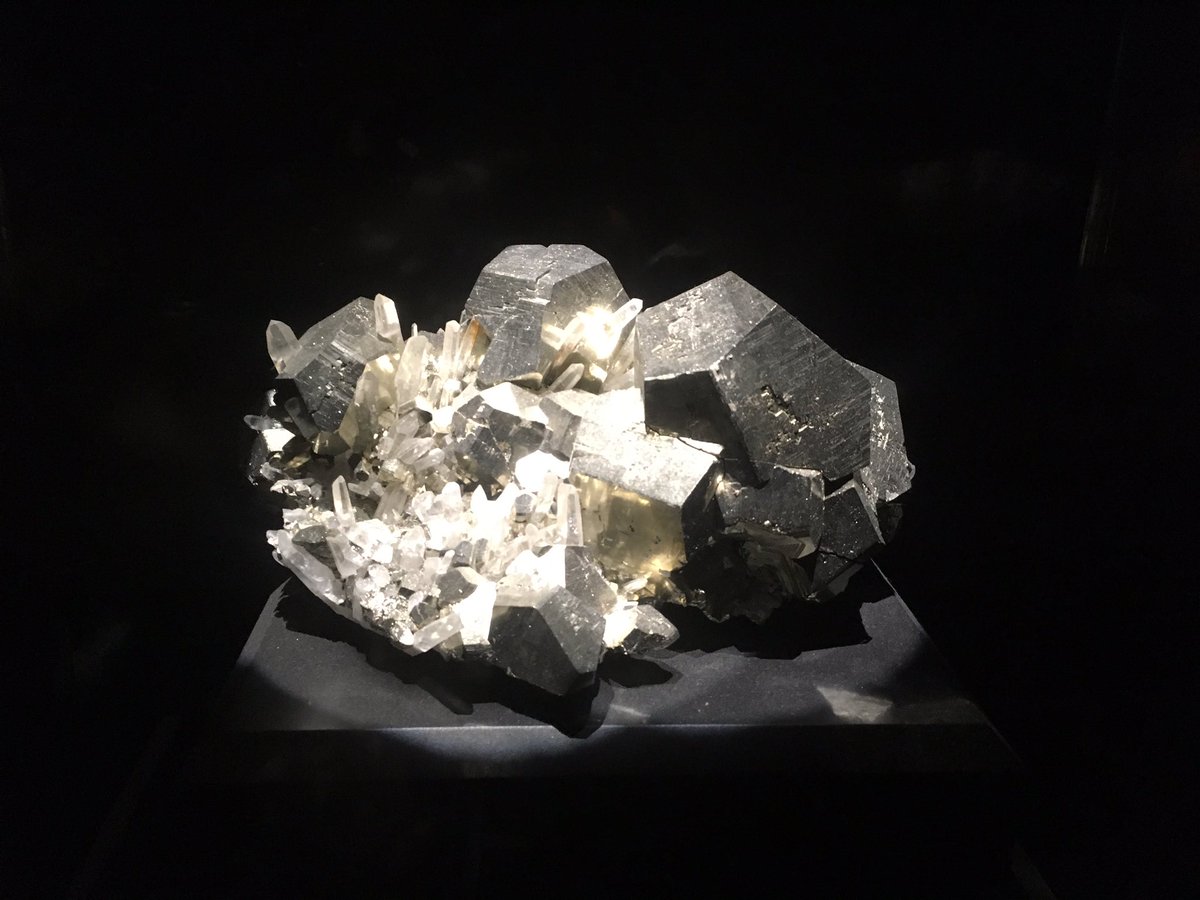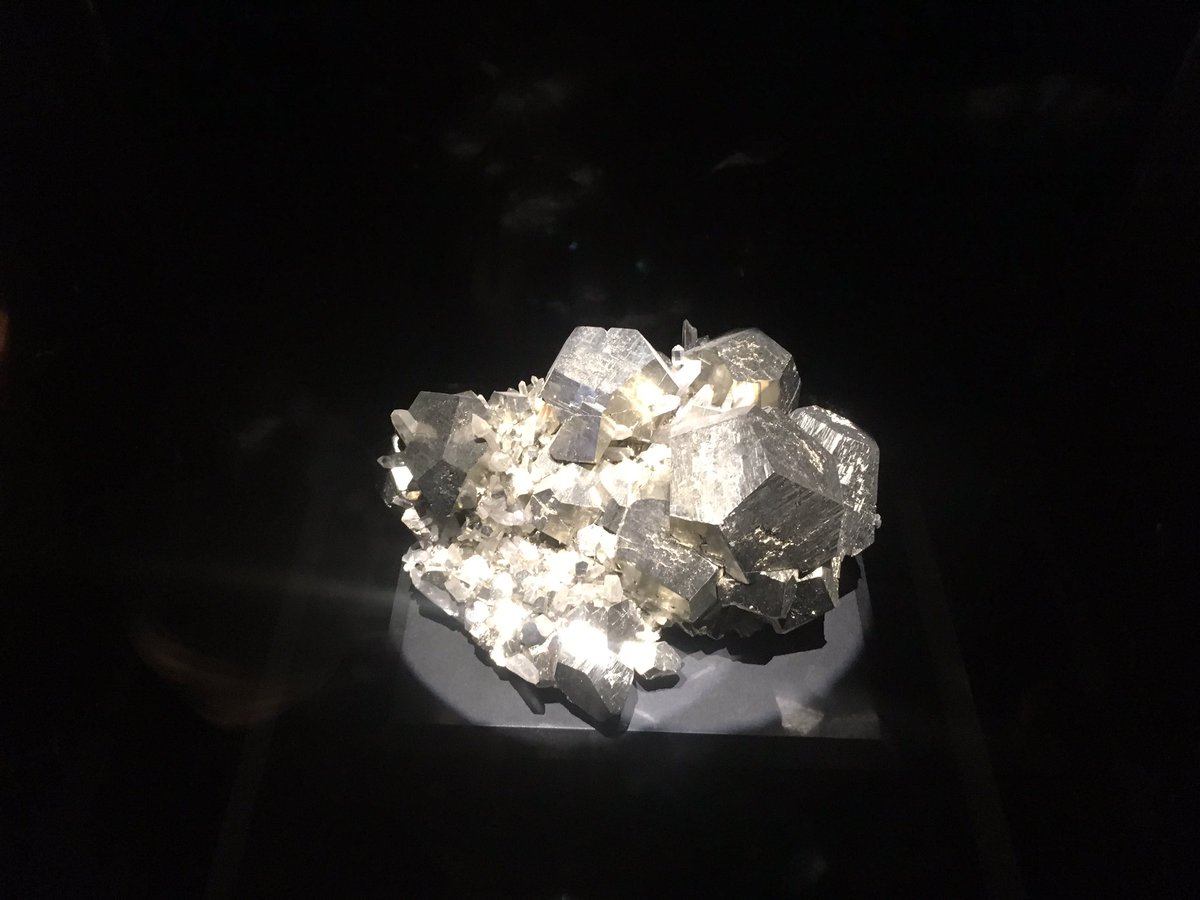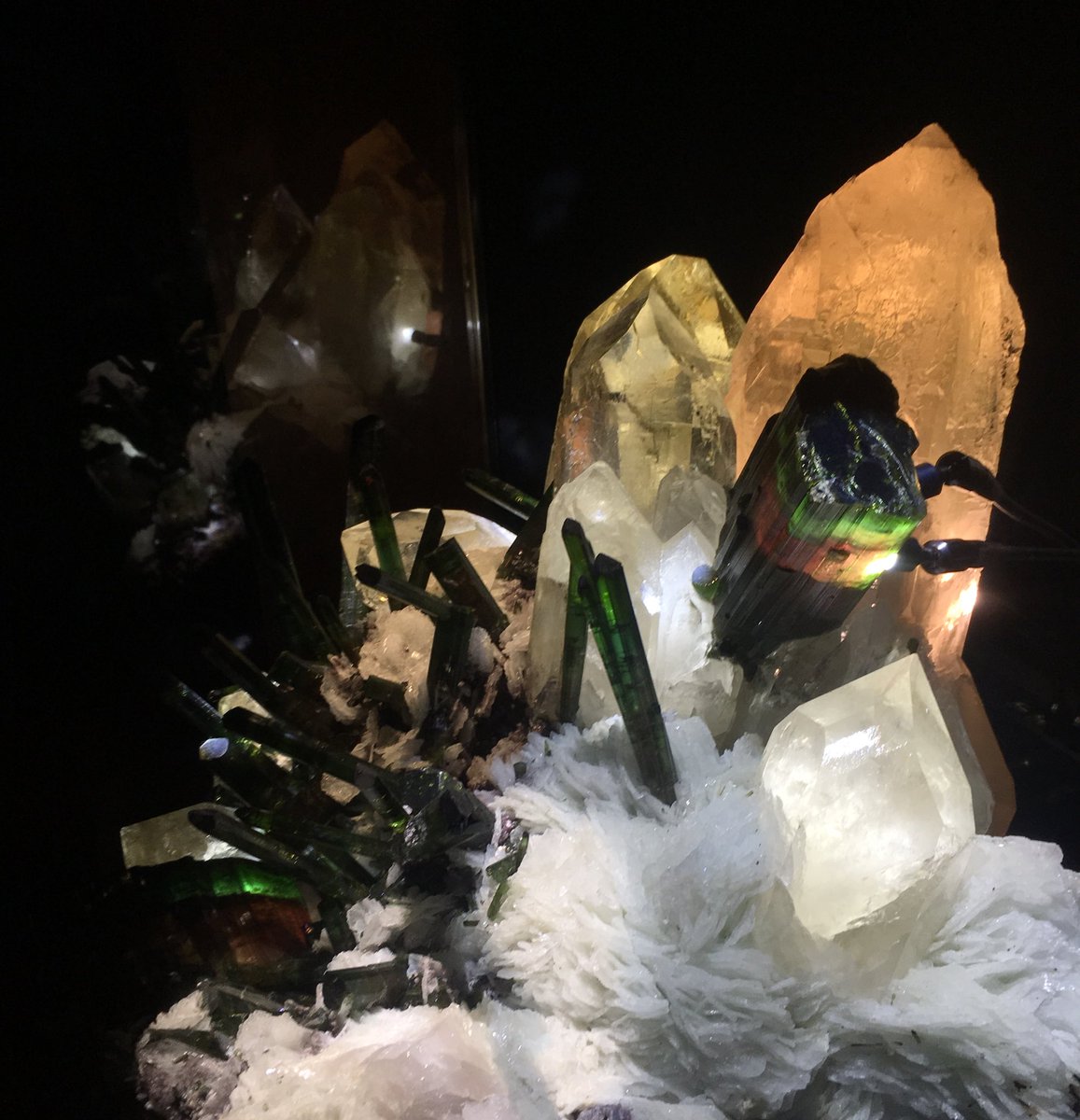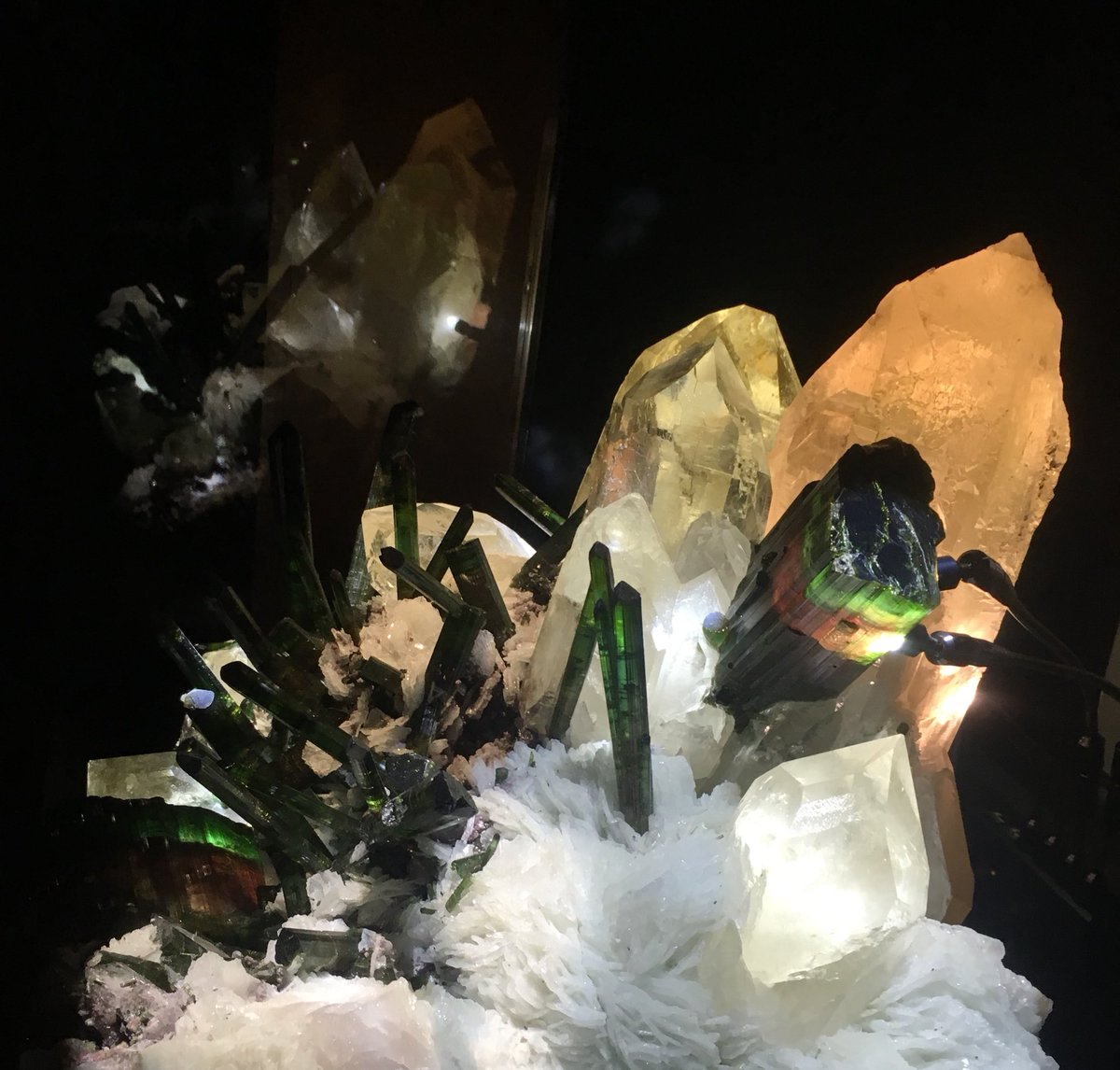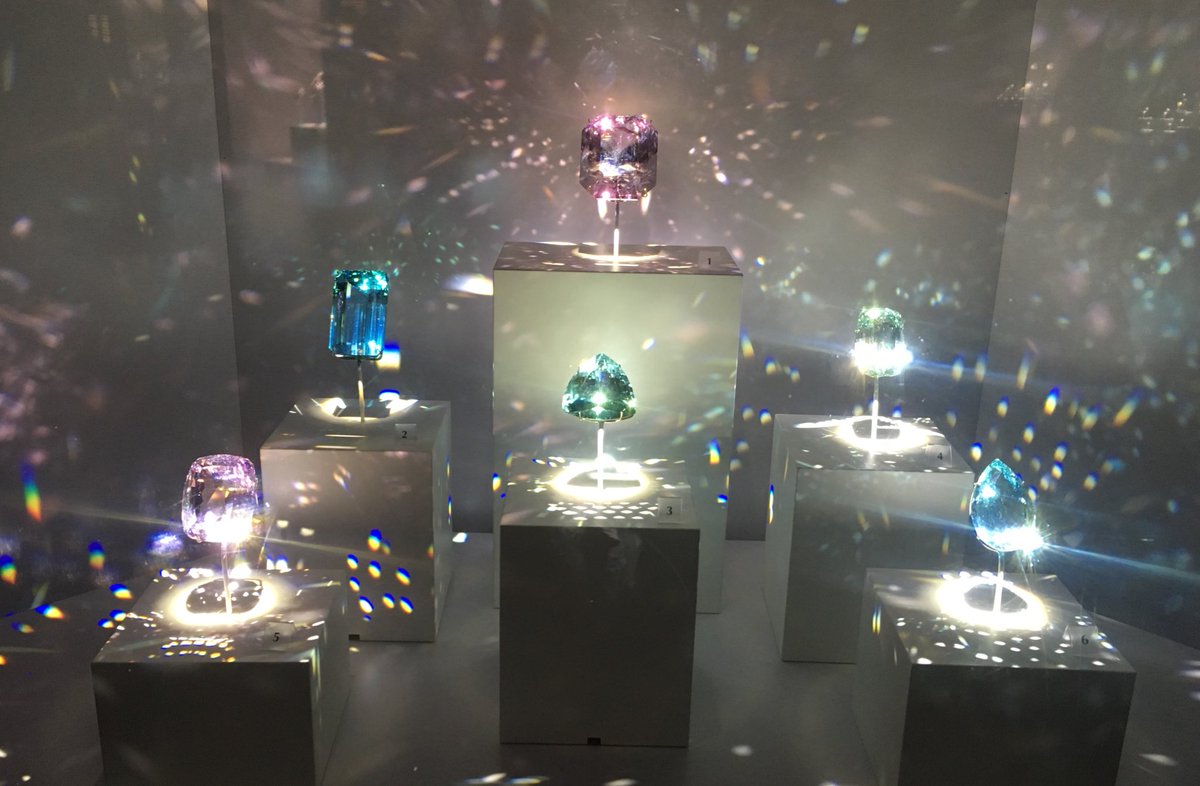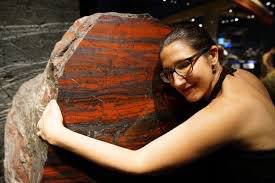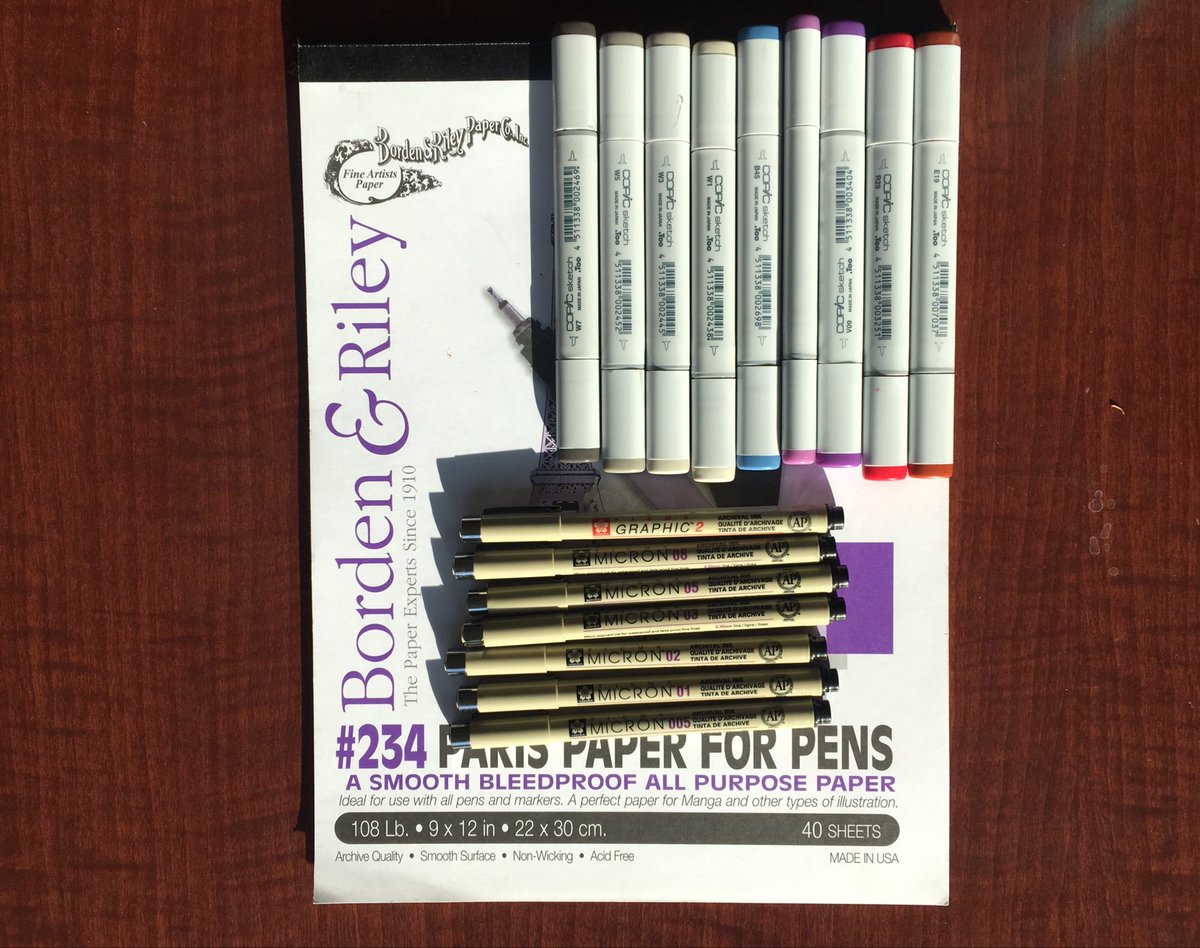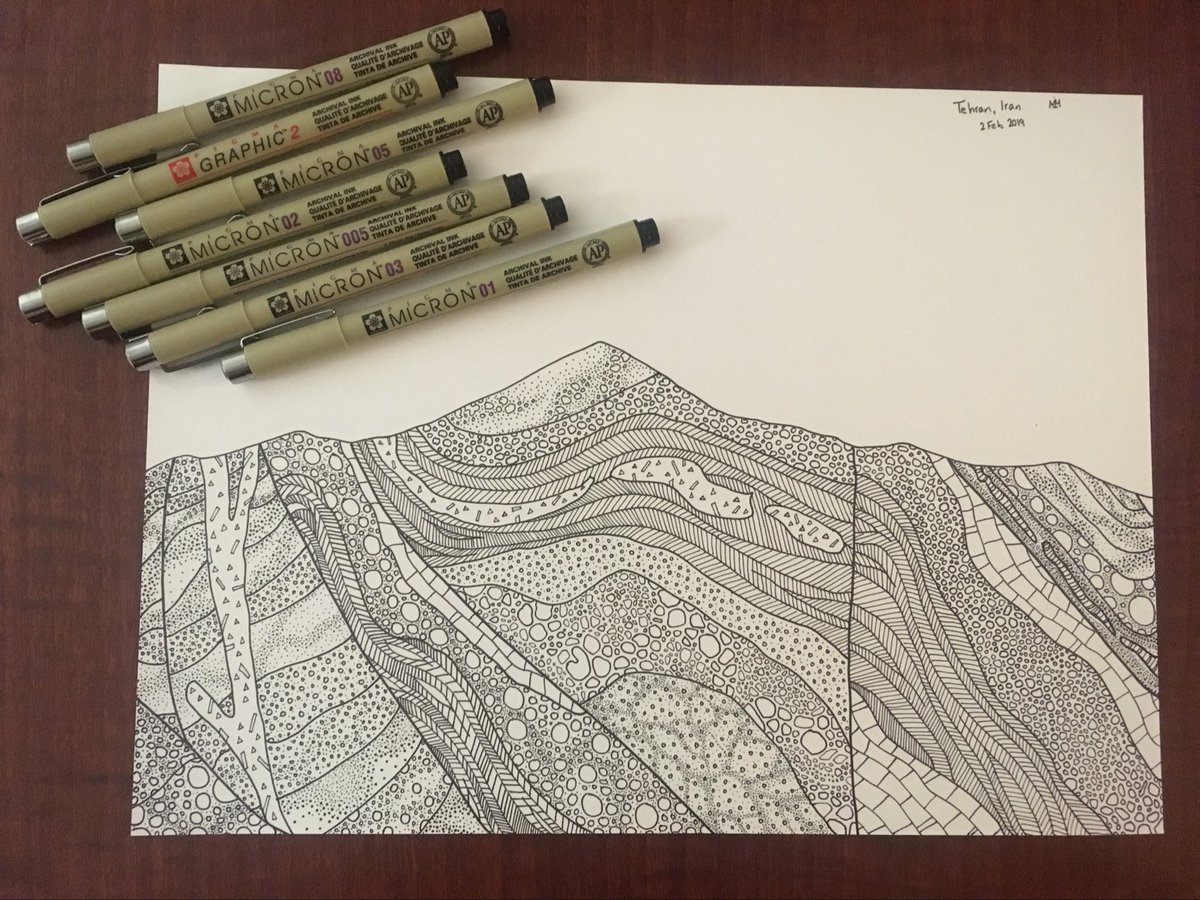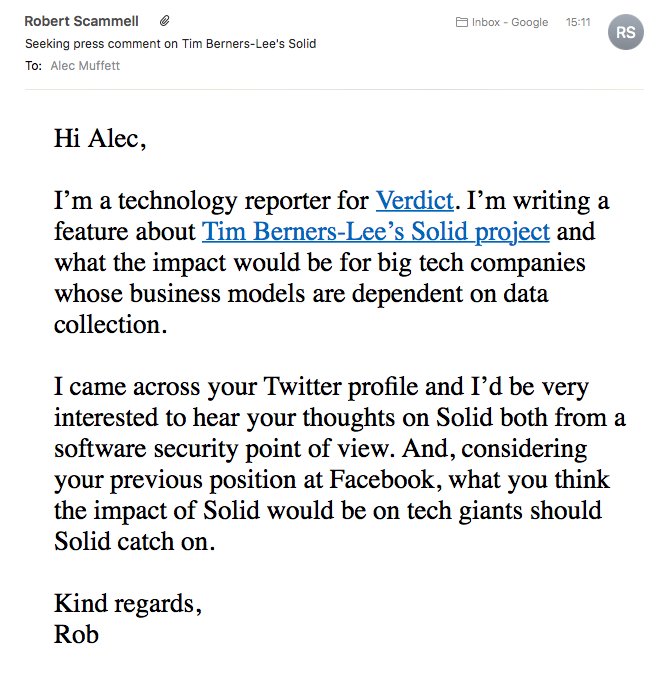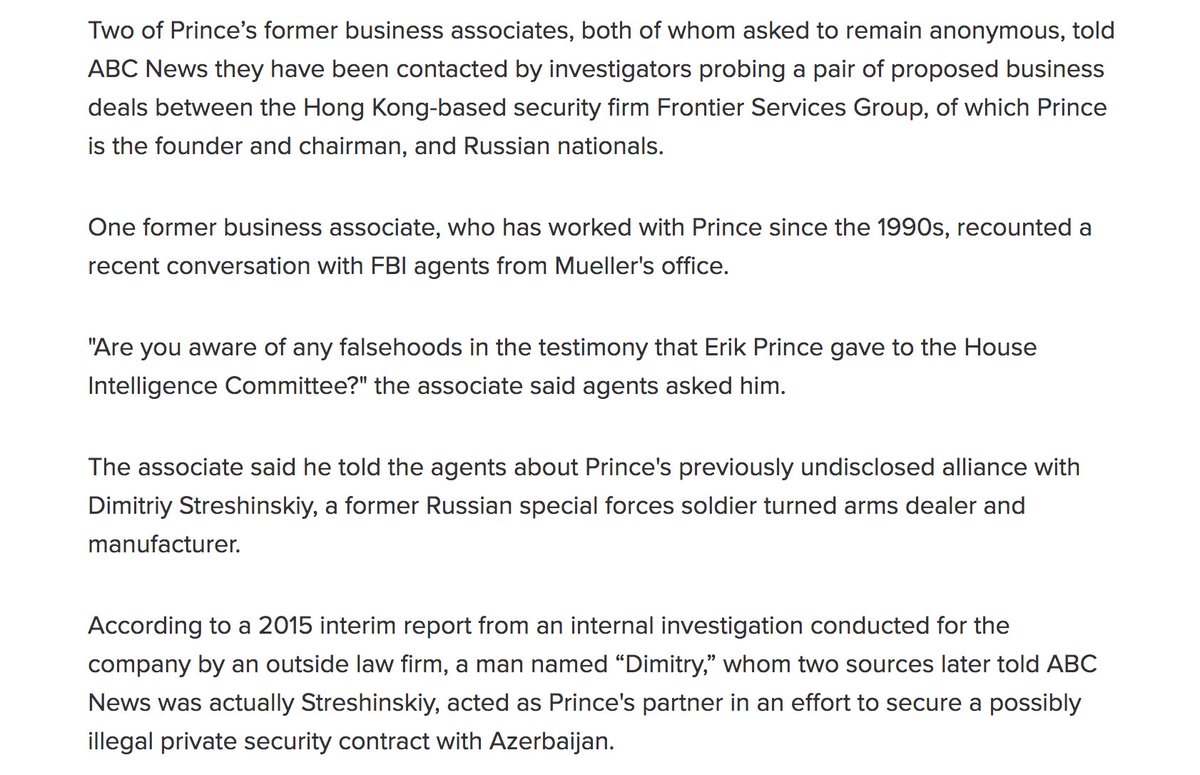I’d heard they have a solid collection of trilobites & the massive cut blue sapphire Siren of Serendip is a special exhibit.
But with the clock ticking down, I raced up the stairs & tumbled into Cullen Hall of Gems & Minerals.
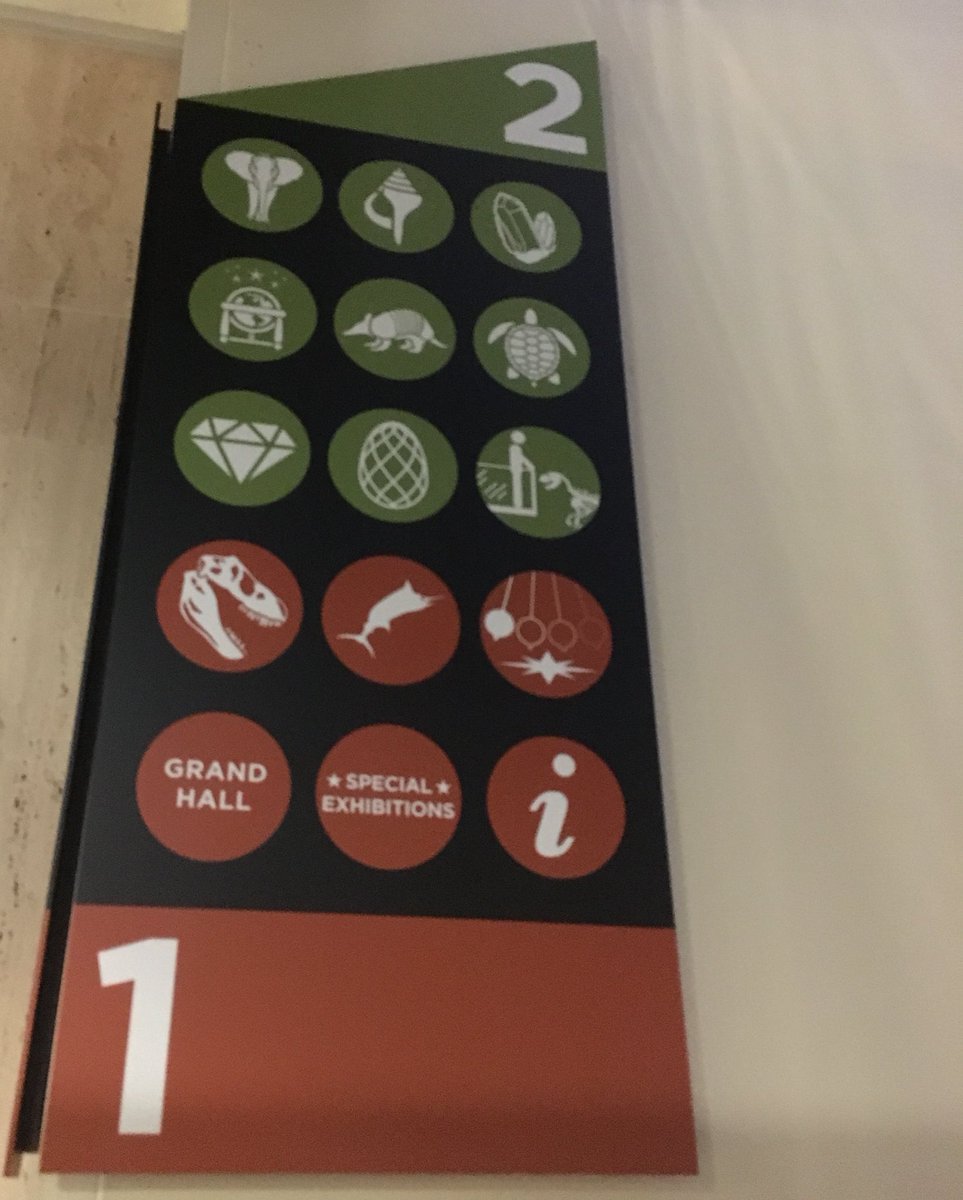
Despite being named for colour-matching saffron, lead makes it firmly “Do Not Lick.”
This particular spikefren is from Adelaide Mine, Tasmania, sticking with “everything cute in Australia can secretly kill you” theme.

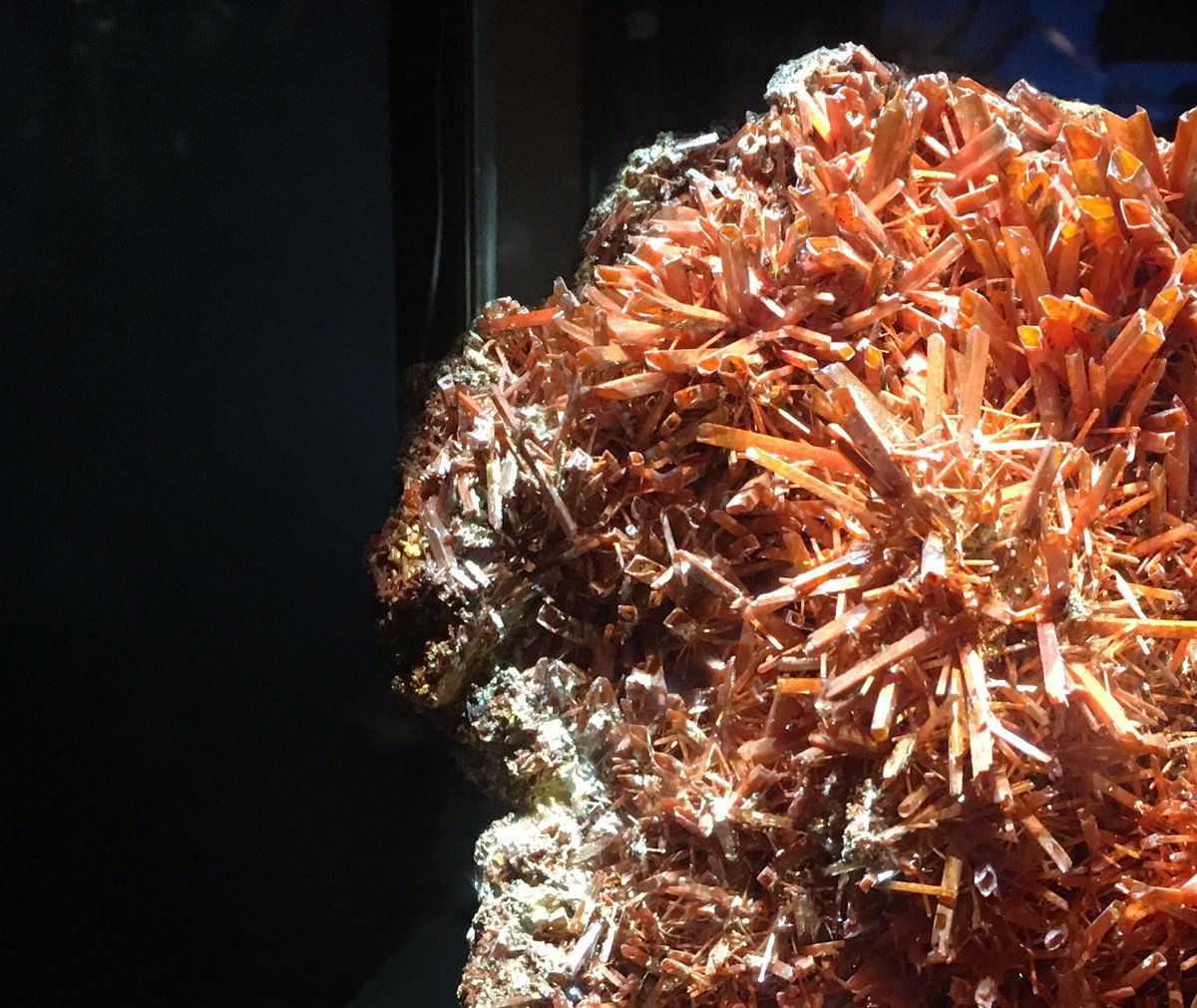
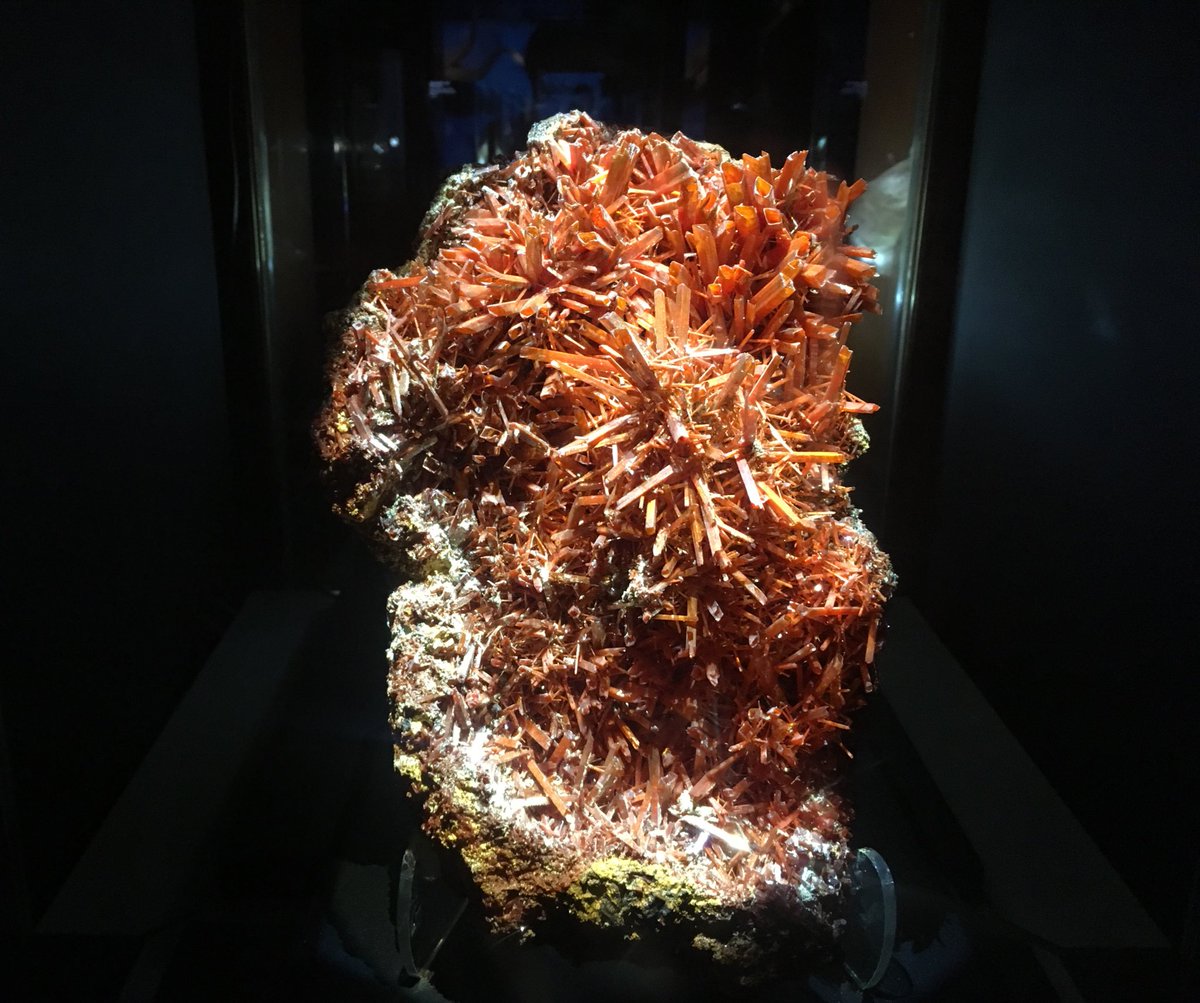
No UV light to see if it’d fluoresce pretty colours for me.
From Nikolaevskiy Mine in Russia where hot sulfide solutions crystallized in limestone caverns.
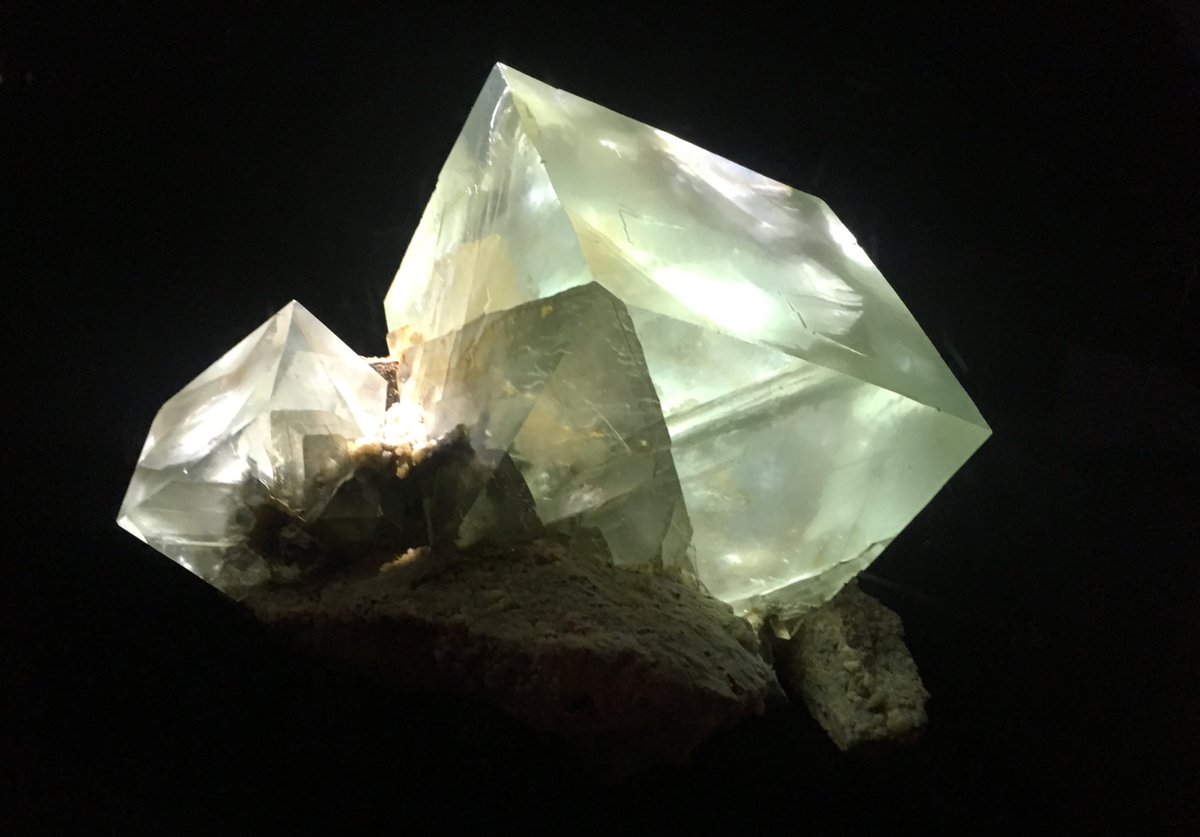
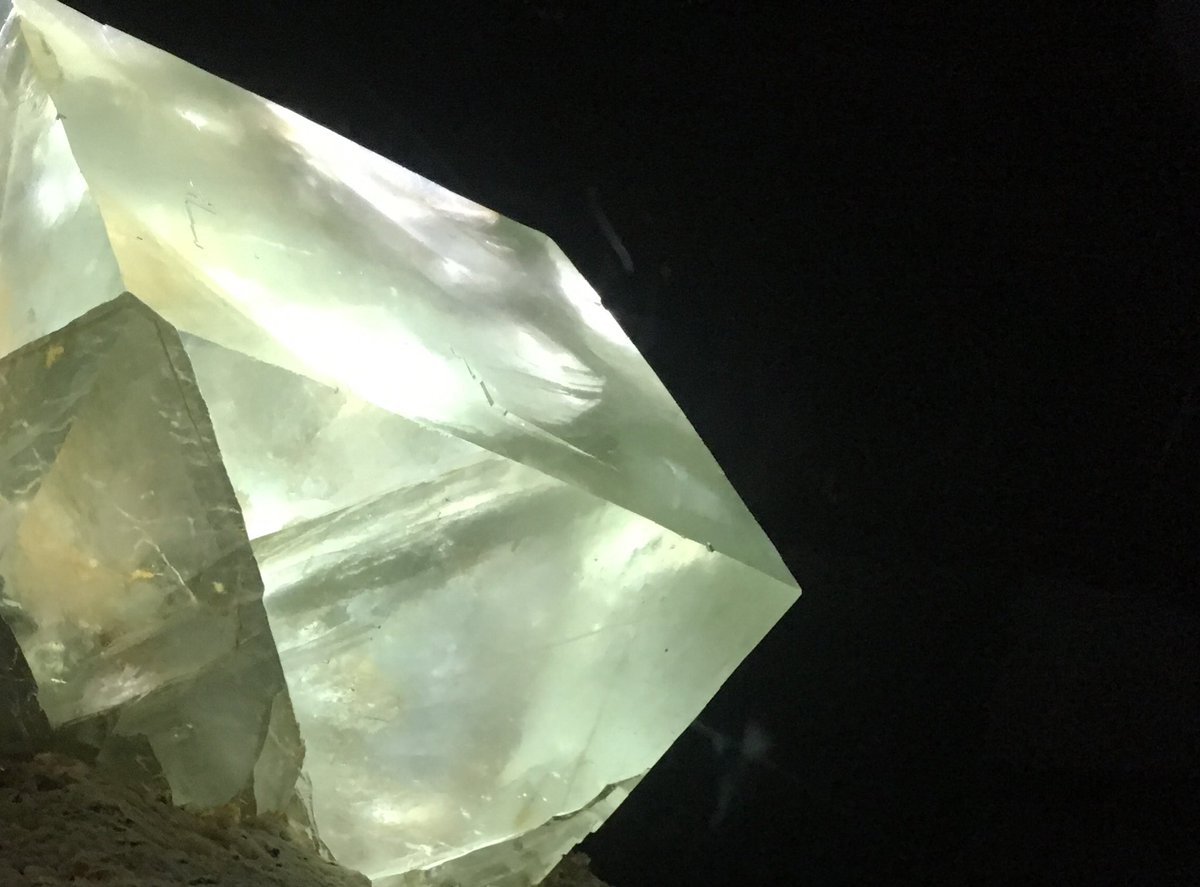
Considering it’s usually an iconic shape (cube, rarely octa or dodeca) & freaking FLUORESCES so it’s easy ID, lickability is “You could, but why bother?”
No licking. So much no licking with lead eeevvvvvverywhere. Such pretty, much bad idea
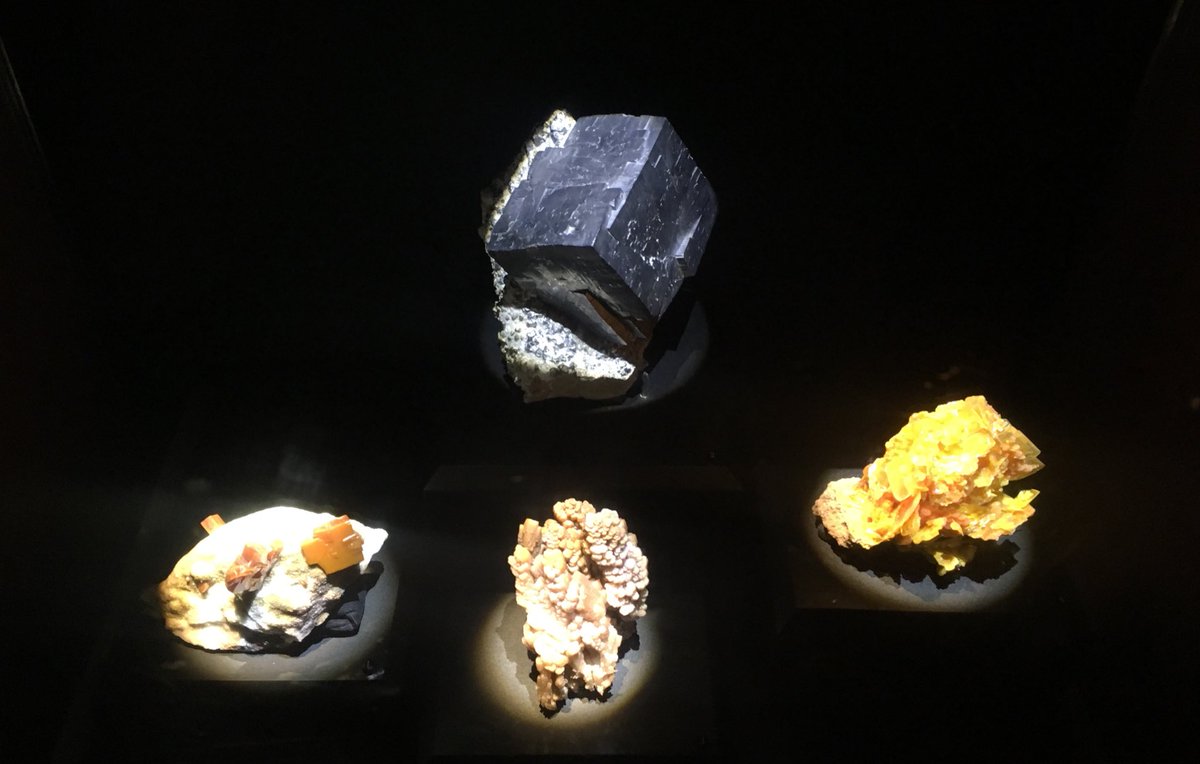
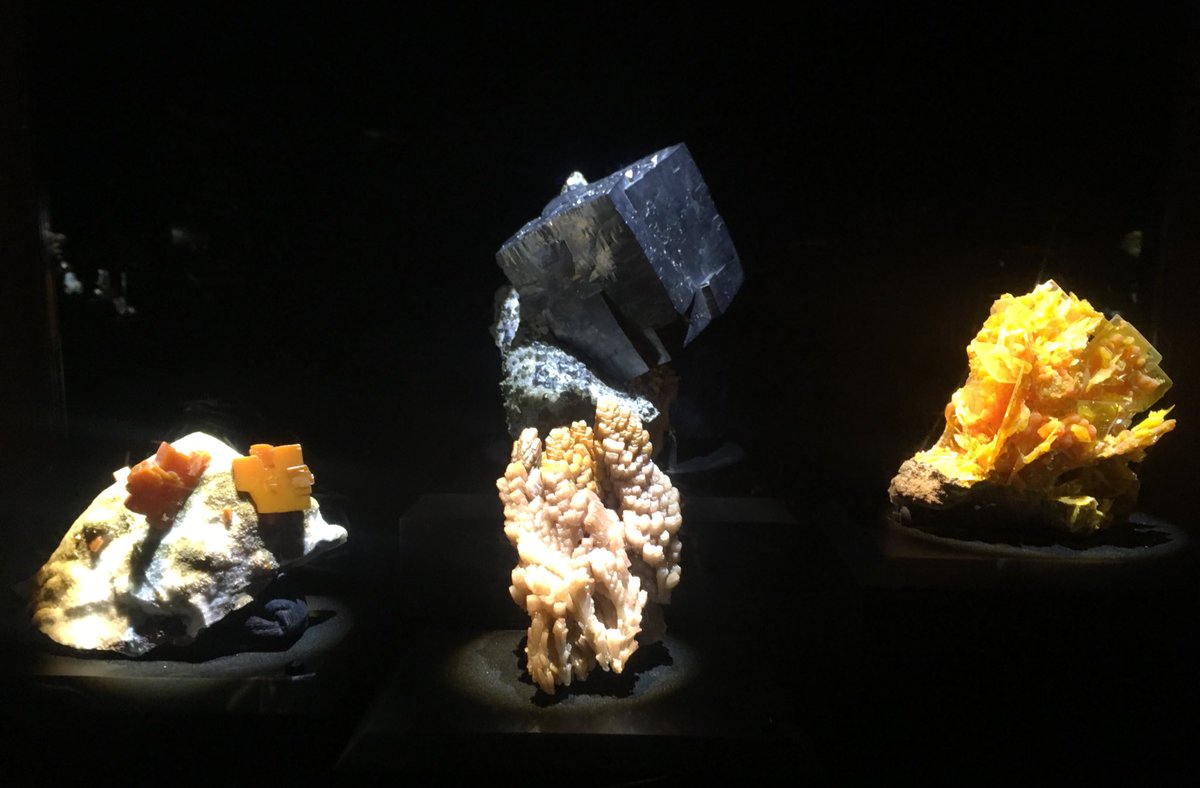
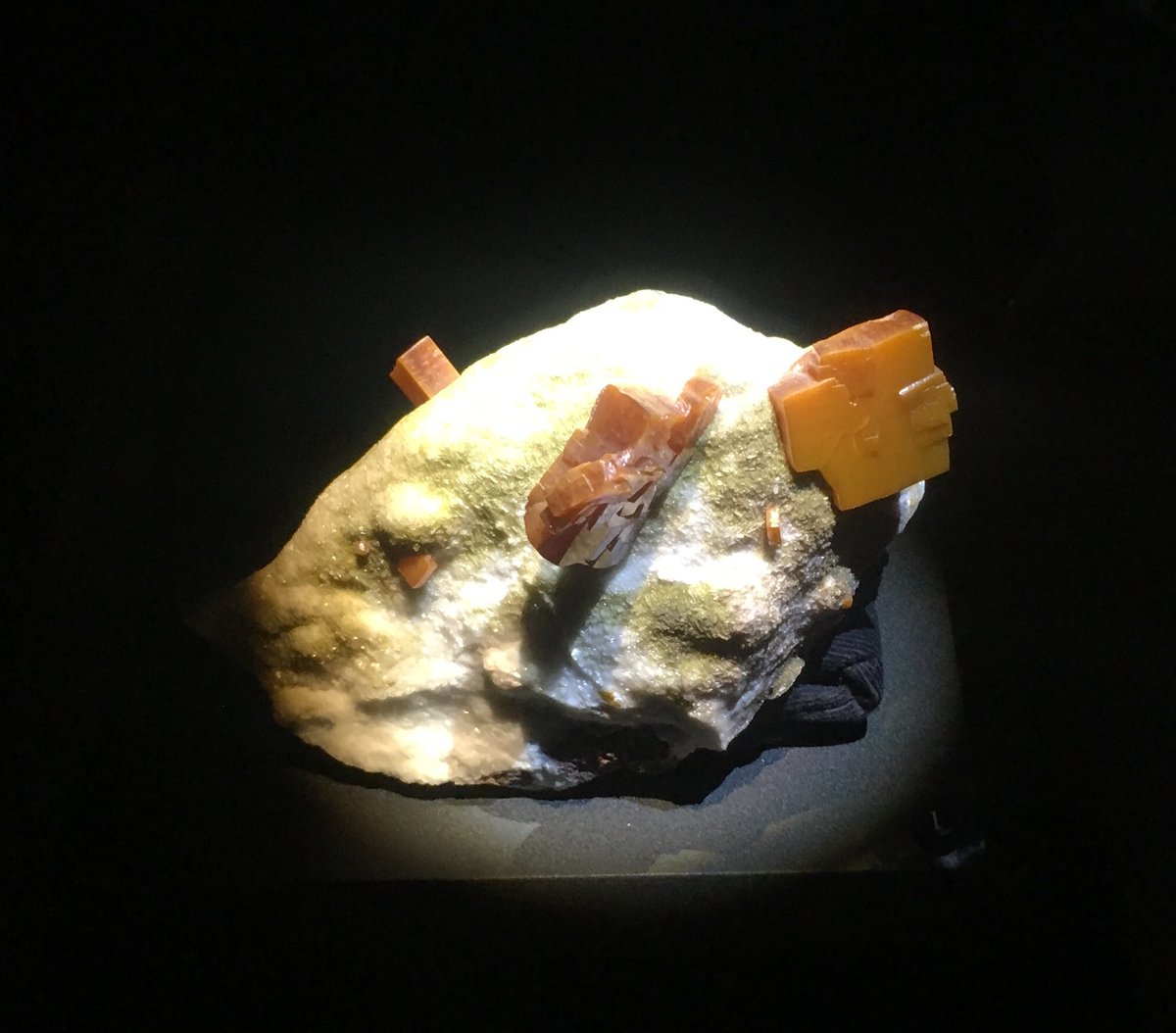
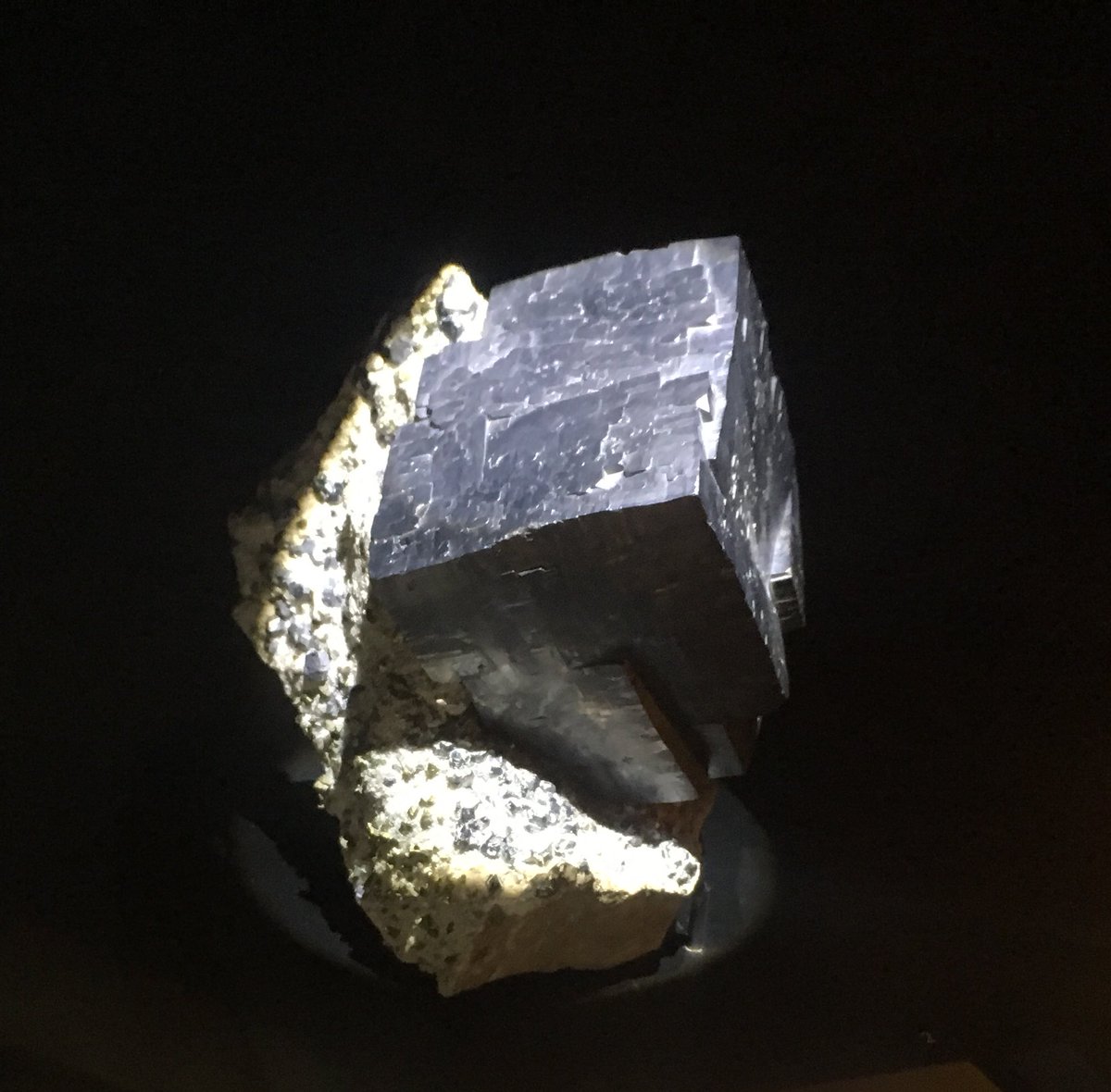
But it does usually grow in sharp chiclet-tabs. Although sometimes it’s round or pyramids.
It’s usually shiiiiny tiny hexes, although it can occasionally be wee rounded barrels & globs (like this).
Pyromirphite & mimetite are the ends of a continuous series of oxidized lead-chloride sibling-minerals.
Heavy. Soft-ish. Cubical (yes, it grew like that; that’s the mineral equivalent of #IWokeUpLikeThis) or rarely octahedral. Lead-grey, metallic but tarnishes dull.
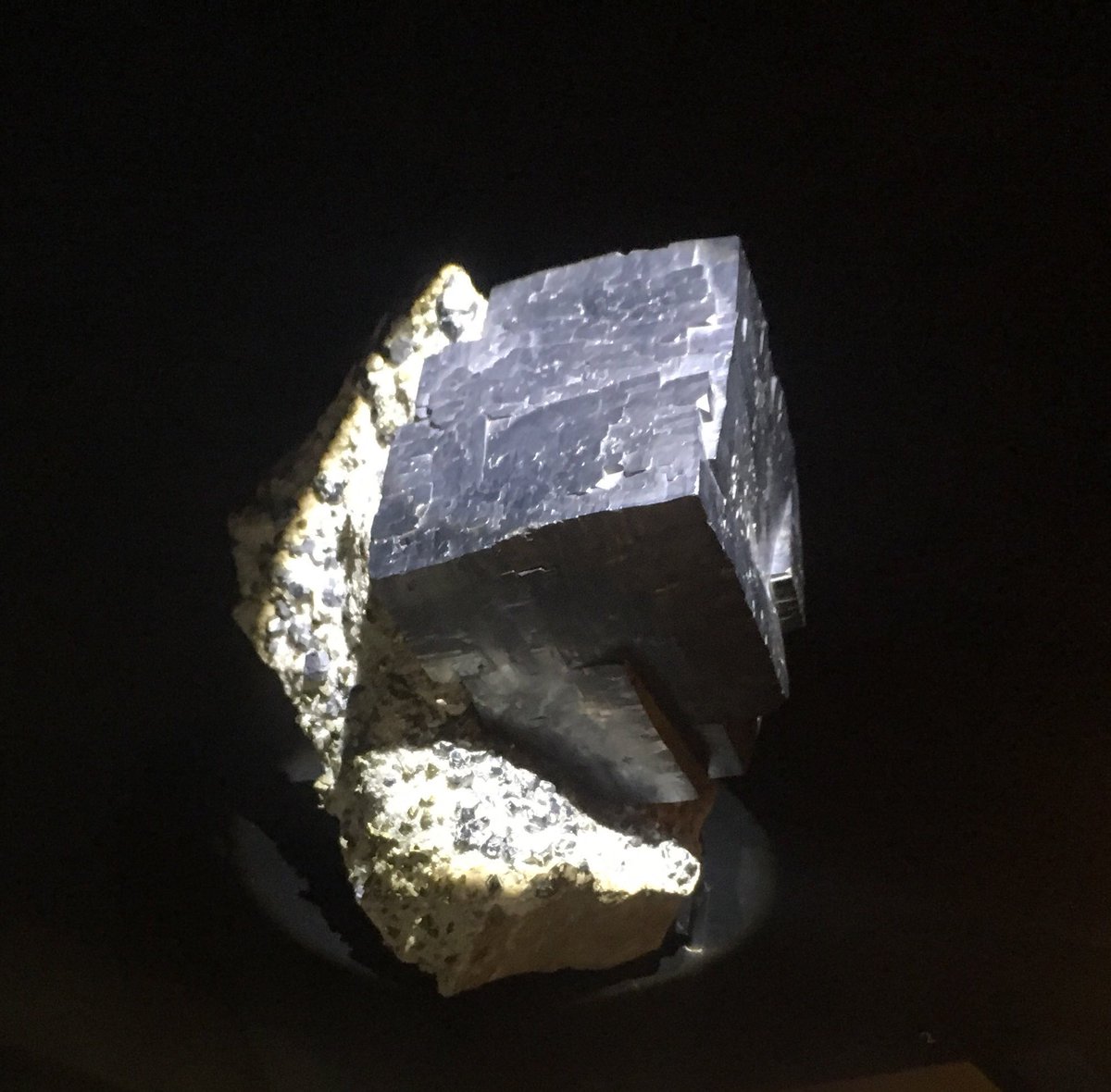
In juuuuust the right conditions, #wulfenite can precipitate out of volcanic vent gases. Do not huff.
Cerussite is lead carbonate, a common weathering product of oxidizing galena, & almost always grows as twins.
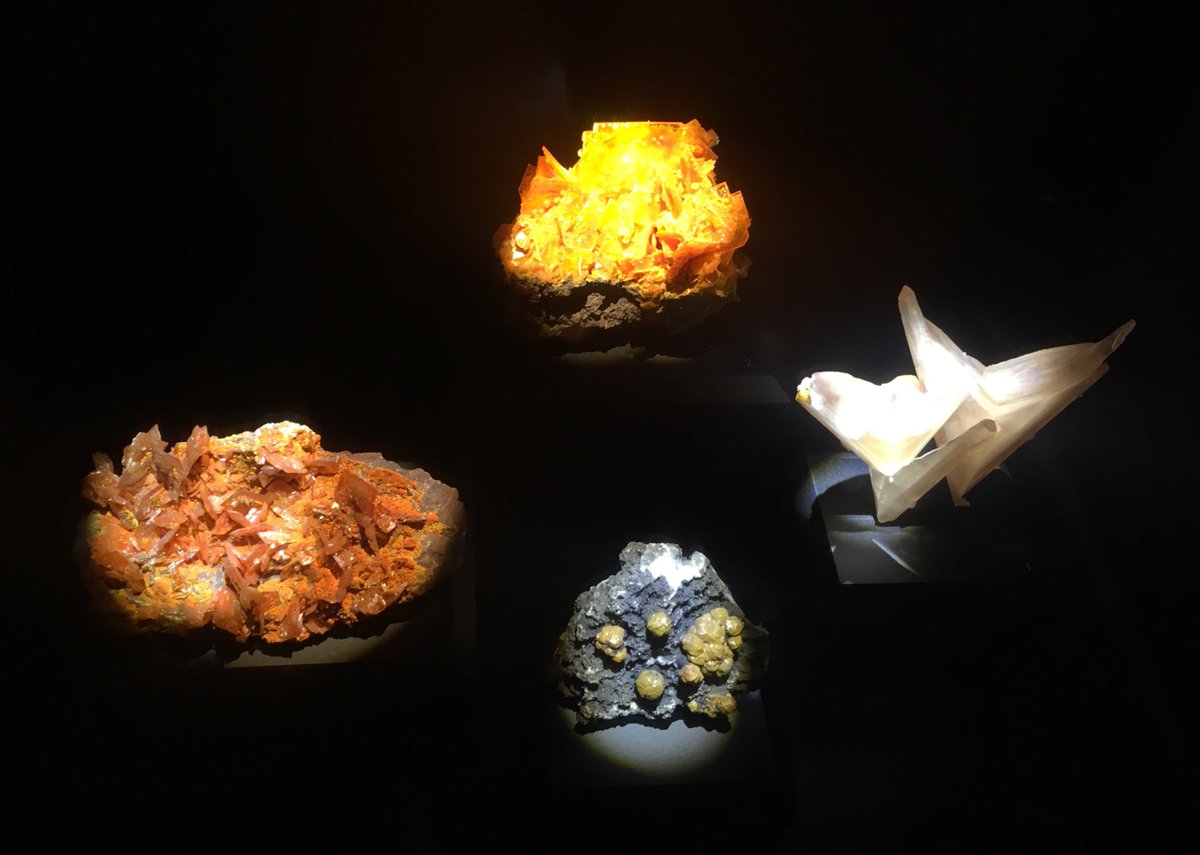
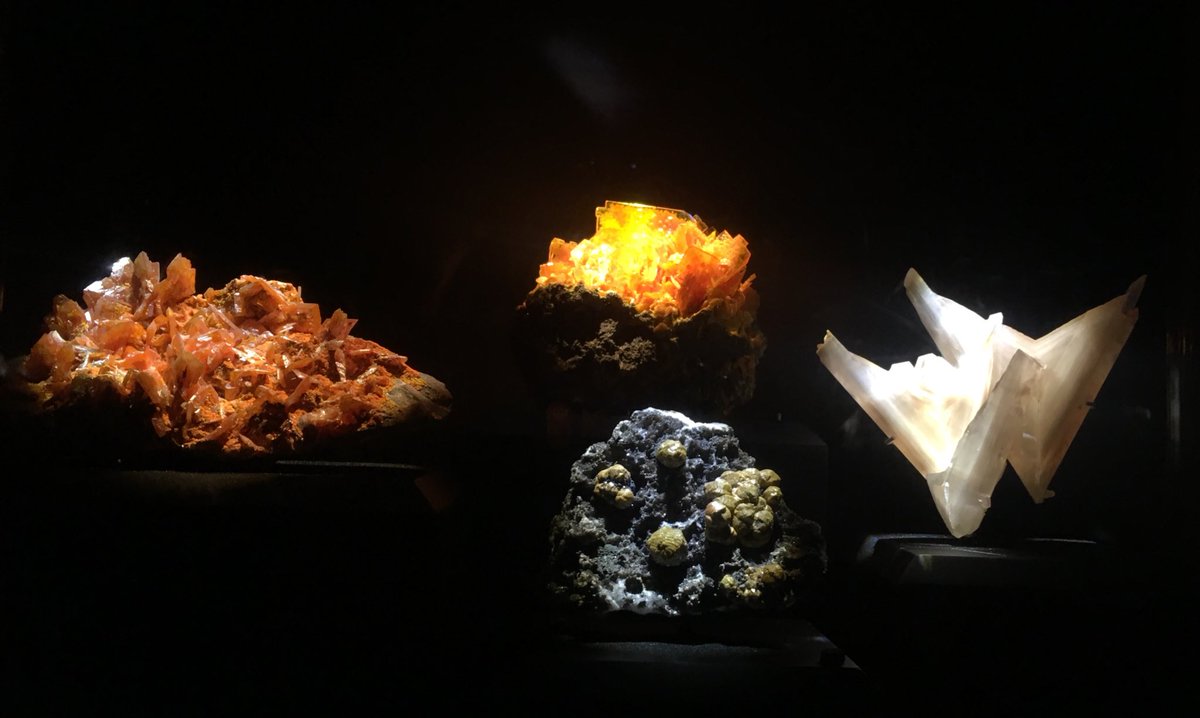
It can be clear, white, grey, brown, blue, or green; shiny to pearly to earthy
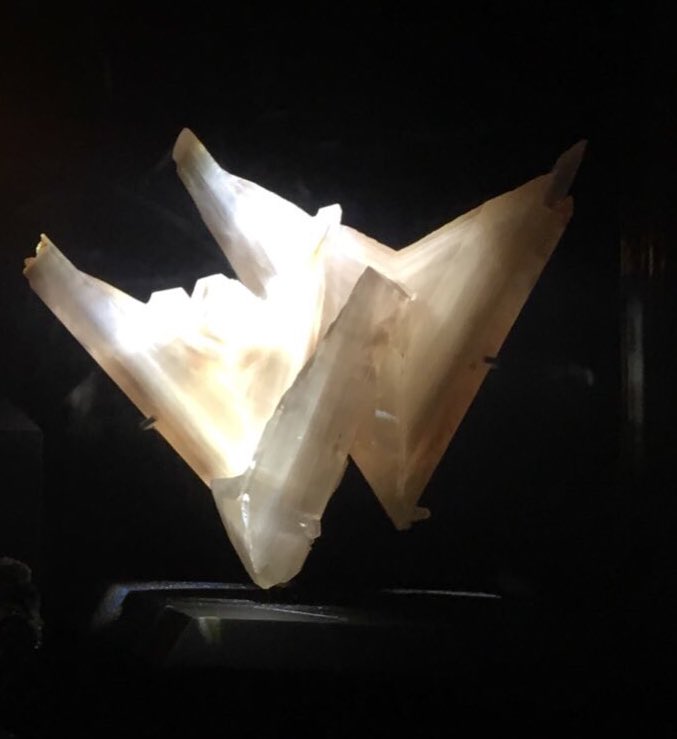
I’m not really sure why these frens are sharing a case unless it’s maybe showcasing vibrantly-coloured elongated prismatic crystals?
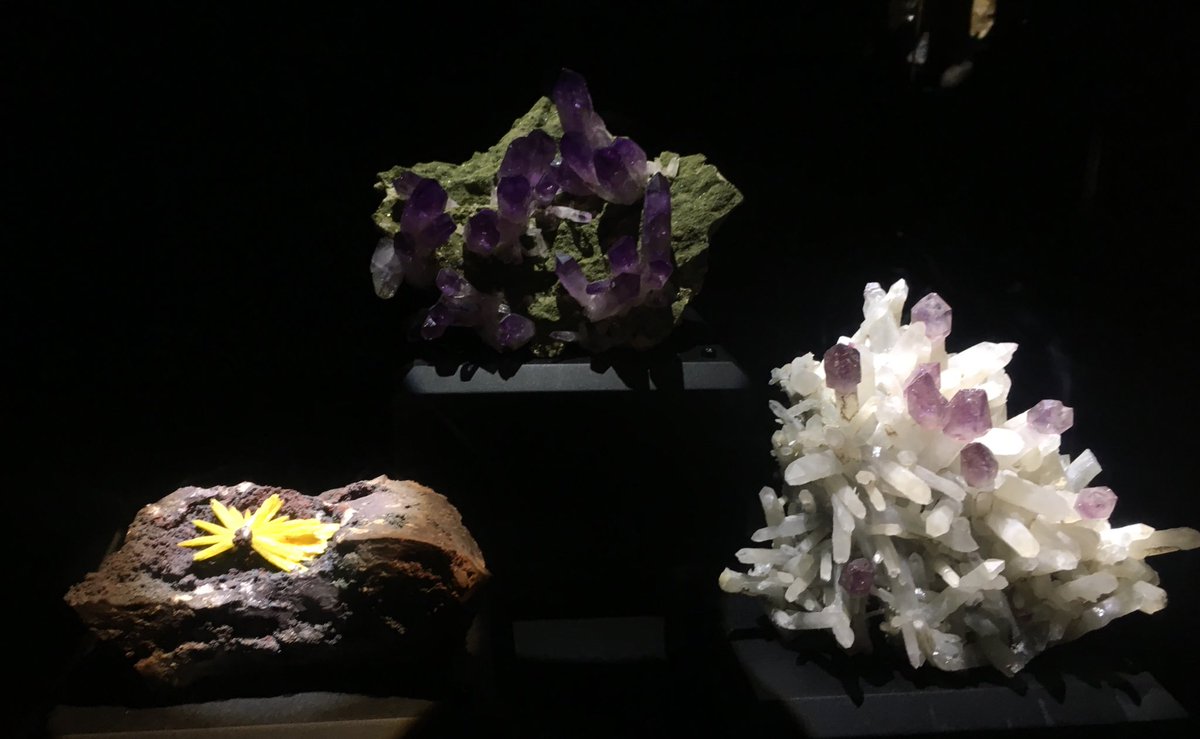

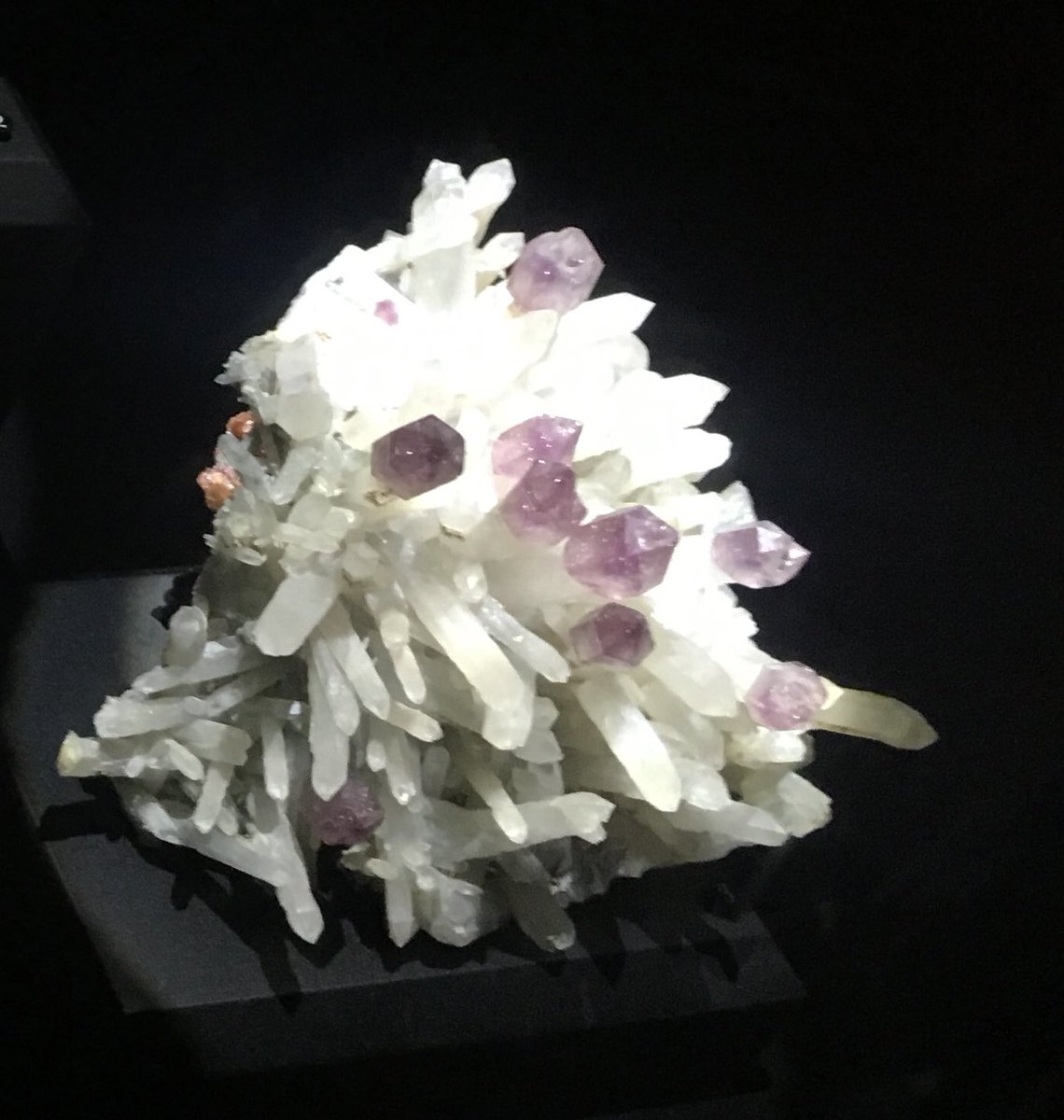
It’s clear/yellow & grows in splays.
Coolest feature?
Proton transfer tunnels down the crystal axis. Go go quantum teleportation!
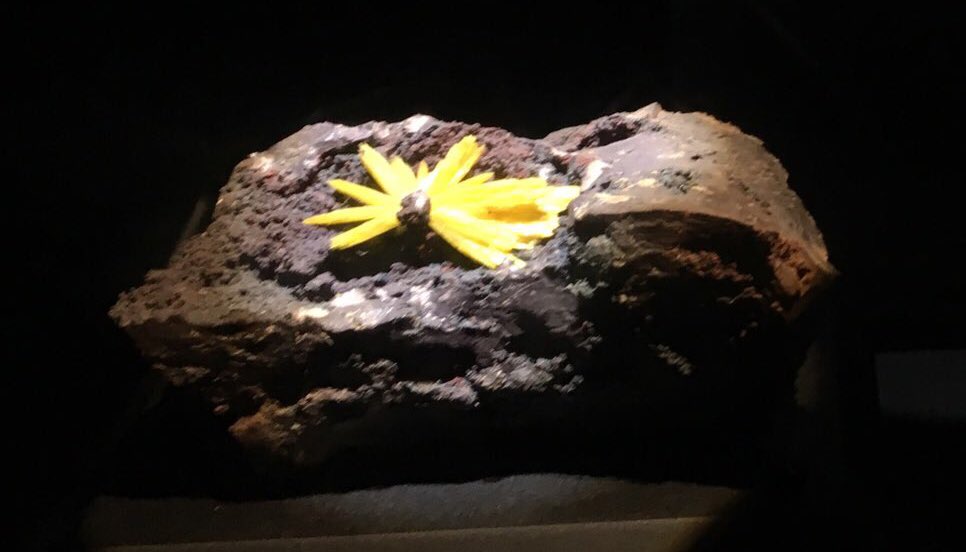
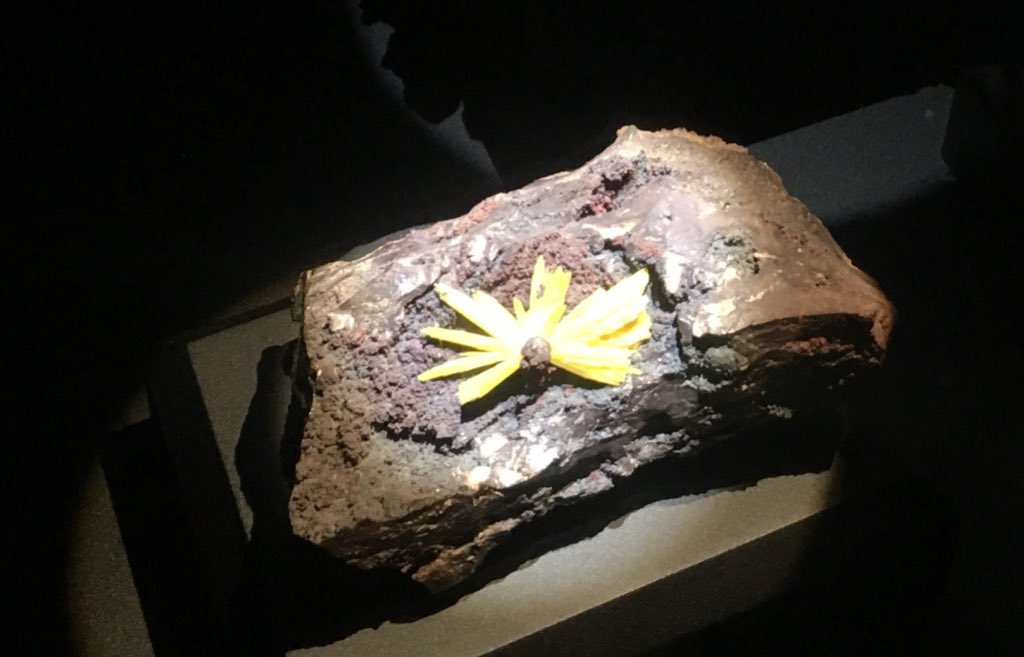
Notice the pretty rainbow in the bottom right — the mineral is a dispersive prism refracting light by wavelength to split it into a spectrum.

I took so many pix that all turned out “eh” at best, but I love this unpopular cousin of emerald. It’s always great colours (shiny green to blue), streaks green (eee!), has freaking perfect cleavage (breaks pretty)

Sphalerite is from the Greek “treacherous” for masquerading as Galena, but since its zinc x sulfur, producing no lead. It’s typically clear (ahahaha) unless contaminated with lead (aka #Marmatite).
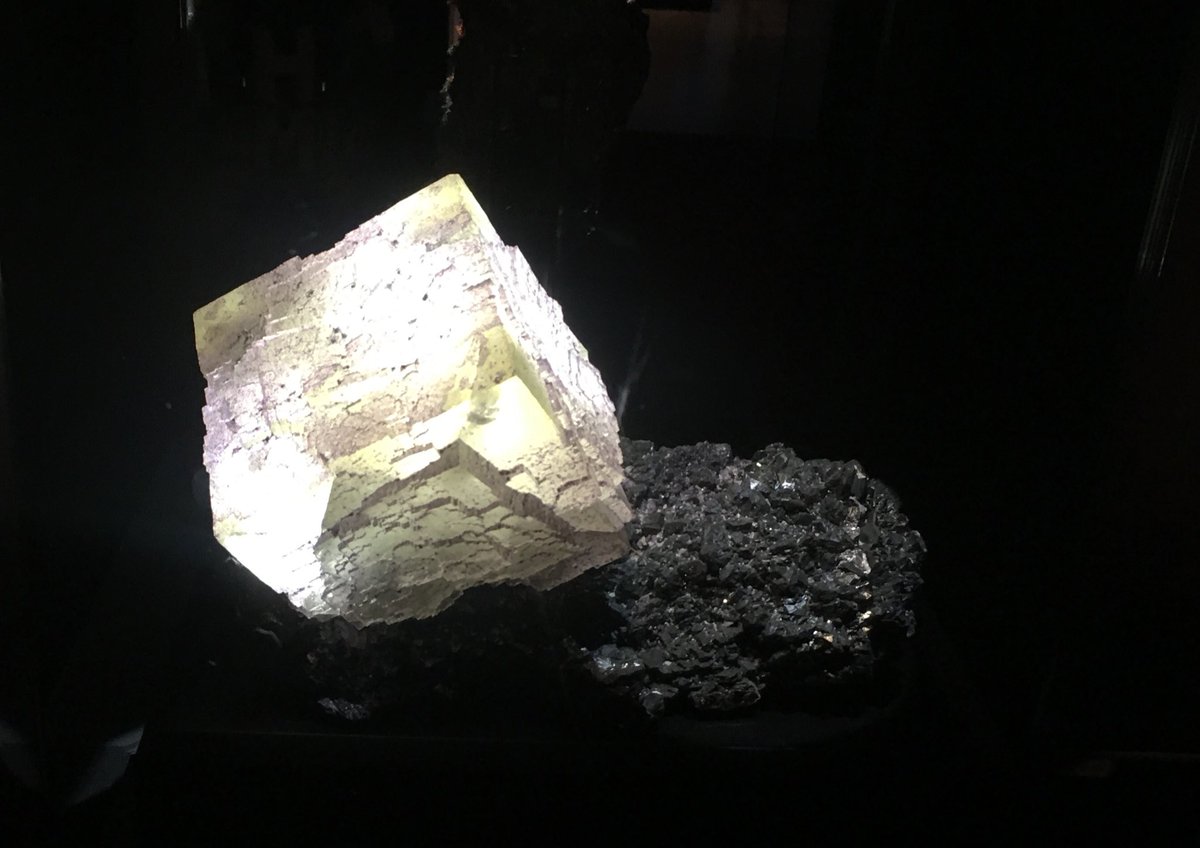
I mean, we’ve ID’d ~3800 minerals with another +30-50 added & -1-2 discredited per year. It’s a mess.
Aquamarine is blue #Beryl, beryllium aluminum silicate. It’s hard & heavy & while it doesn’t taste like anything more than “bland-neutral” it also isn’t dangerous which is good ‘cause it looks so lickable.
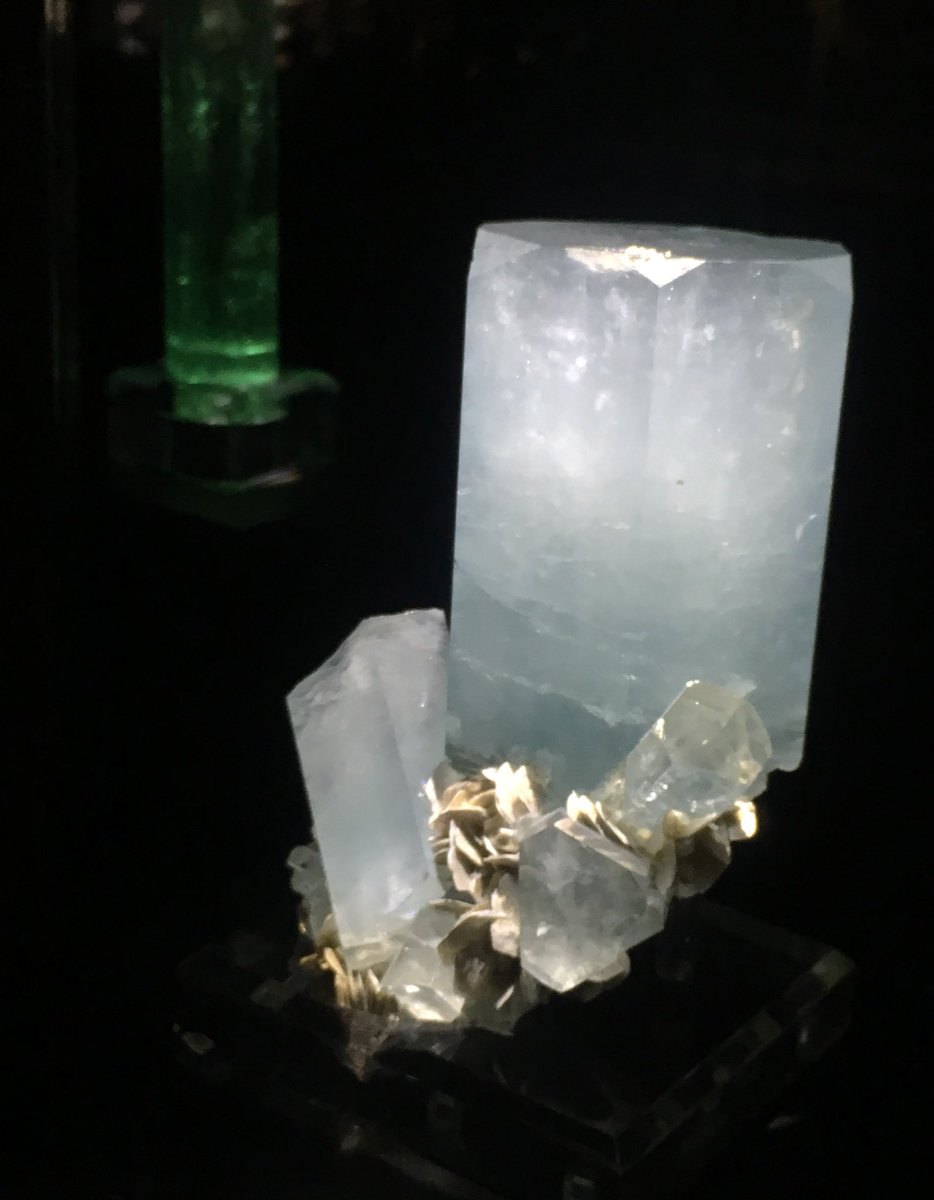
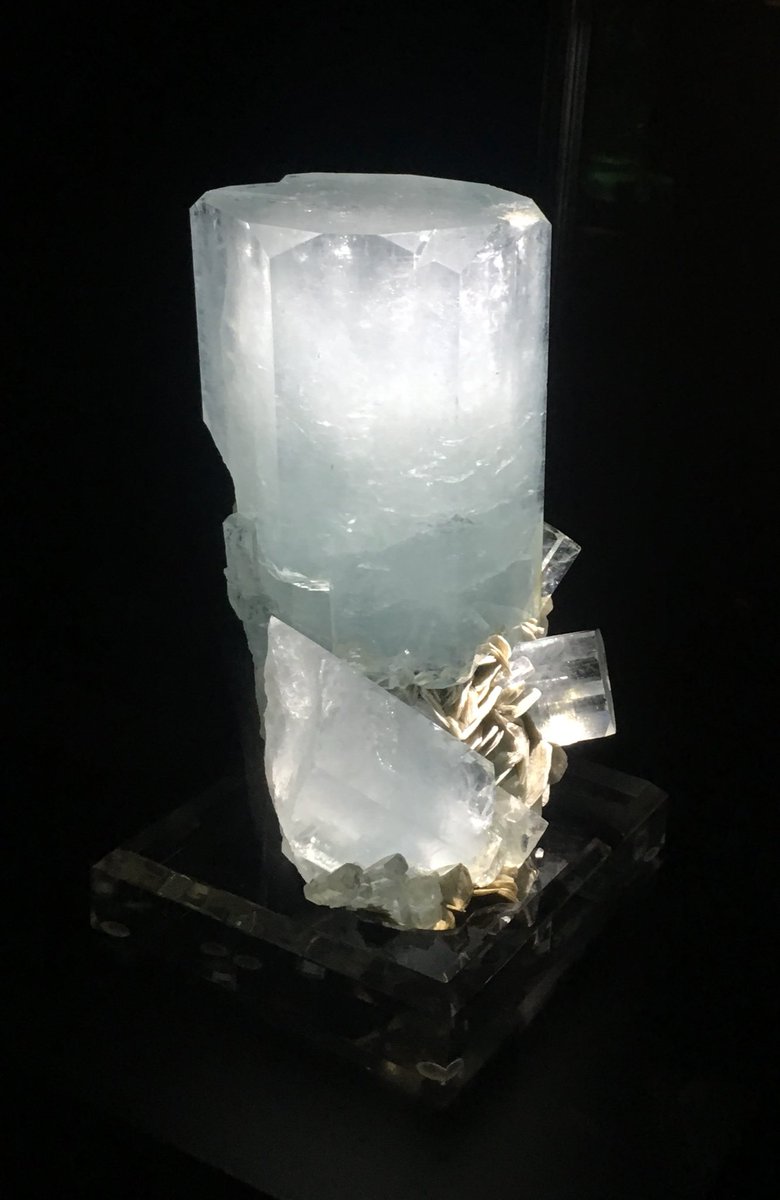
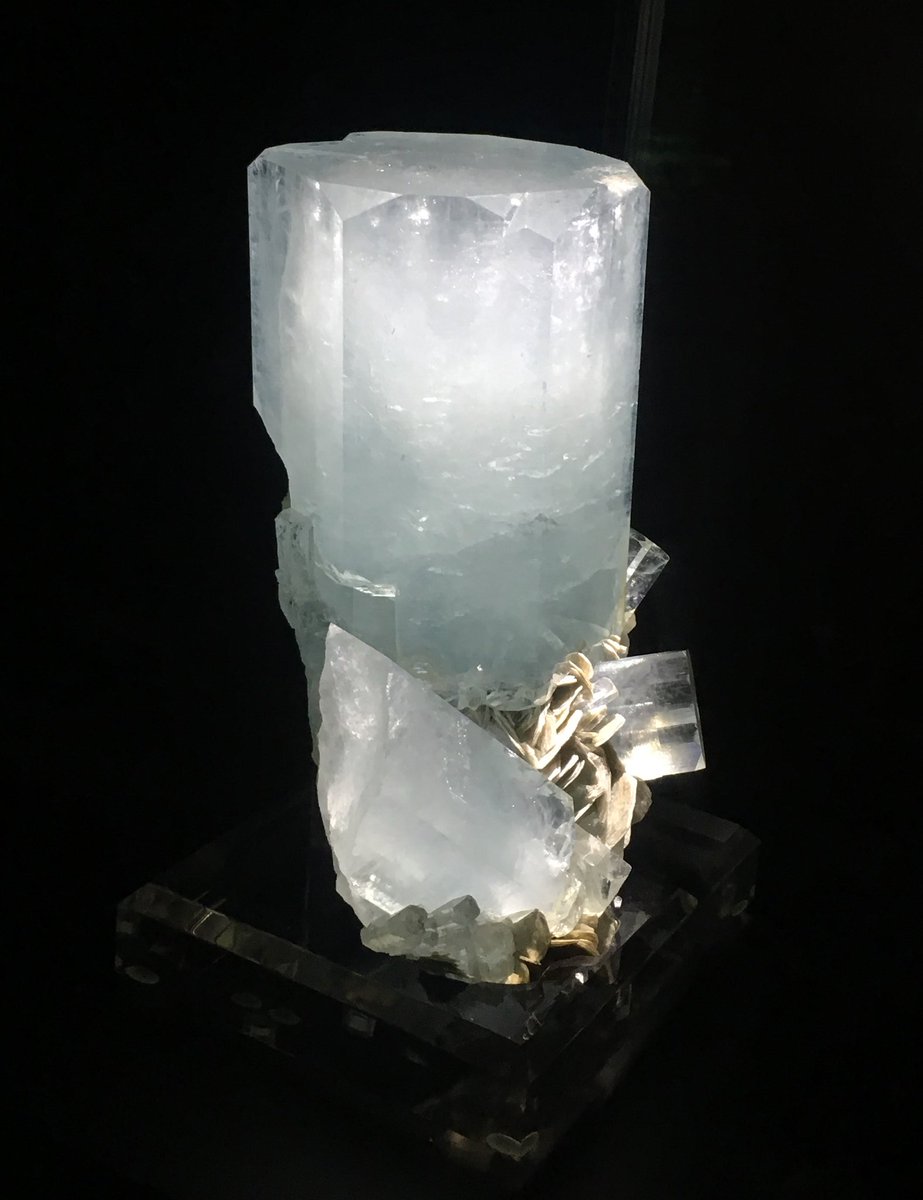
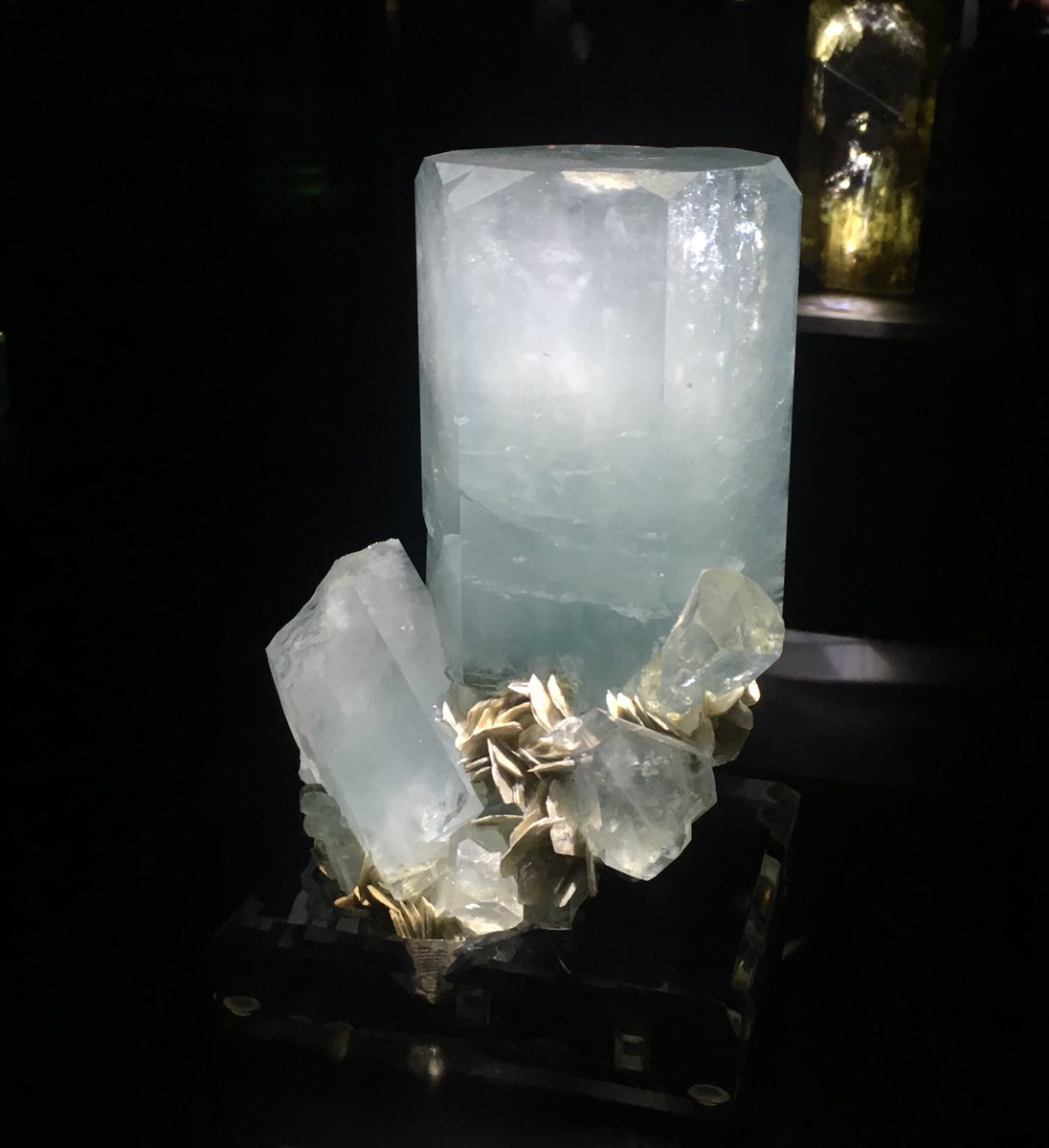
Mica grows in sheets you can peel apart. Historically used as heat-resistant window panes, it’s now popular in makeup (shiny) or in nanotech growth. It’s soft & elastic
Meta: of course it’s part of the apatite mineral group whose namesake translates as “to be deceptive.”
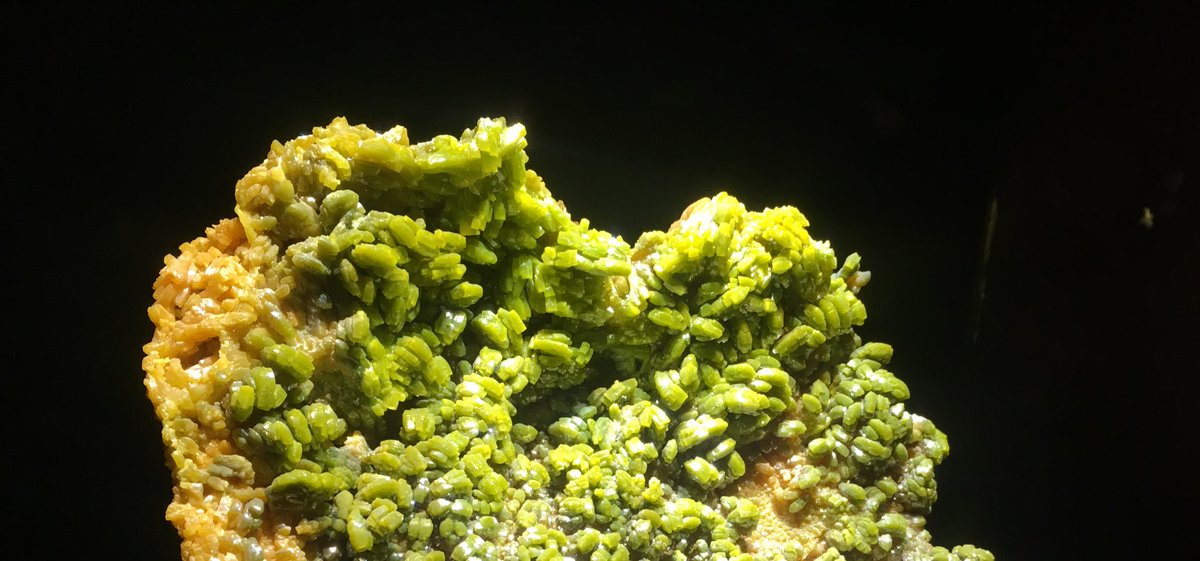
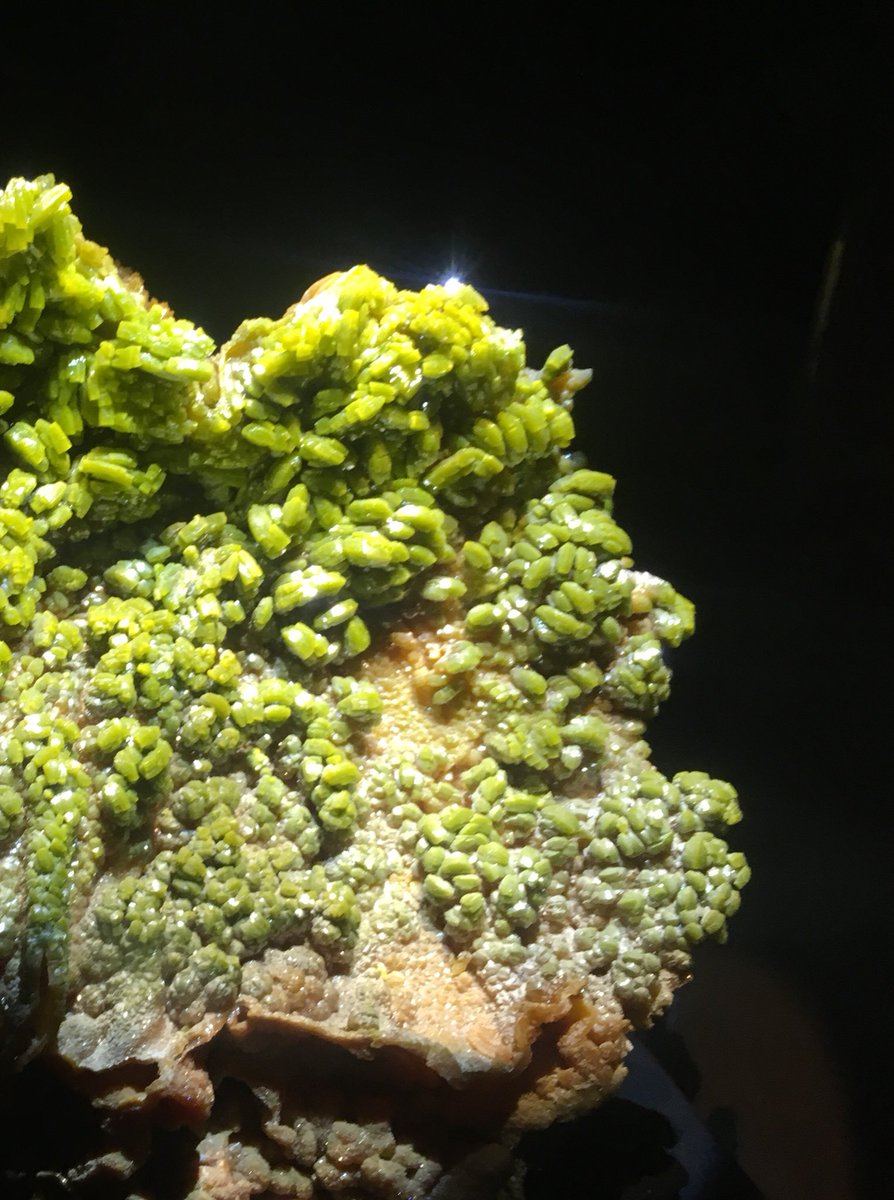
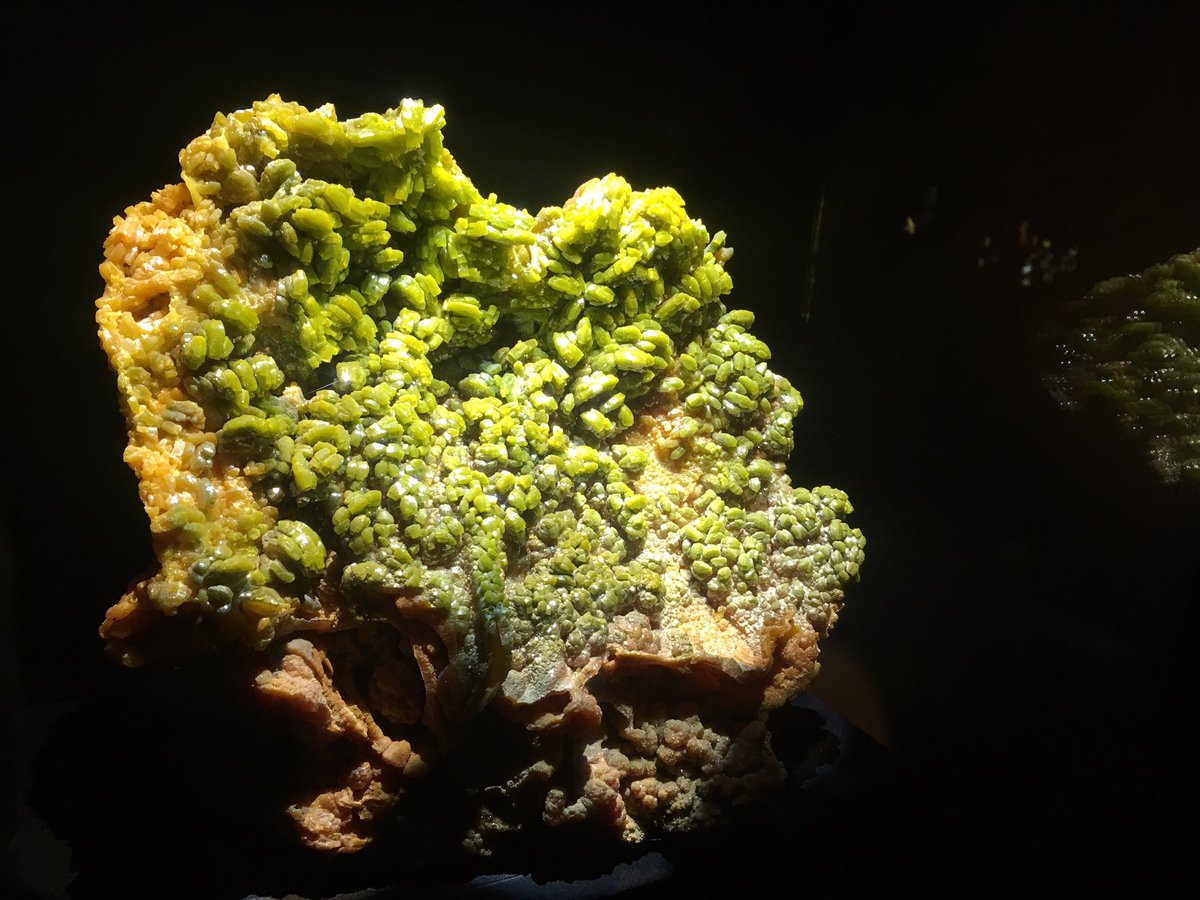
Texture is deceiving: all of these are HARD & heavy minerals. Although the beryl still looks lickable even though I know it’s flavourless. Woe!
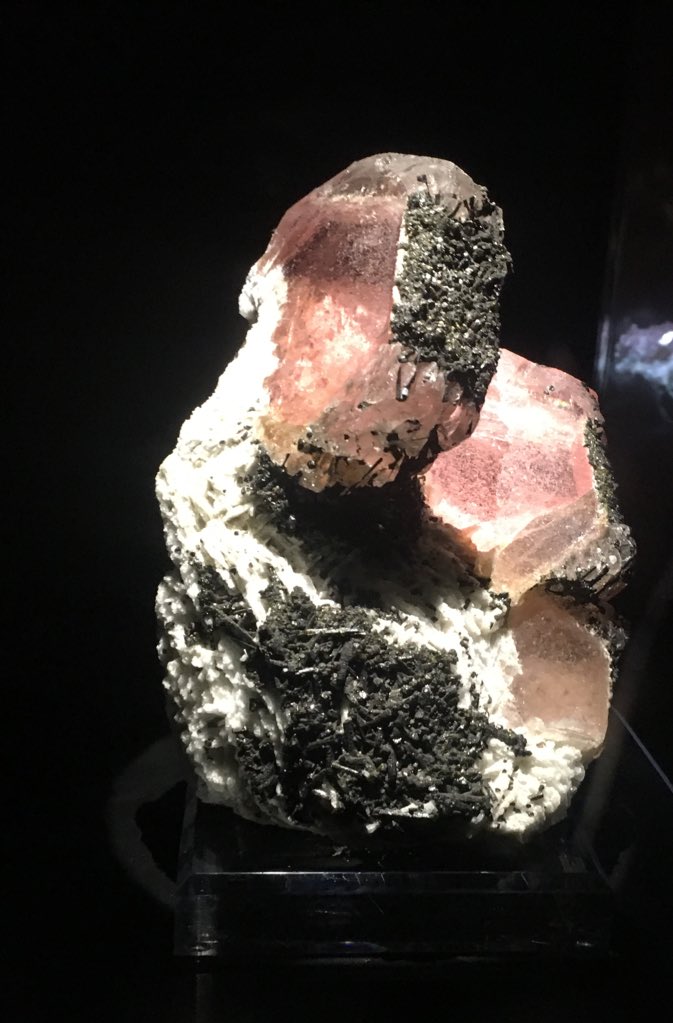

It’s hydrated calcium vanadium silicate (ca-van-si*te, a name that embeds its composition) that grows as tabs-to-nobs. Hydration means it’s soft.
Totally squealed over it.


Just one quick lick to taste-test? it can be a source of calcium! (...that’s a bad idea.)
See that bit of red wire in the lower right? That’s a bit of scrap forgotten in Naica mine that seeded the growth of this entire spectacular #Selenite crystal.
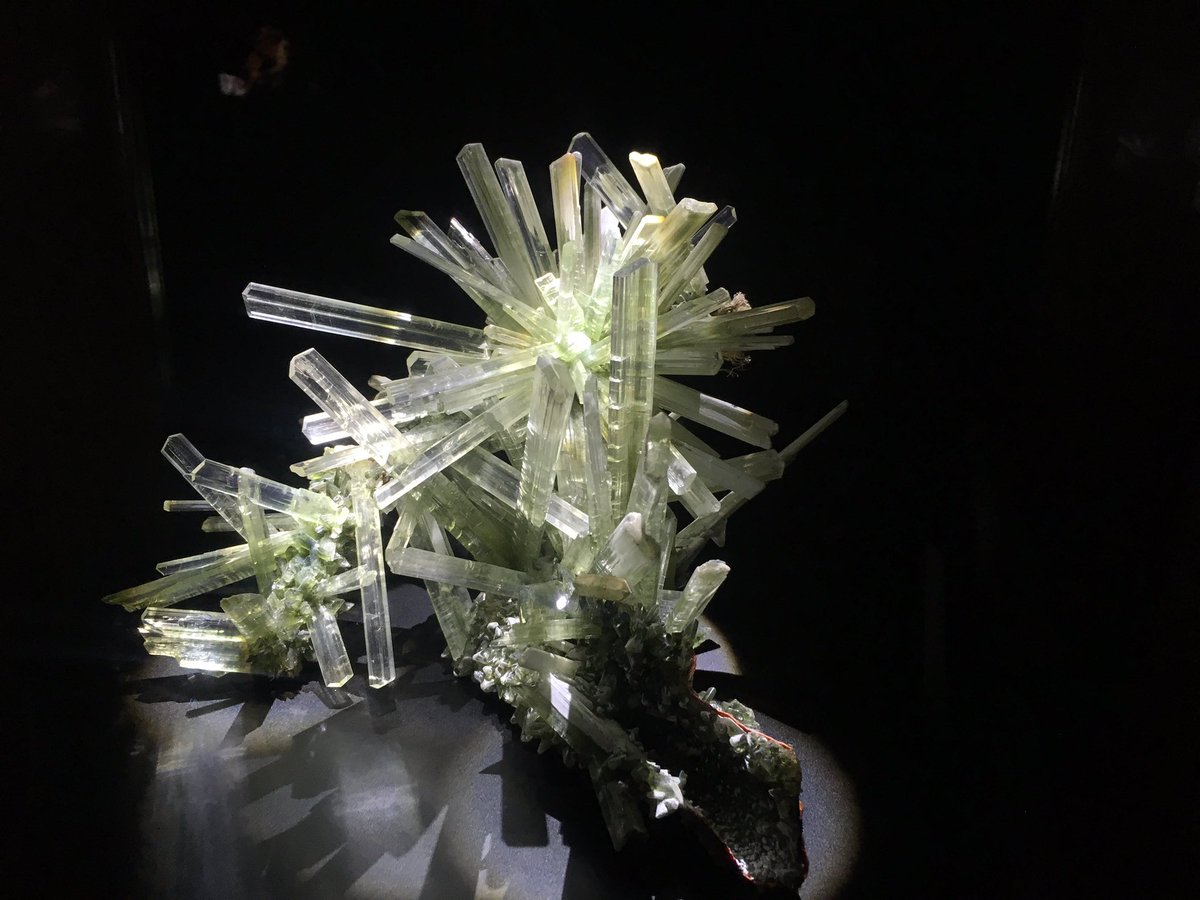
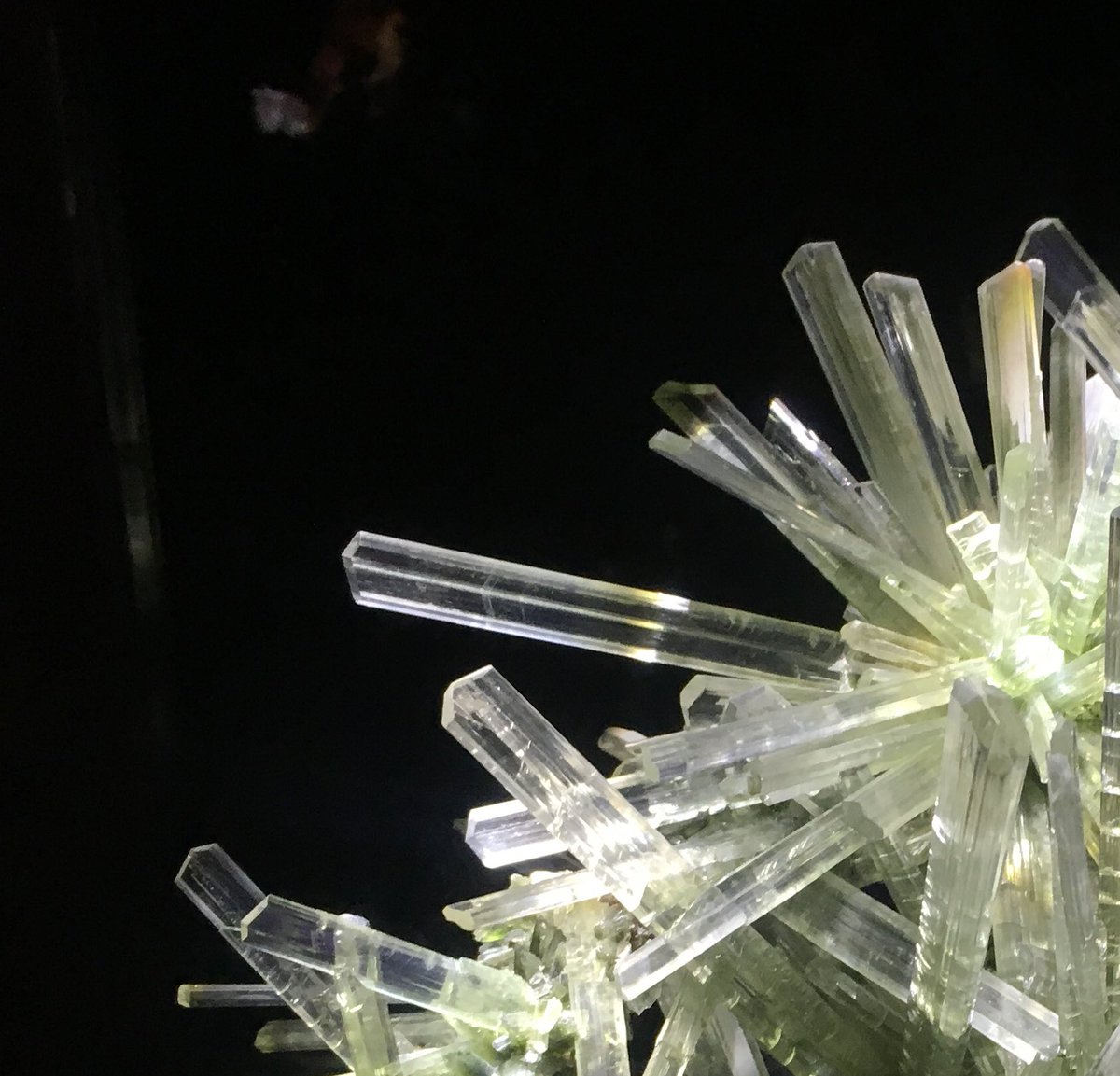
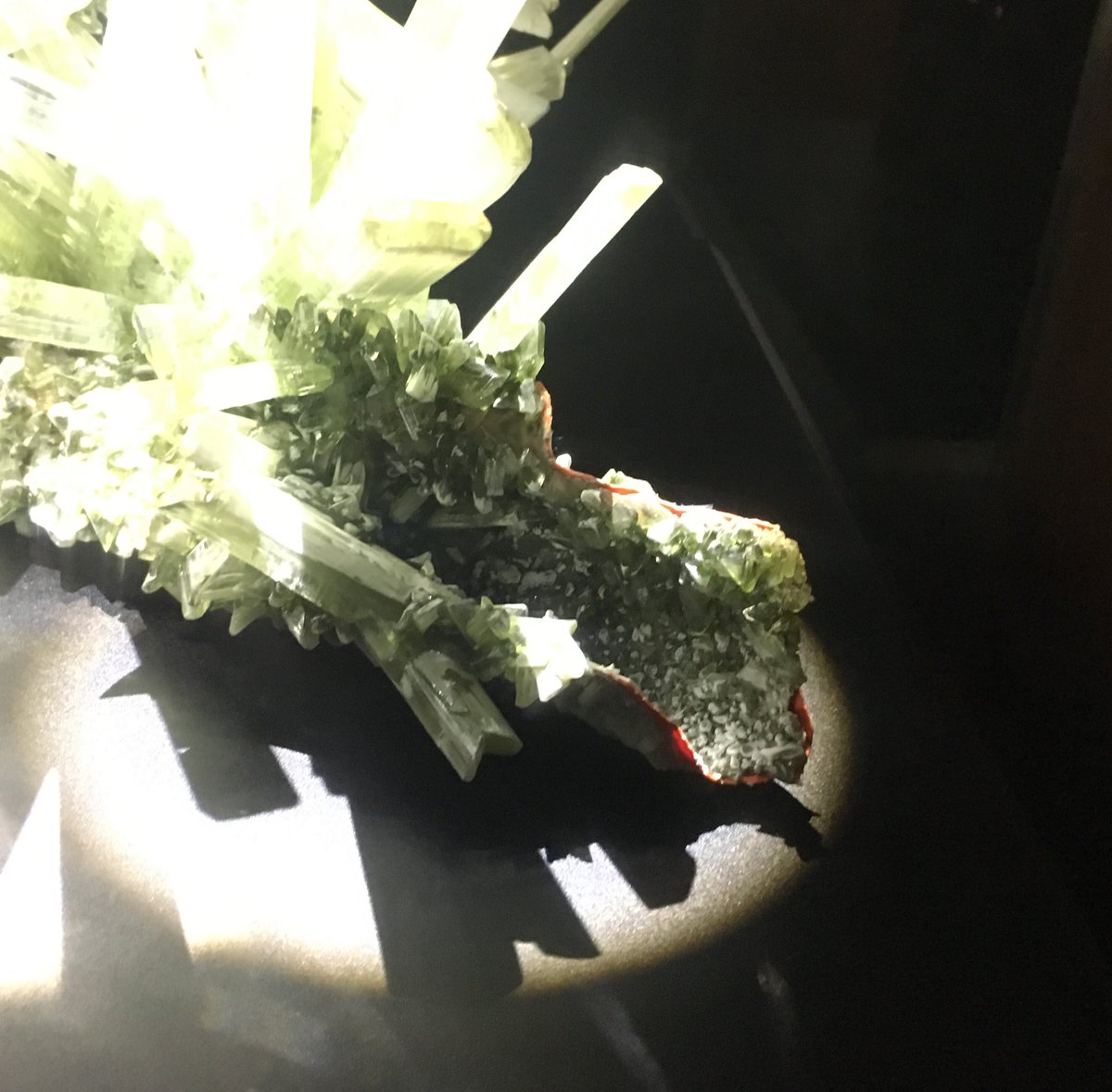
It can be pretty much any colour (clear, white, grey, brown, yellow green, blue, pink, or purple) but is usually a pastel blob. It sometimes fluoresces, but more importantly, it bubbles if you dump acid on it.
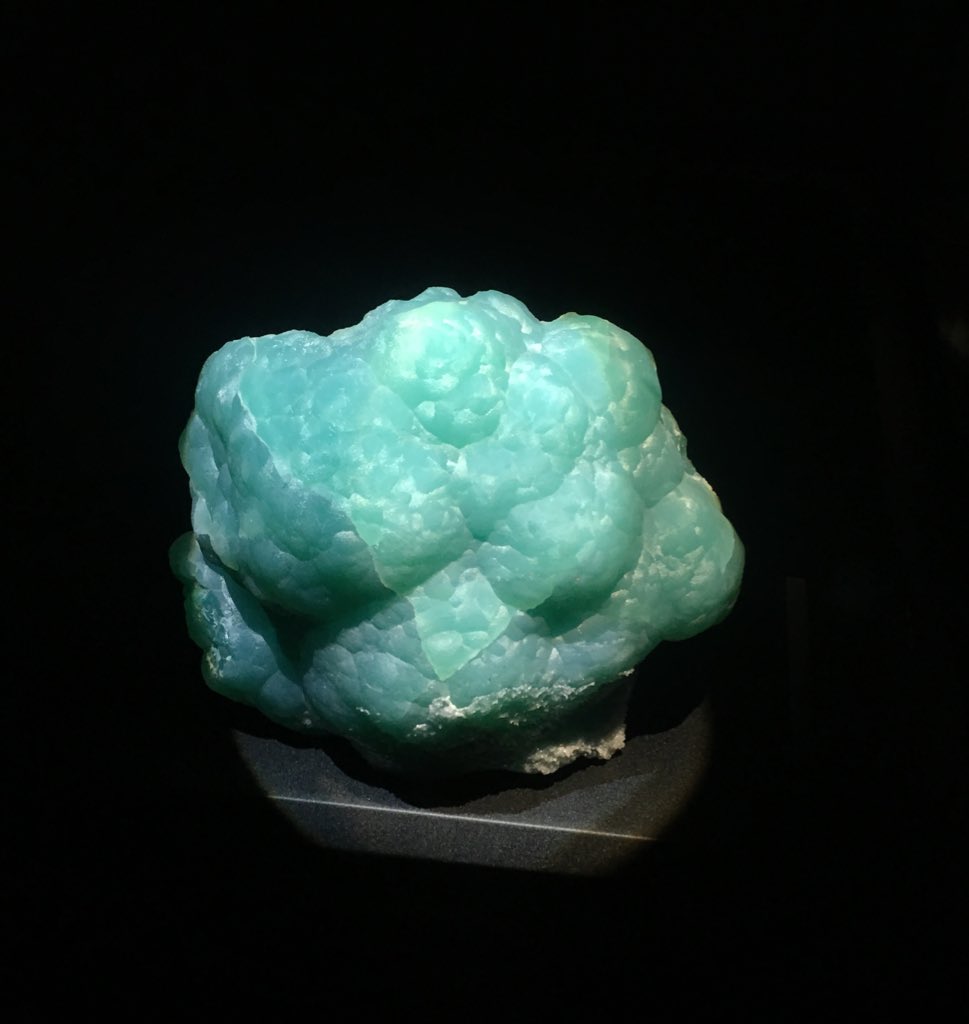
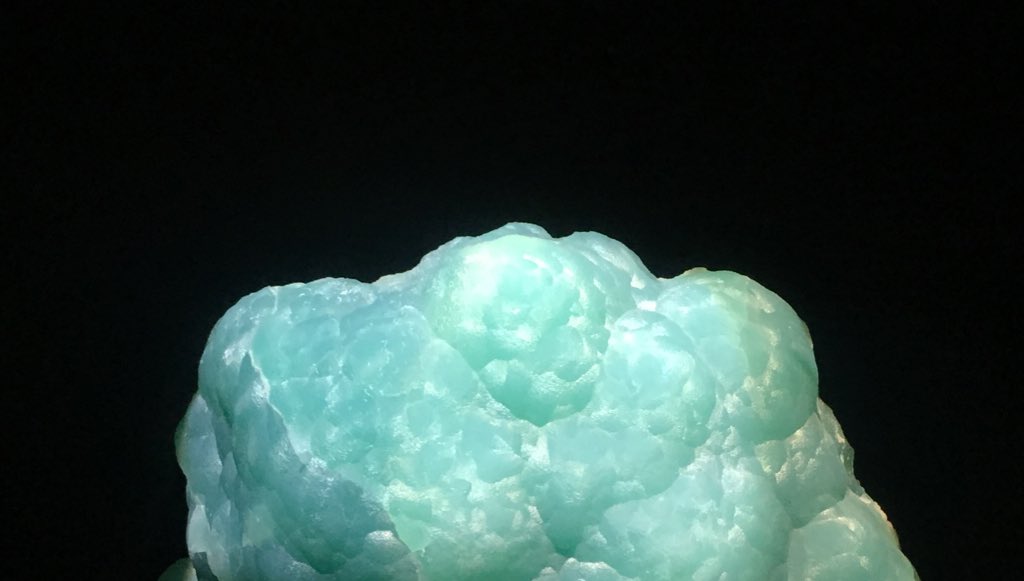
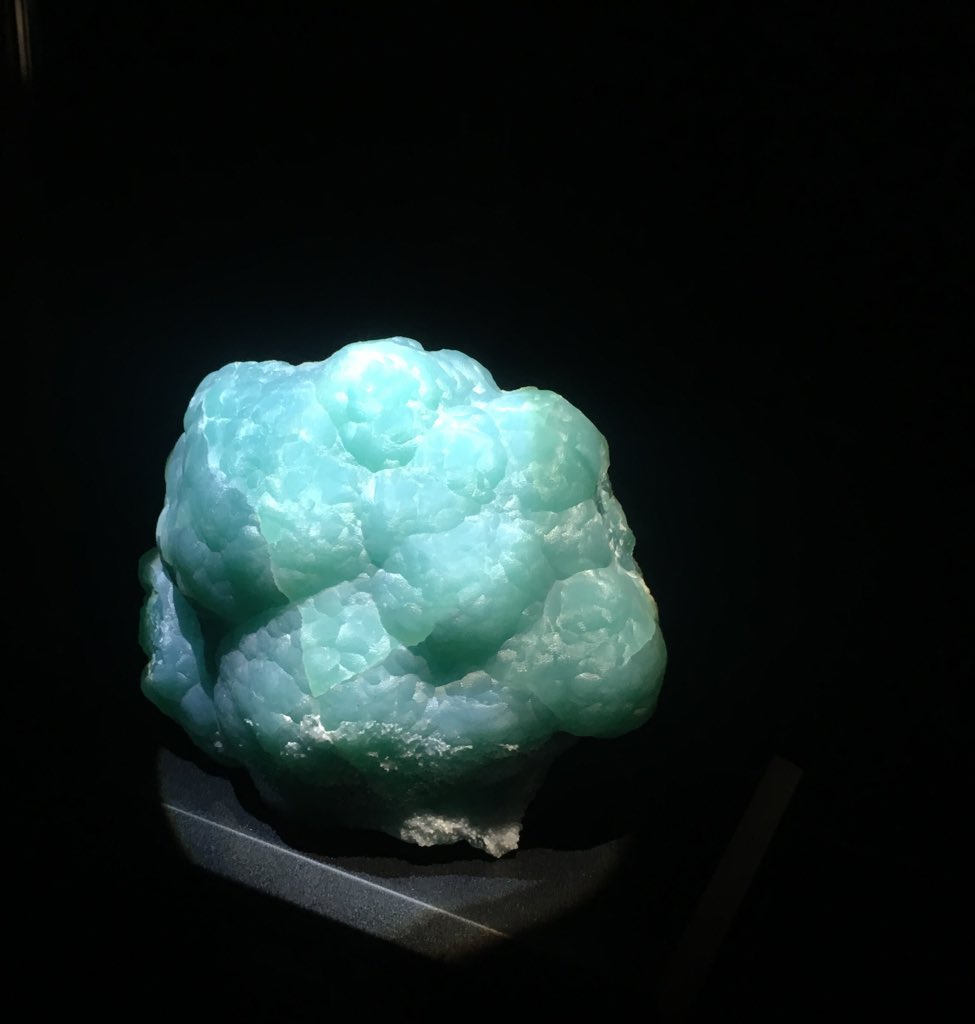
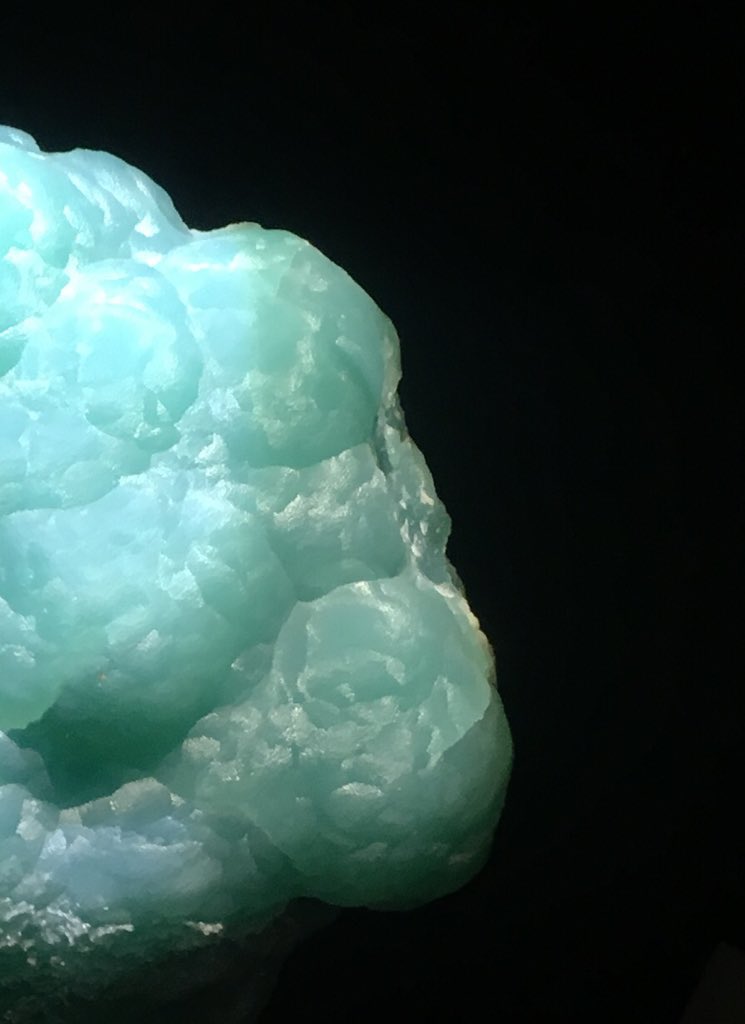
It’d only take a few drops of dilute hydrochloric acid to get the characteristic bubbling (effervescence) or carbonates, but... look at it!
Poor blobbfren. Don’t worry, safe from acid in your display case
Still lots of lead. Still a terrible idea to lick. But look at those delicate thin chips! Unfair for a mineral to look that much like candy.
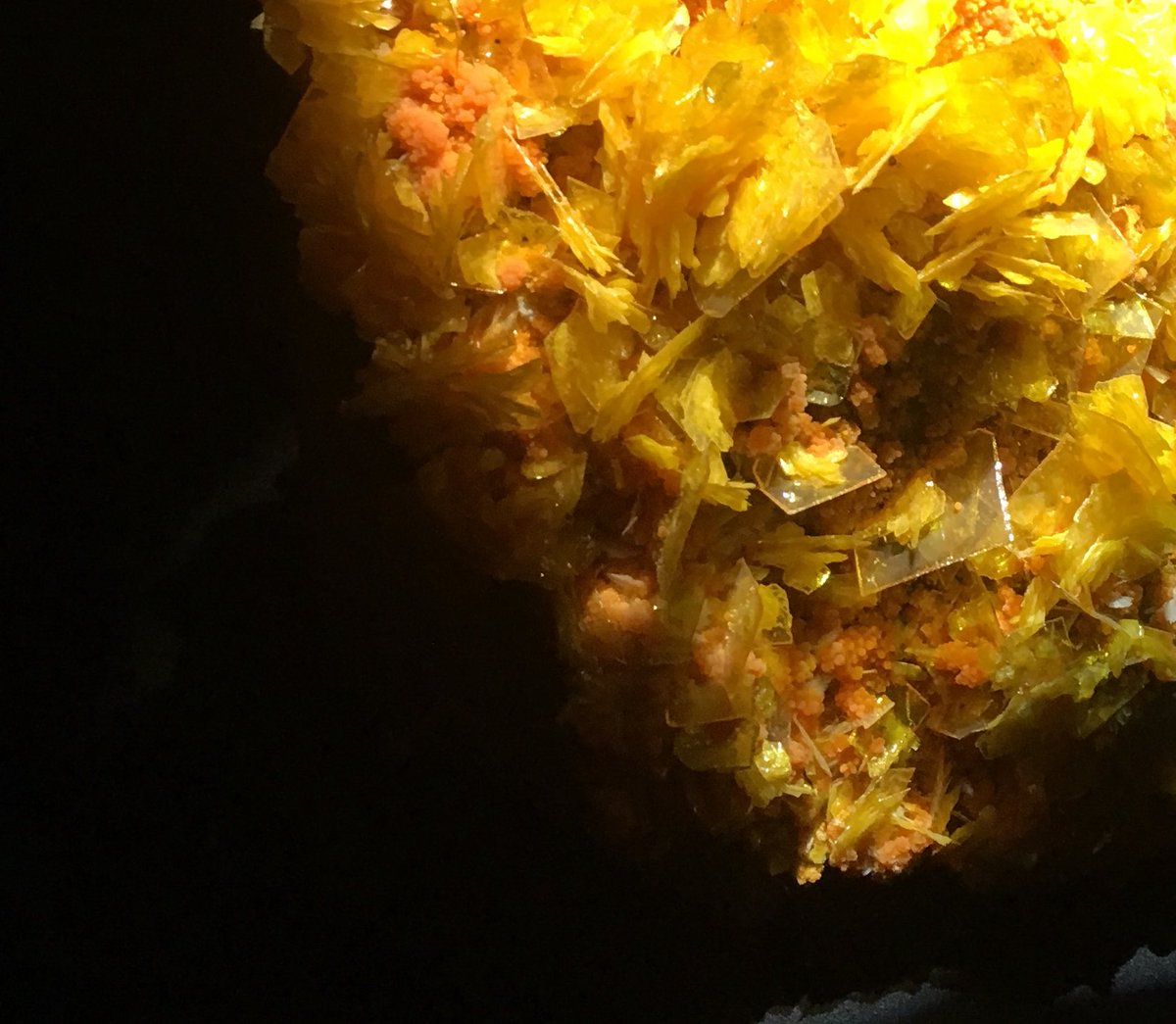
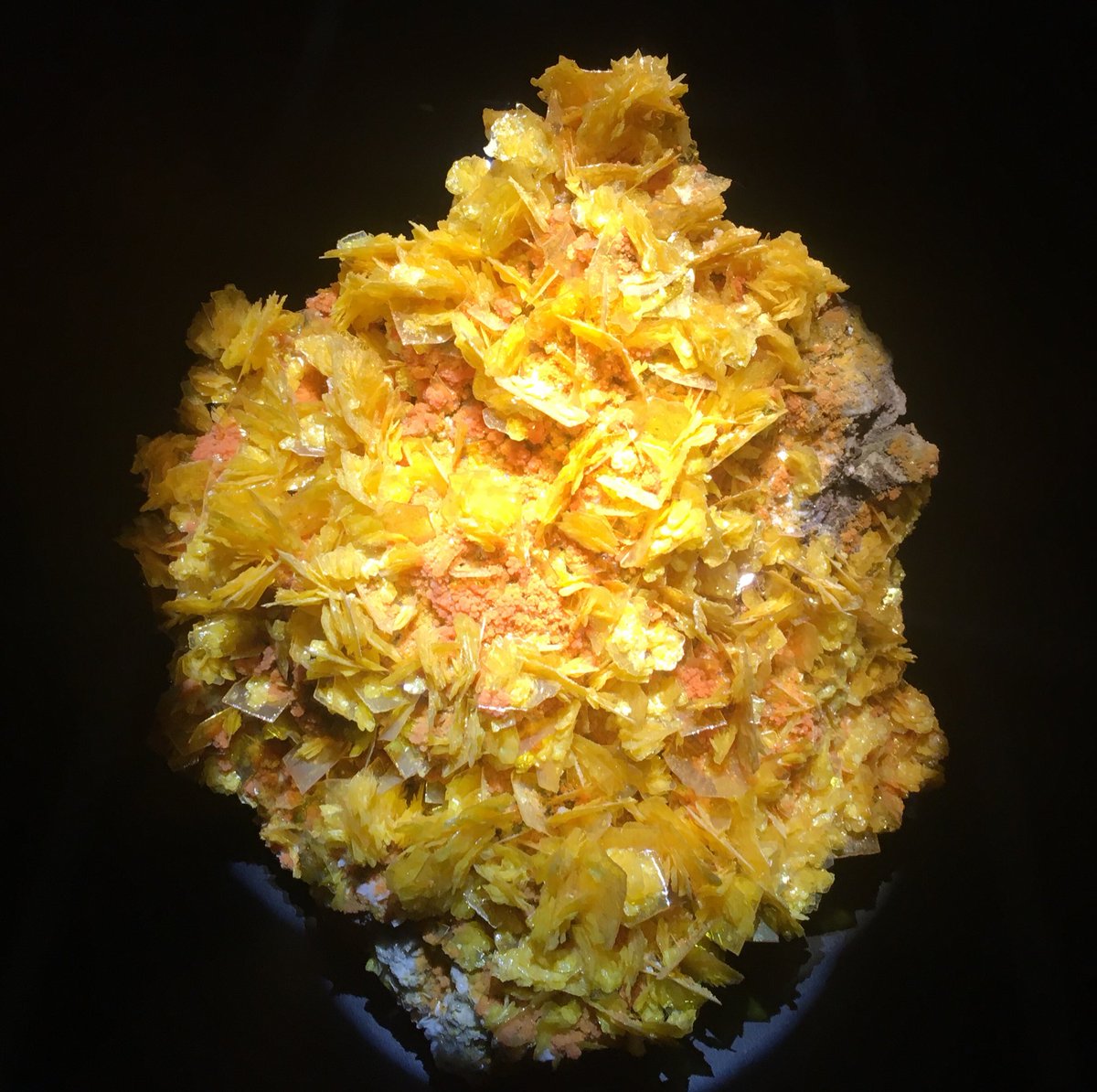
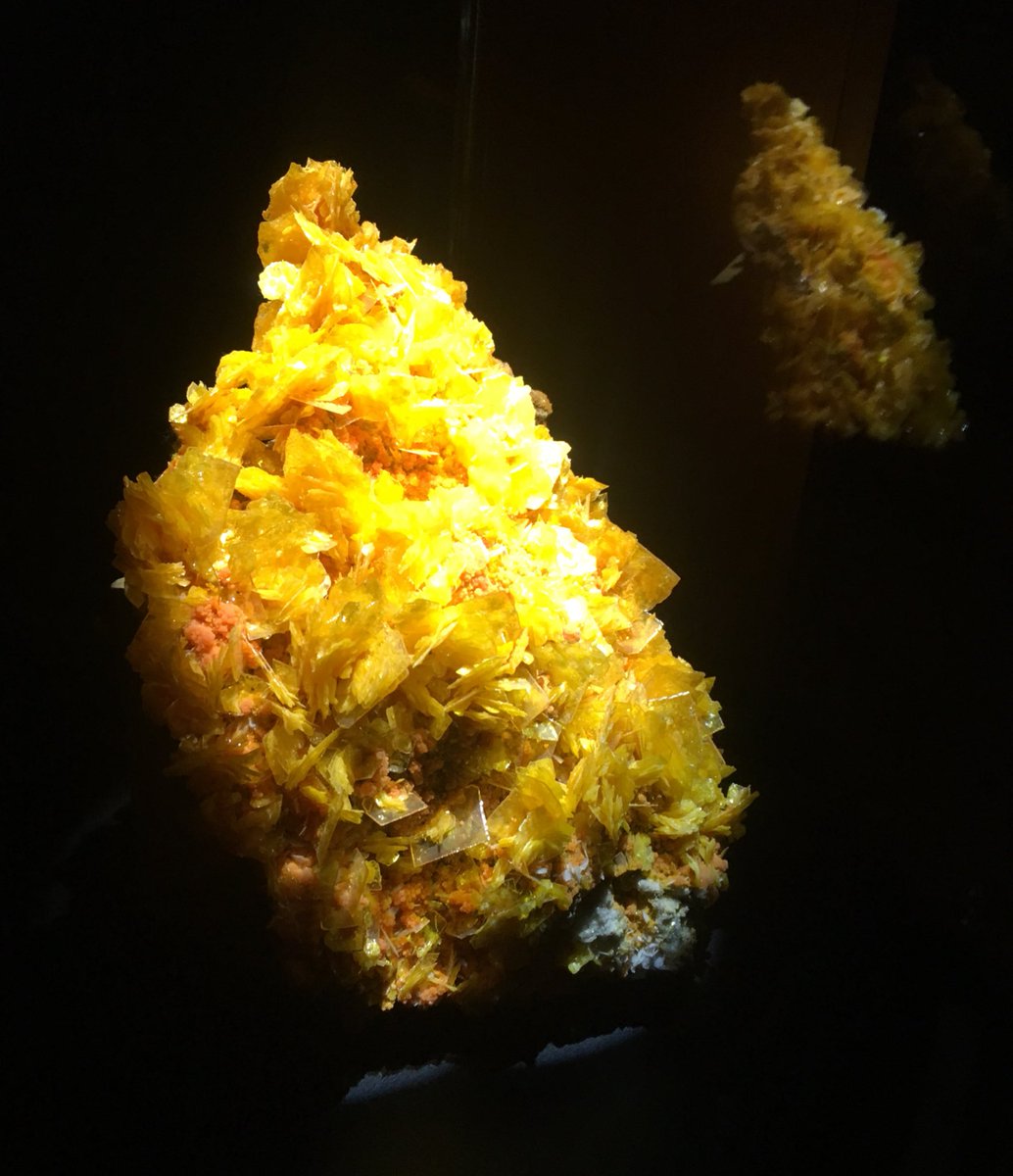
I like how the translucence of the beryl allows a peek at how the other minerals constrained its growth.
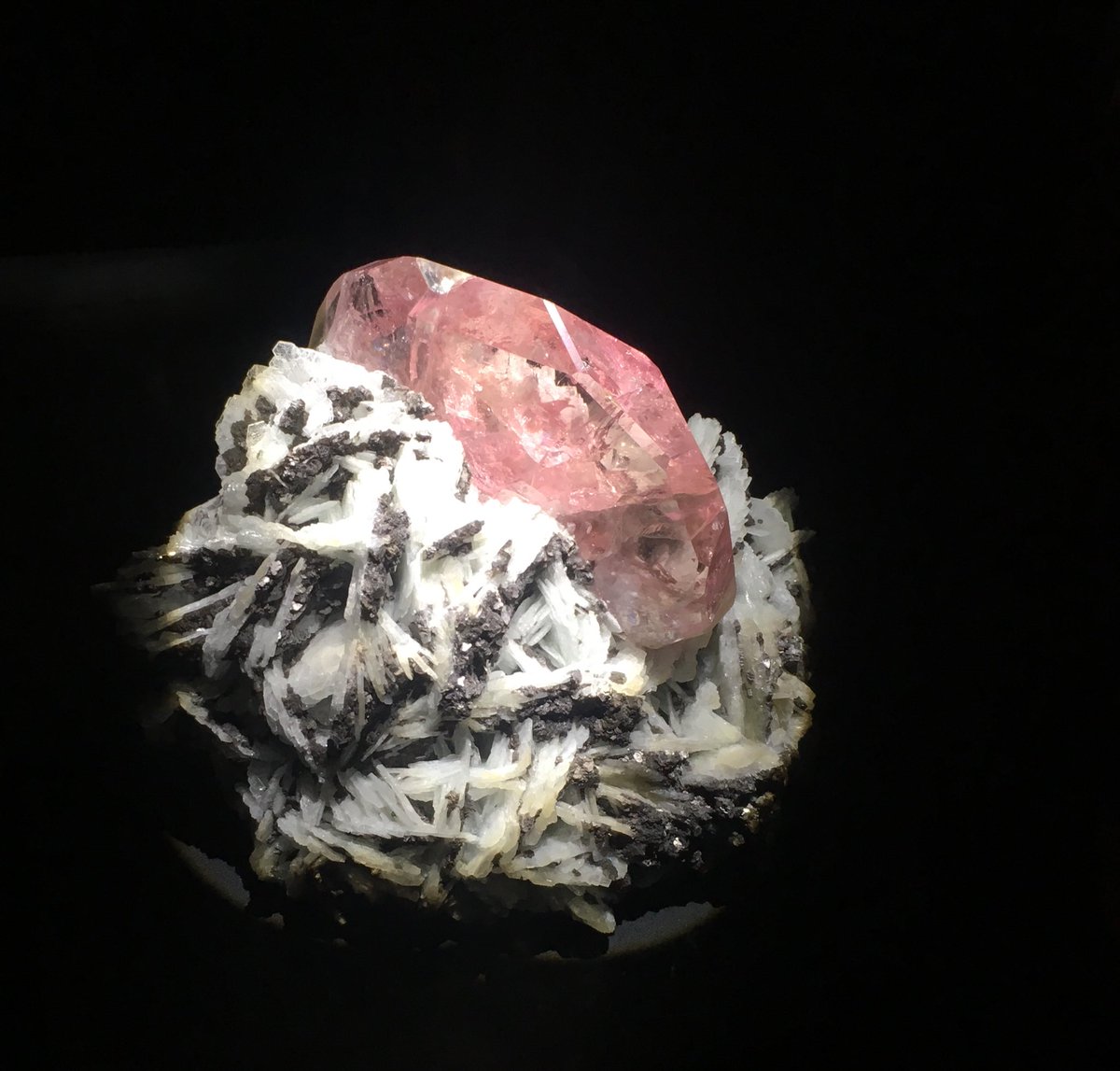
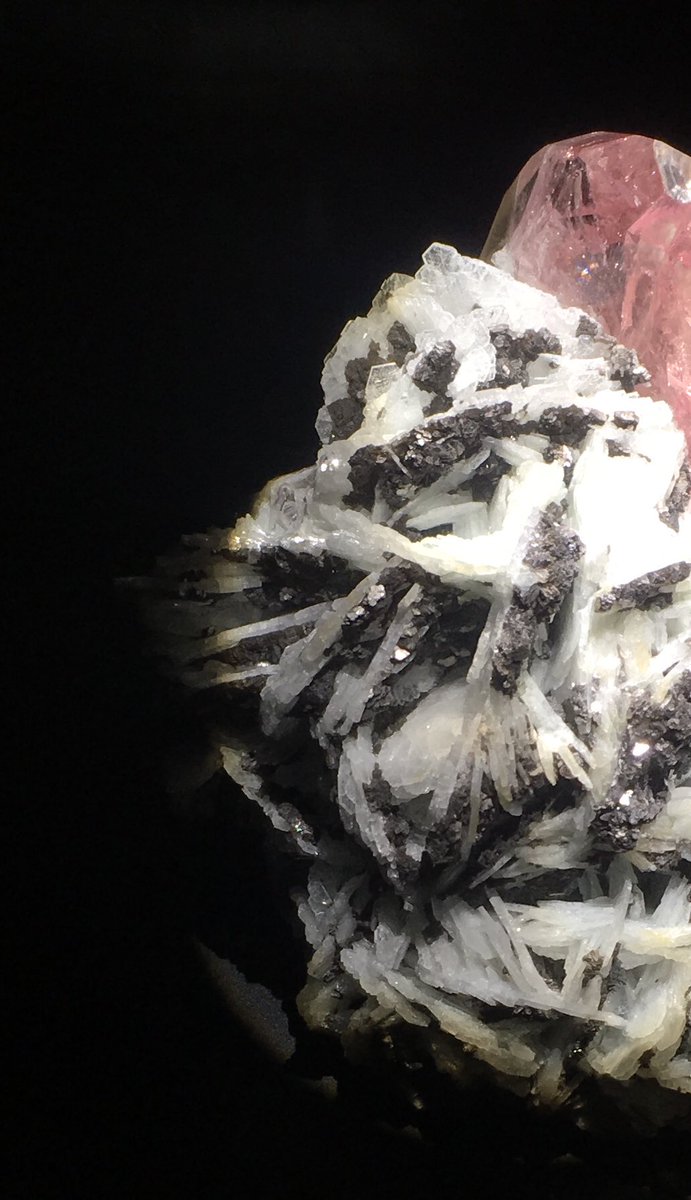
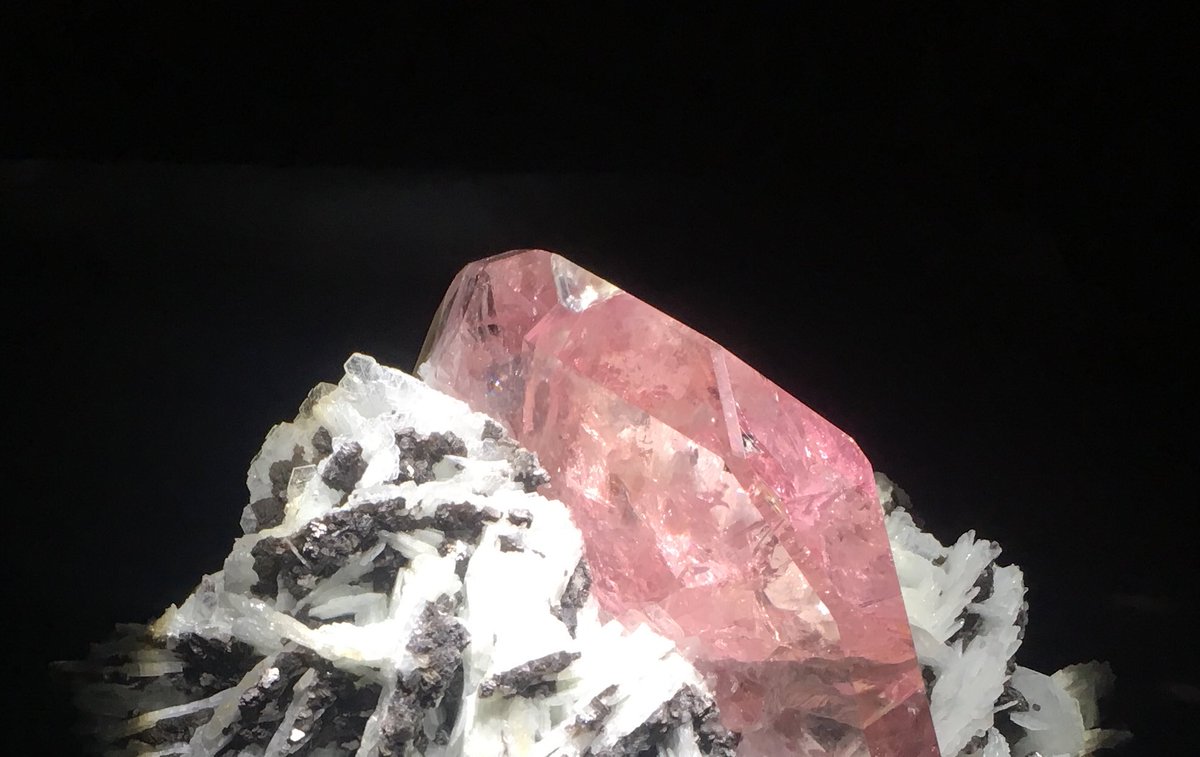
Notice how often we see duplicates of the same combos of minerals? That’s because they grow under similar conditions. They accessorize each other!
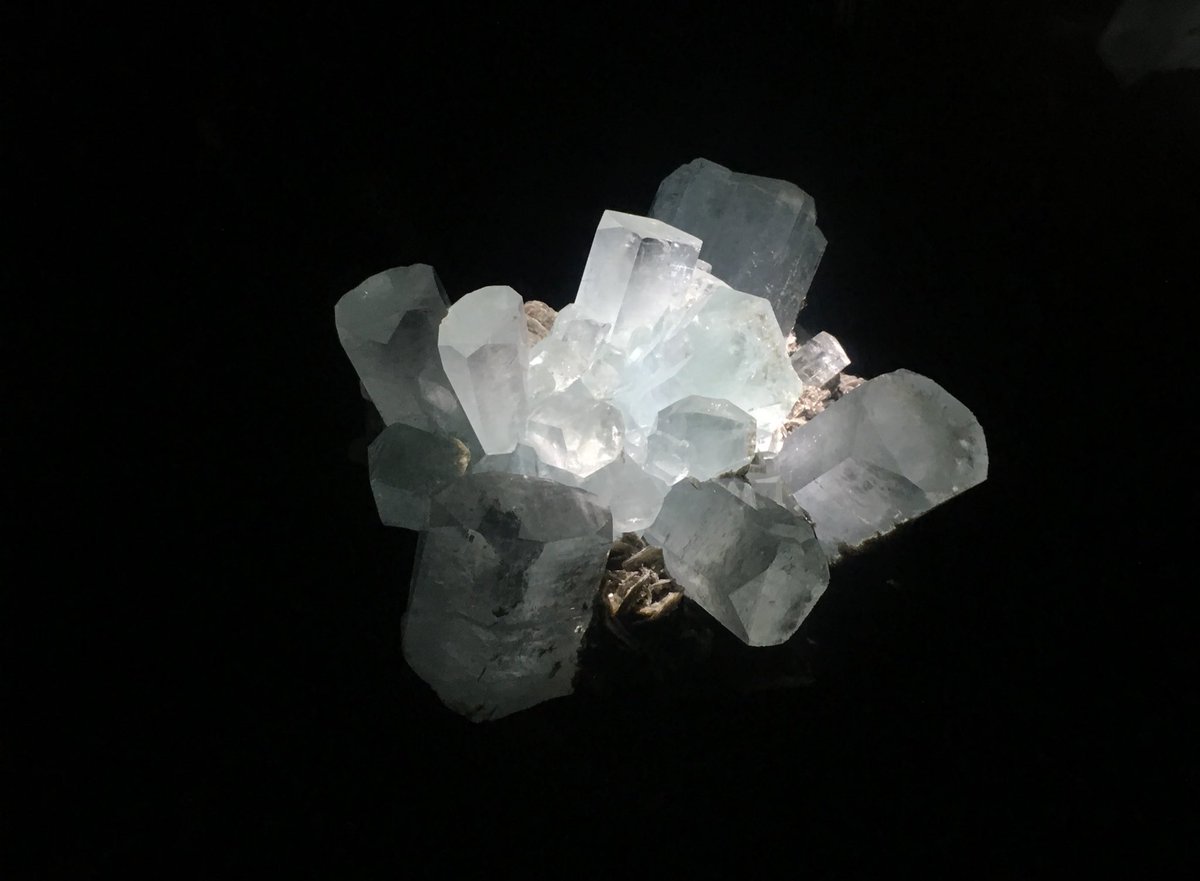
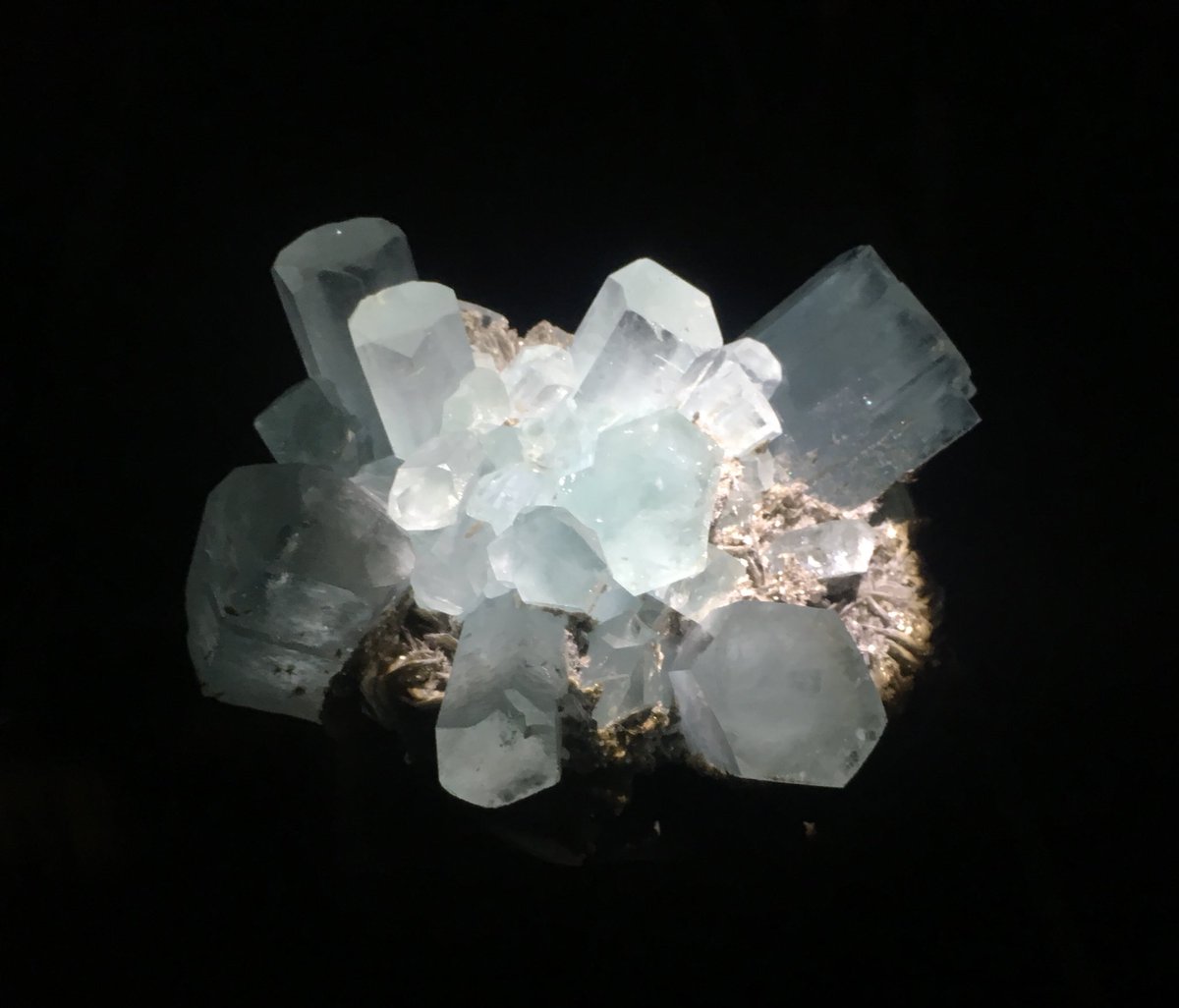
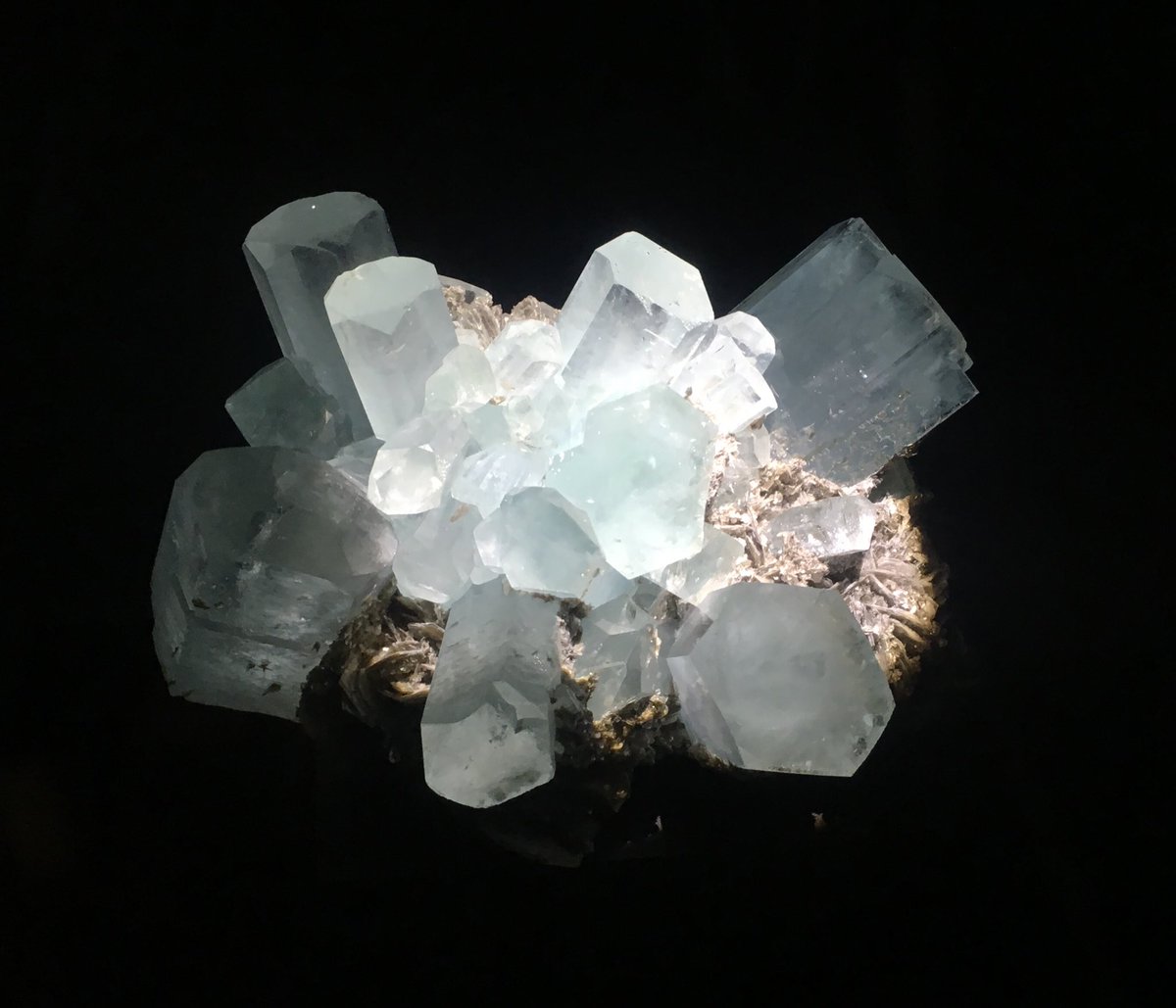
Emerald is dark green #beryl contaminated with chromium or vanadium. So those gorgeous green beryls I wanted to lick before? Pale emeralds.
Dolomite is calcium magnesium carbonate, so bubbles in acid.
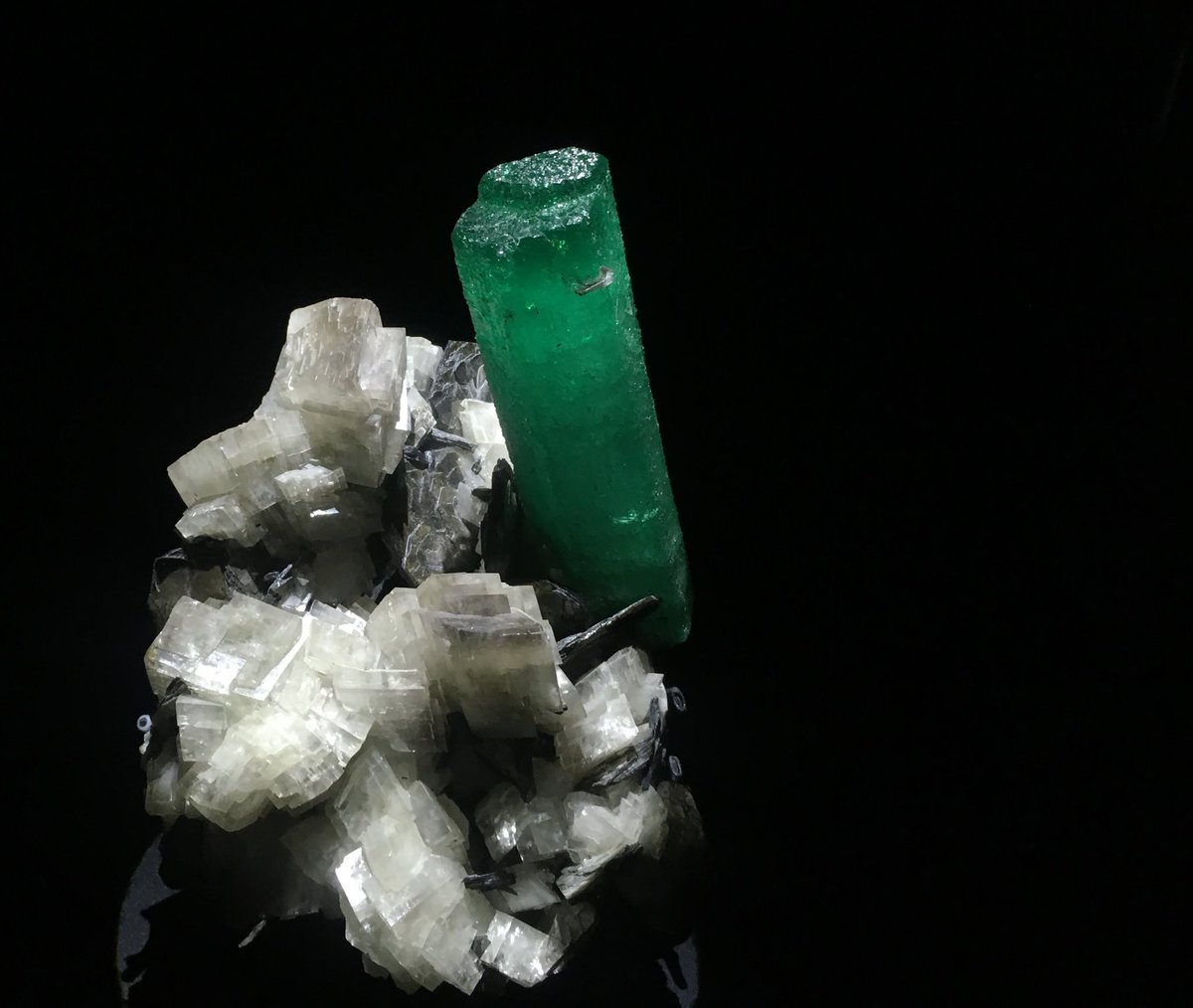
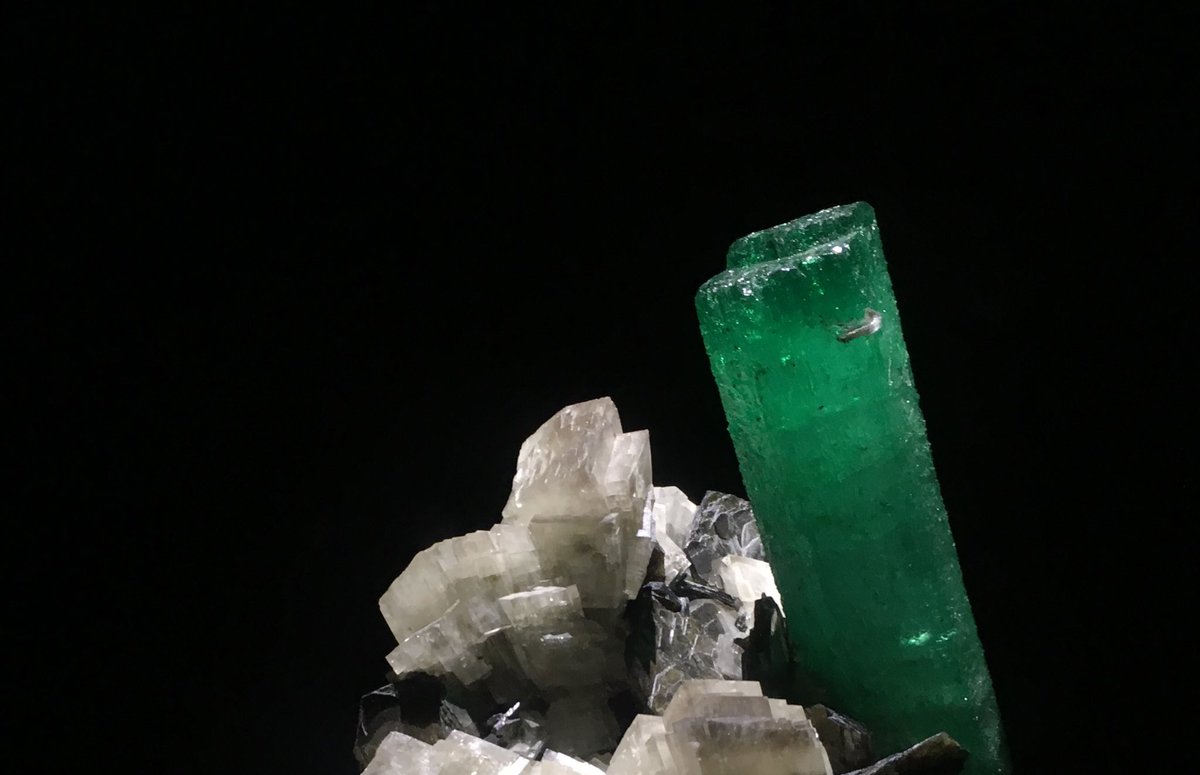

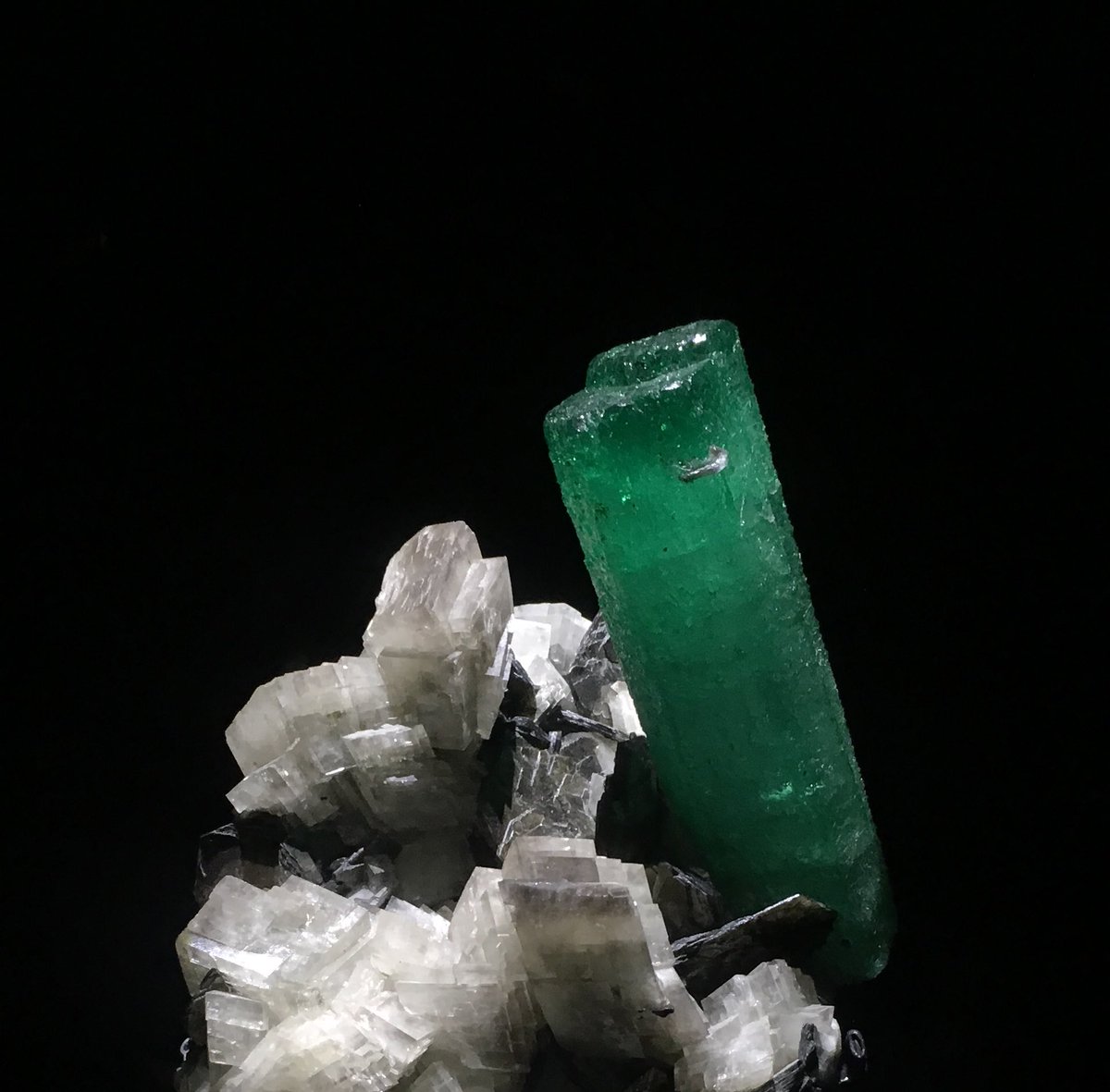
It’s a hydrated copper uranium (?!) silicate hydroxide, so, uh, despite being relatively soft & silky don’t lick. Or pet
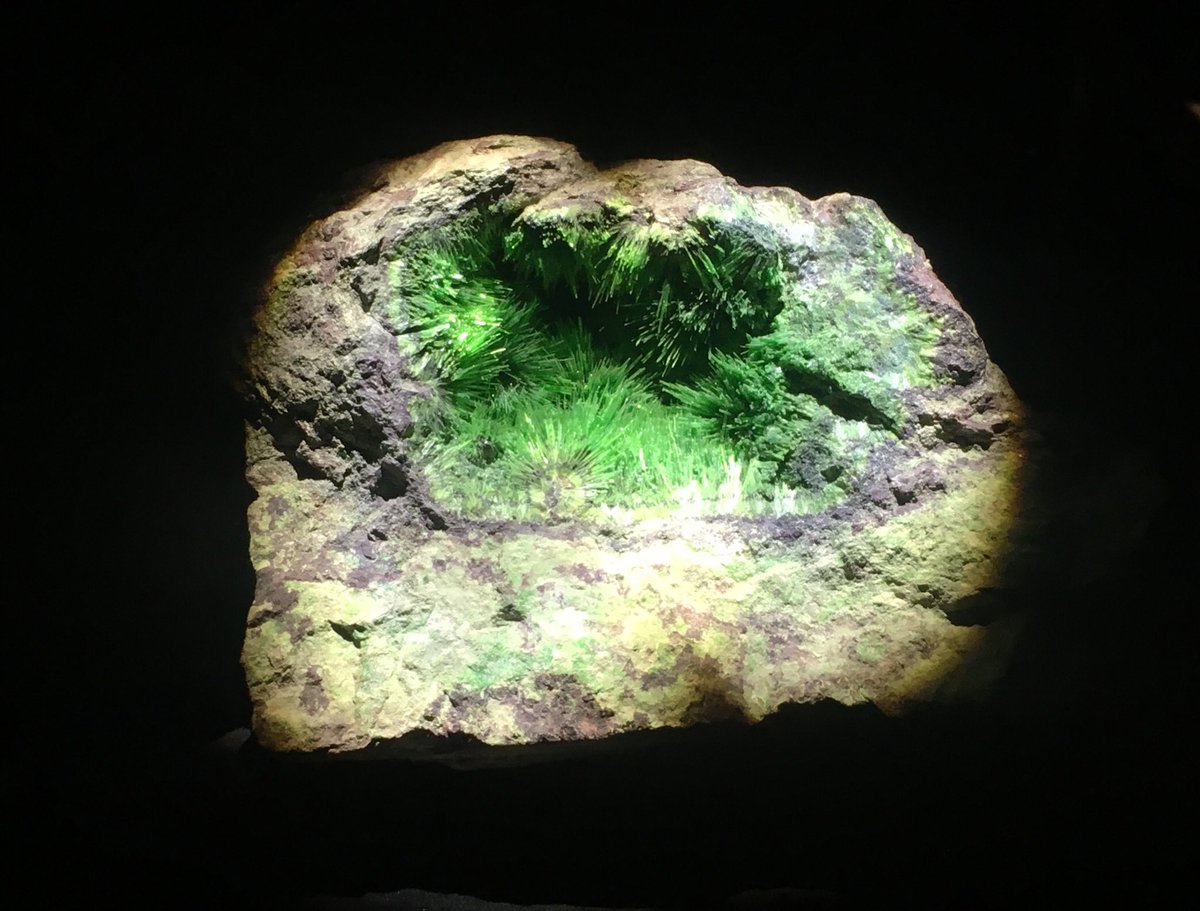
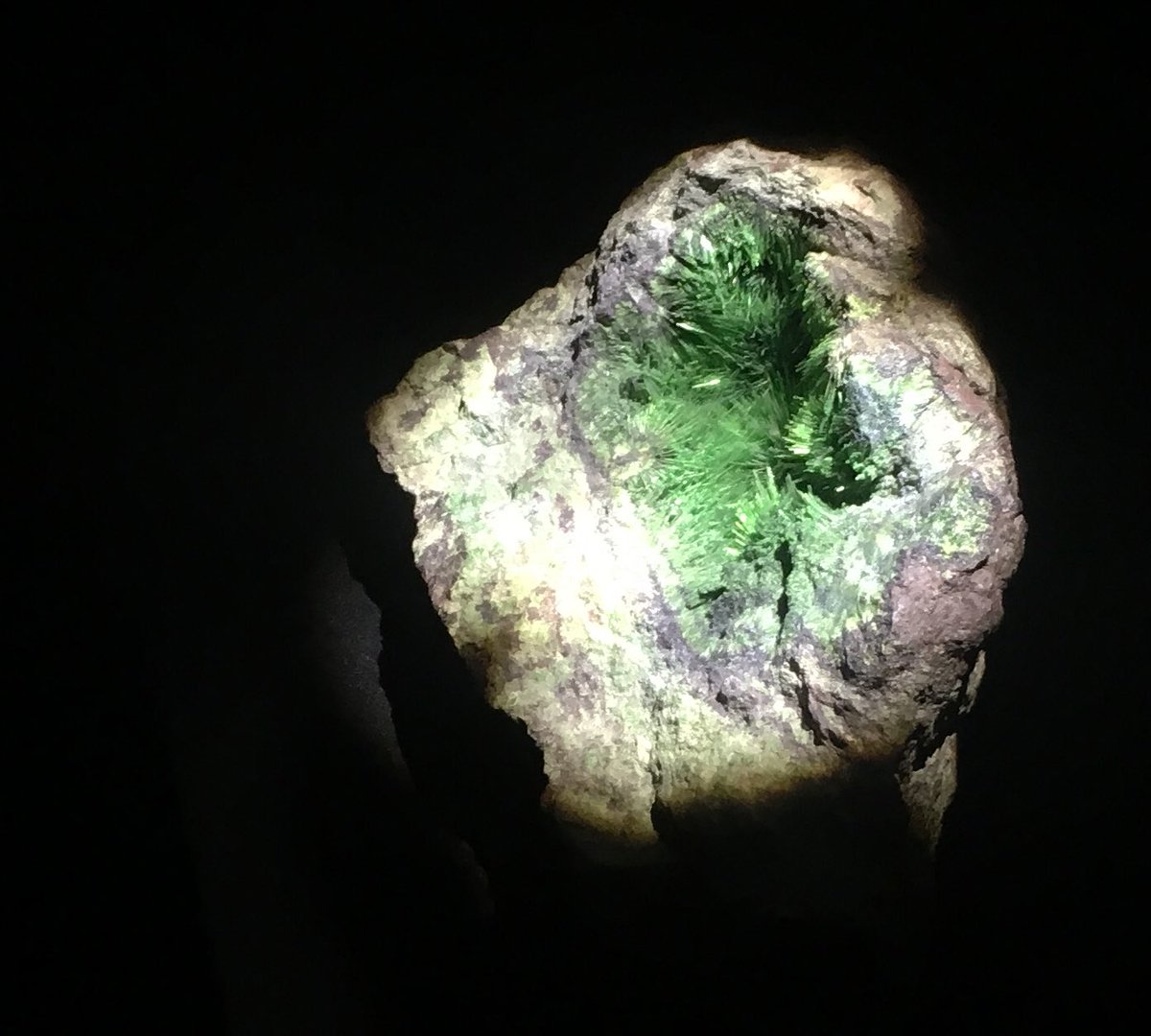
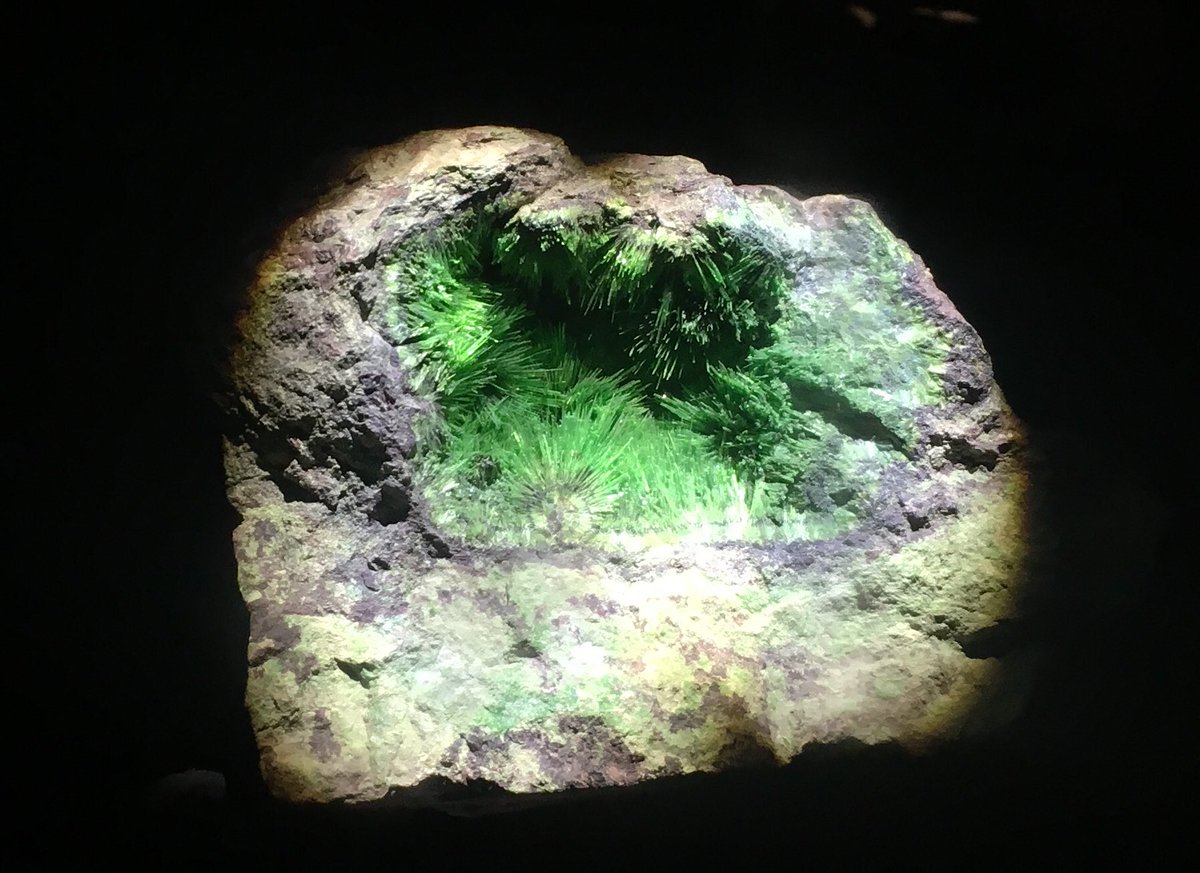
Azurite is derived for the Persian word for blue, and is now the namesake for this exact vibrant colour.
It’s a copper carbonate hydroxide, shiny af, & while it doesn’t bubble like most carbonates it dissolves in acid
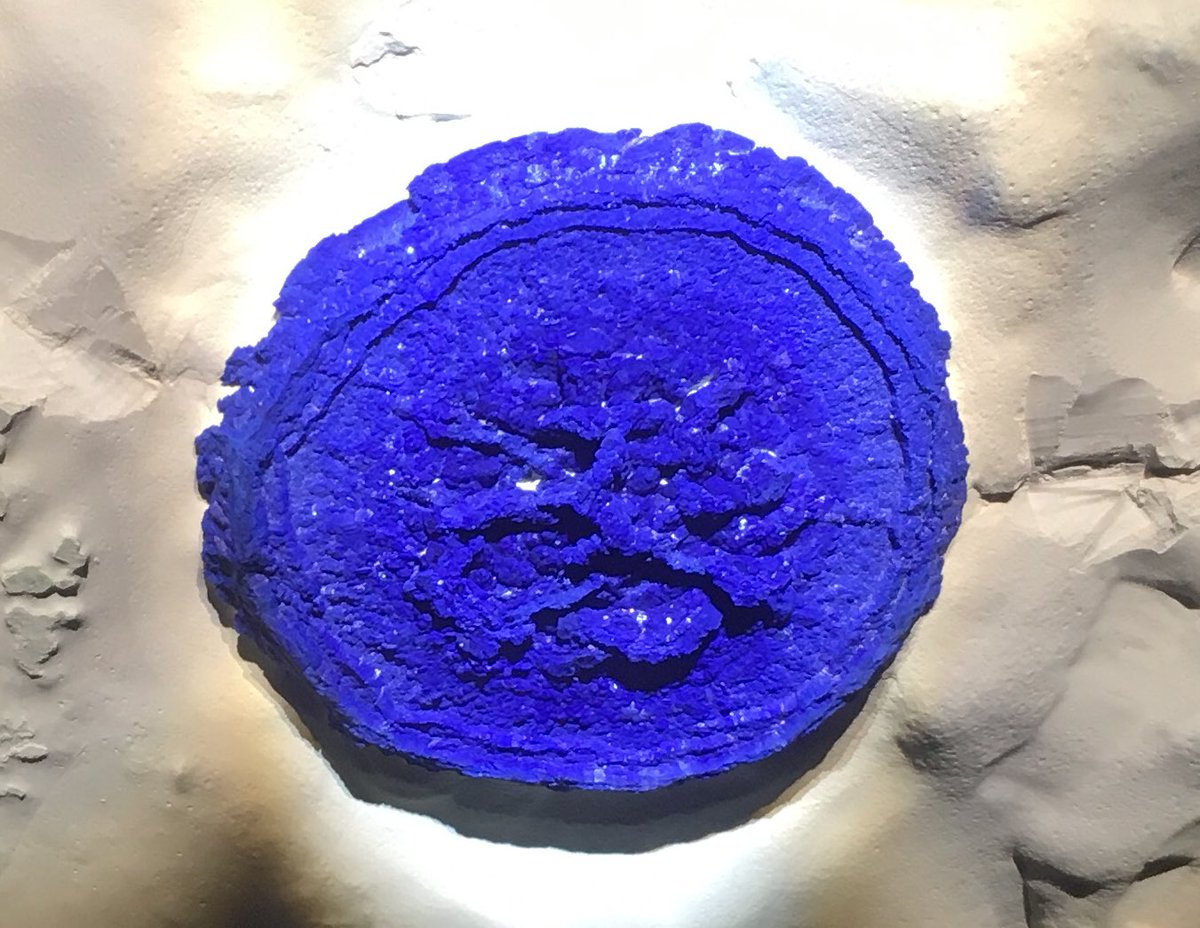
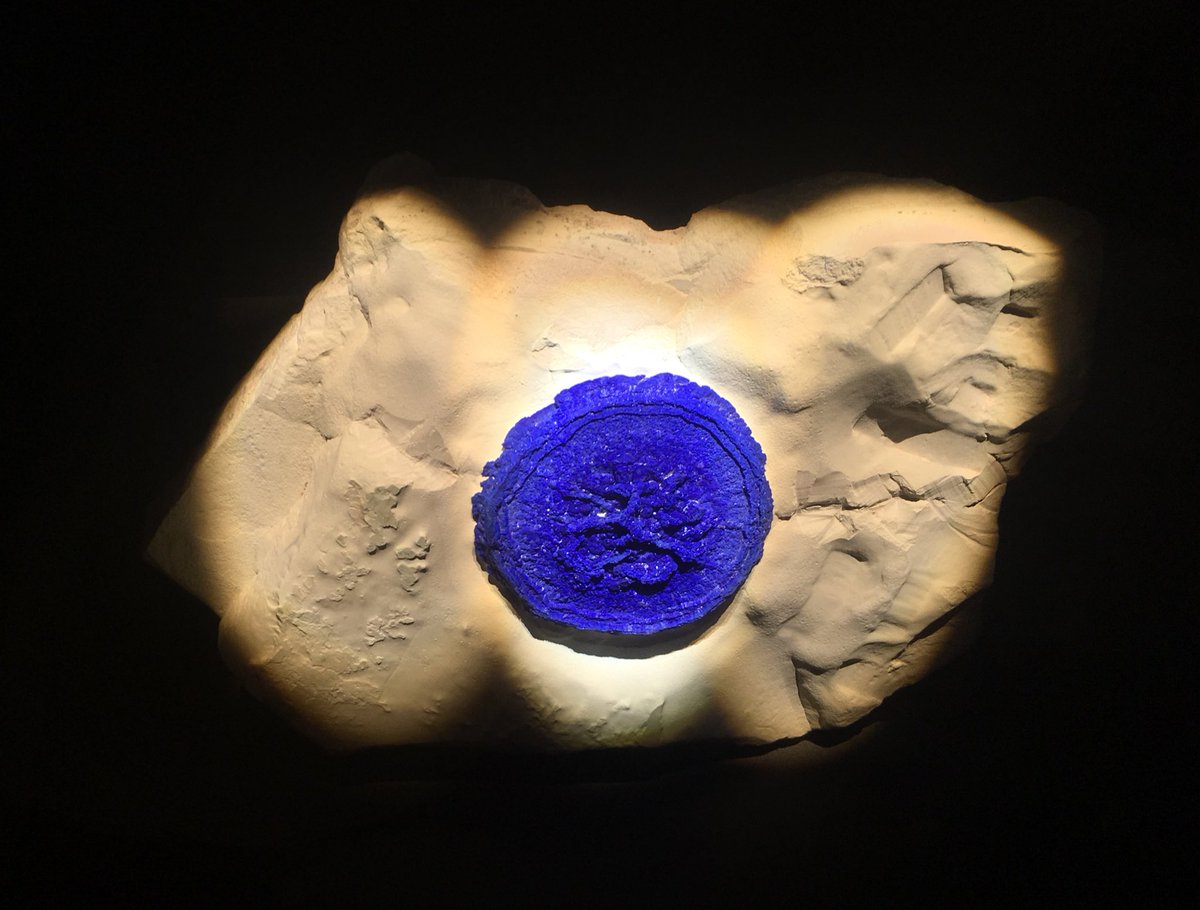
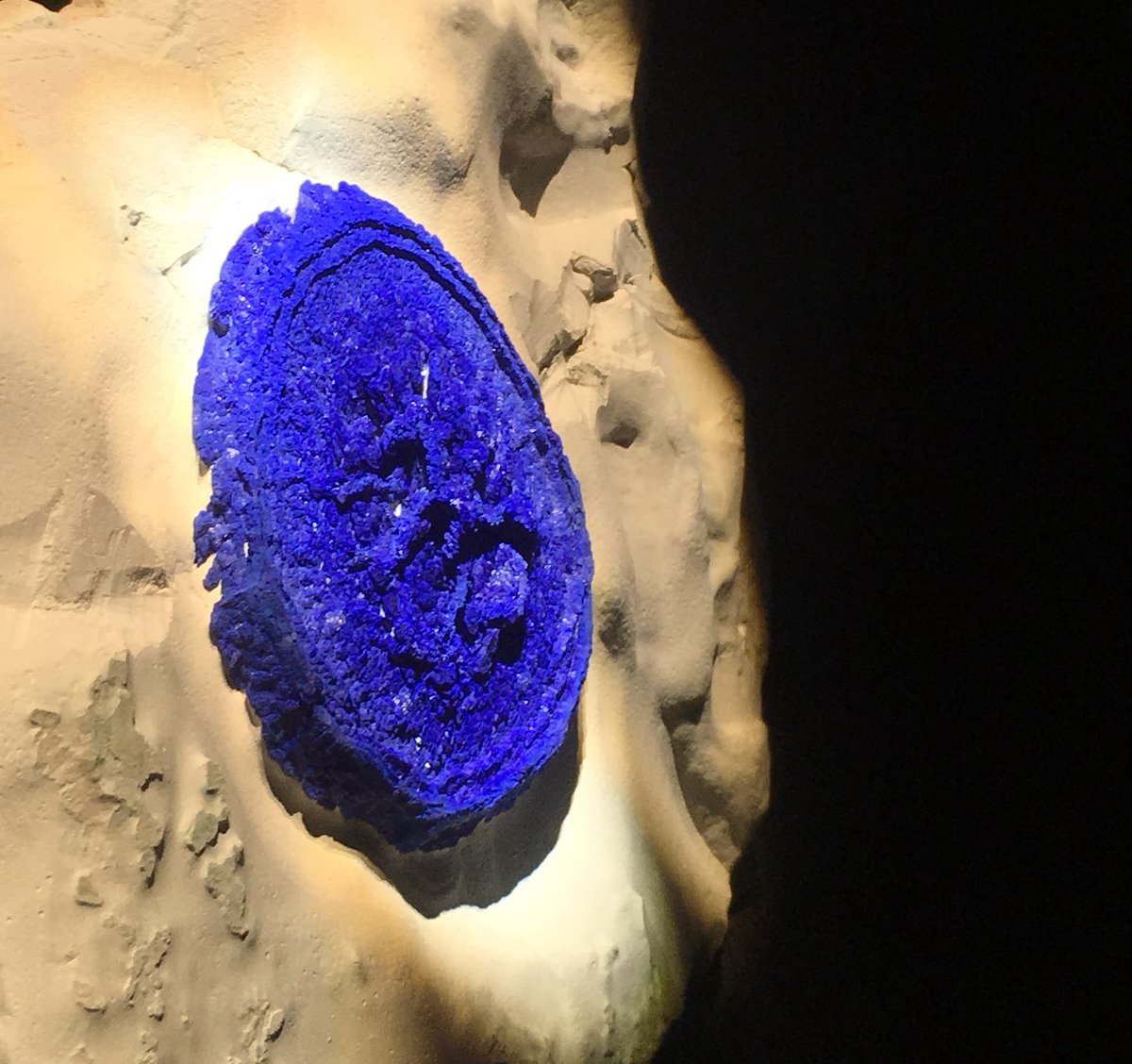
It’s a clay used since at least Sumerians, named by 13th century Yuan (Mongol), formerly described in 1637 China.
Kaolinite forms when feldspar weathers, which means it’s stable at surface conditions (resists more weathering).
Smoky quartz gets its brown-grey-black when natural irradiation frees silicon.
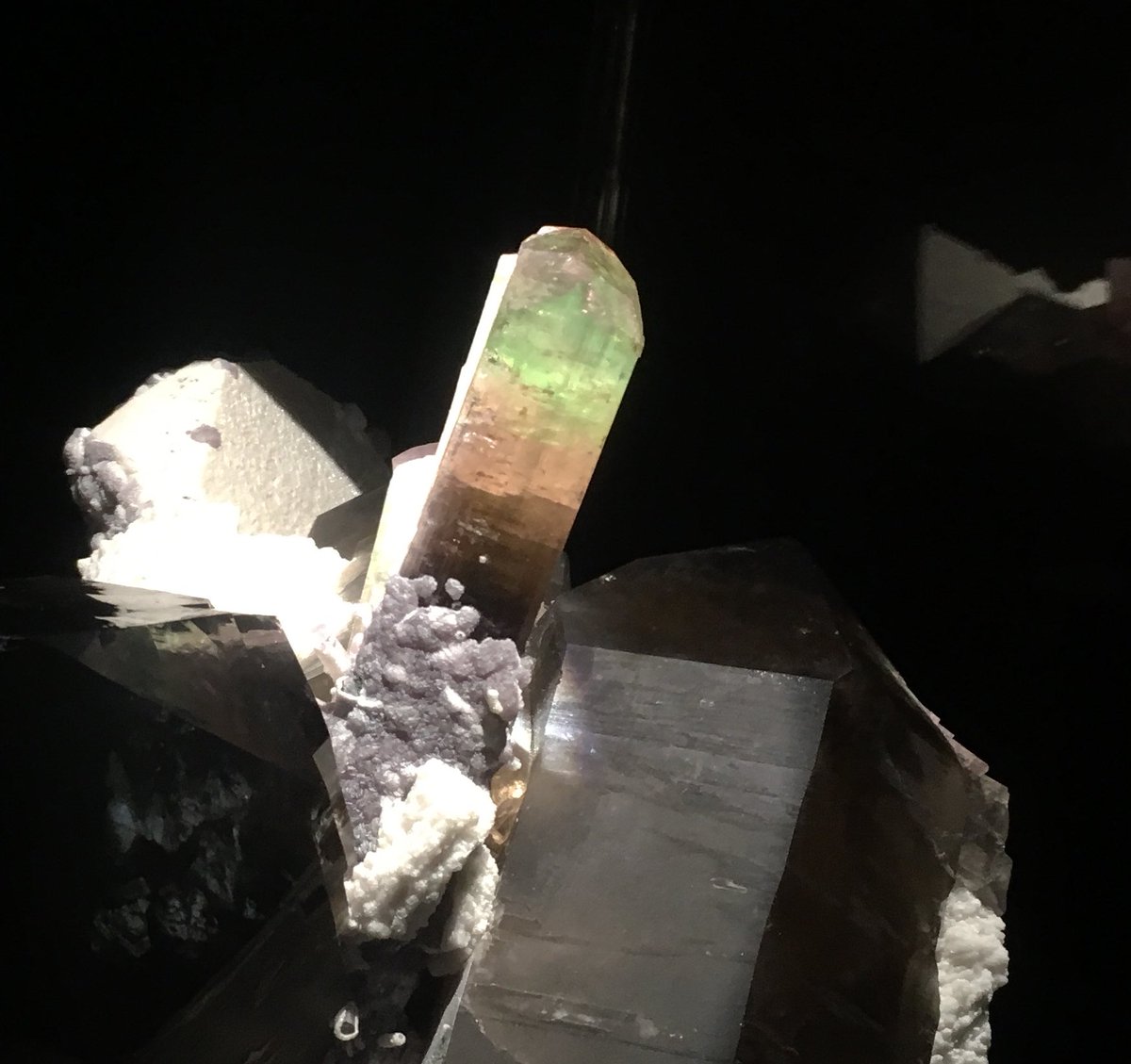

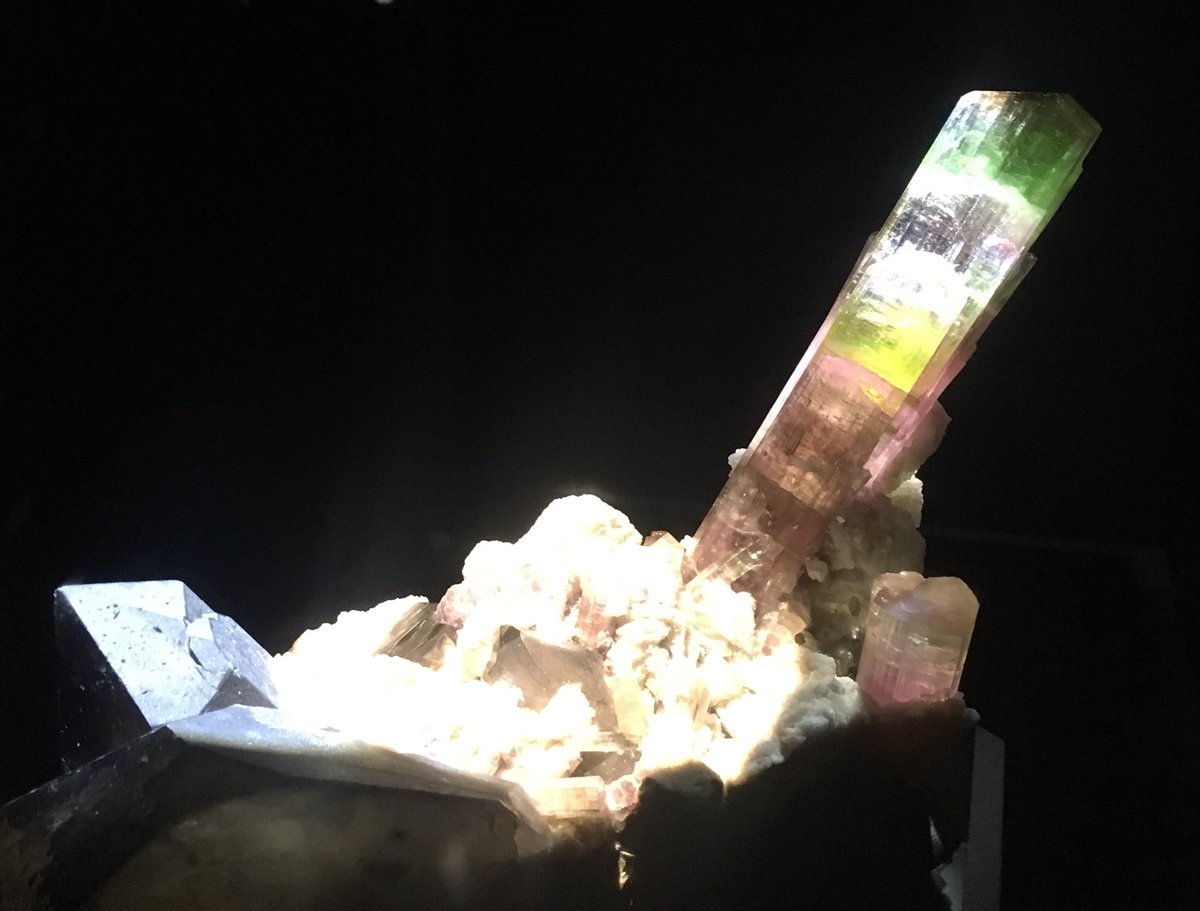
And when those colours are green-white-red? Mmmm, watermelon tourmaline!
Iron-rich is blues, blacks, & browns
Magnesium-rich is yellows, oranges, reds, & browns
Lithium-rich is a freaking free-for-all of any colour at all
‘cause I will always stop to admire cheerful doom-needles of red lead.
For ID tests I have no desire to run, crocoite dissolves in hydrochloric acid

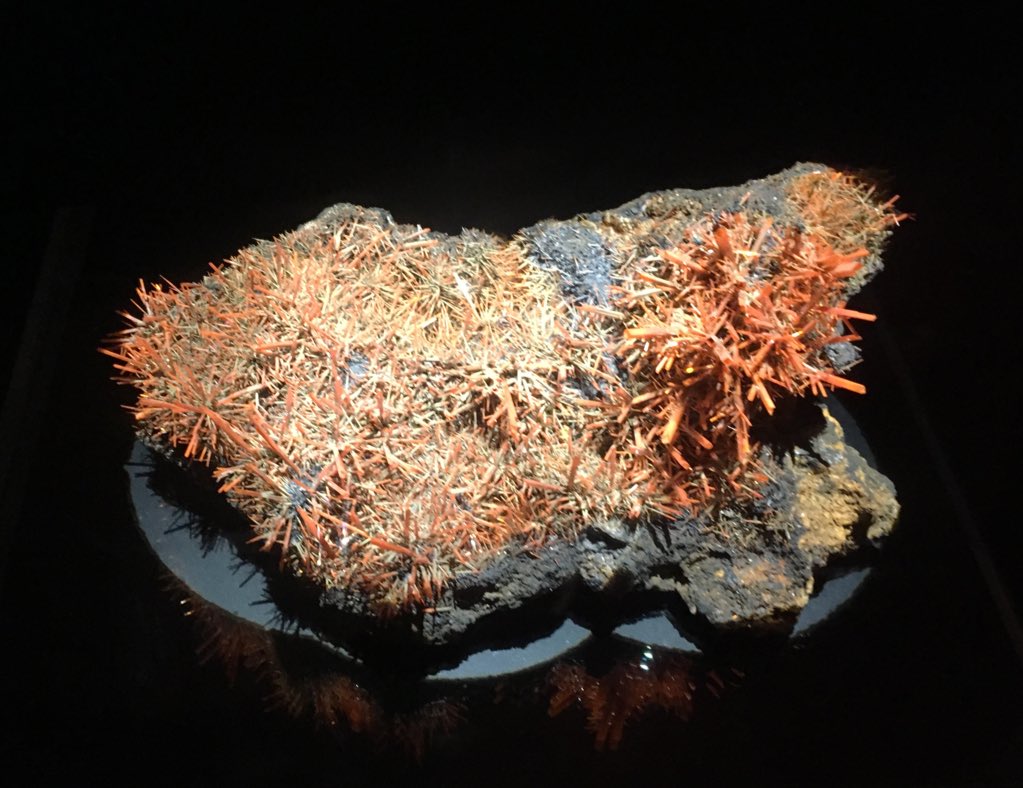
#Amazonite is green to blue-green potassium #Feldspar, and just pretty enough for me to like it despite my default indifference to silicates.
The blue is usually from a smidge of lead, but can also be from iron. Sunshine may colour-boost real amazonite.
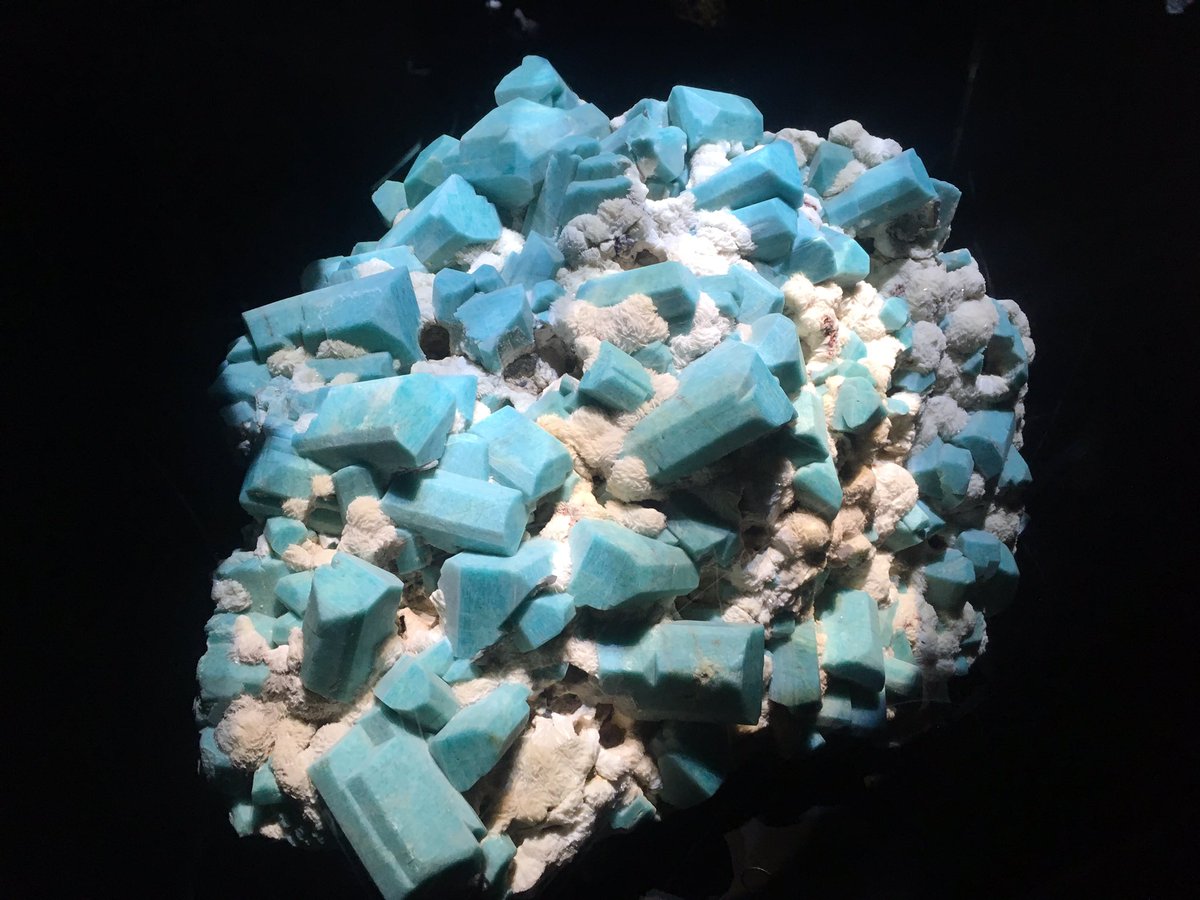
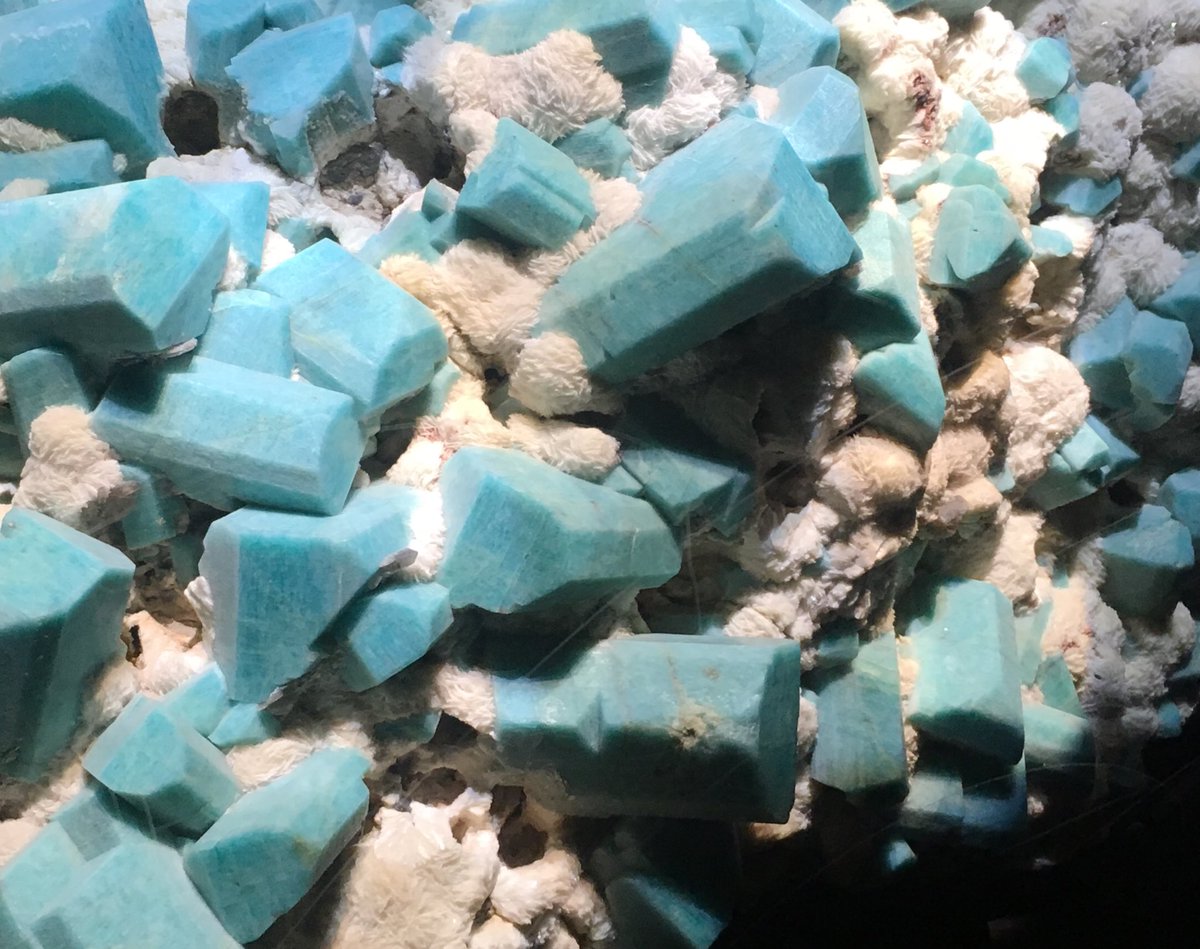

This is a beautifully-preserved mineral; rhodochrosite oxidizes to grubby black under surface conditions.
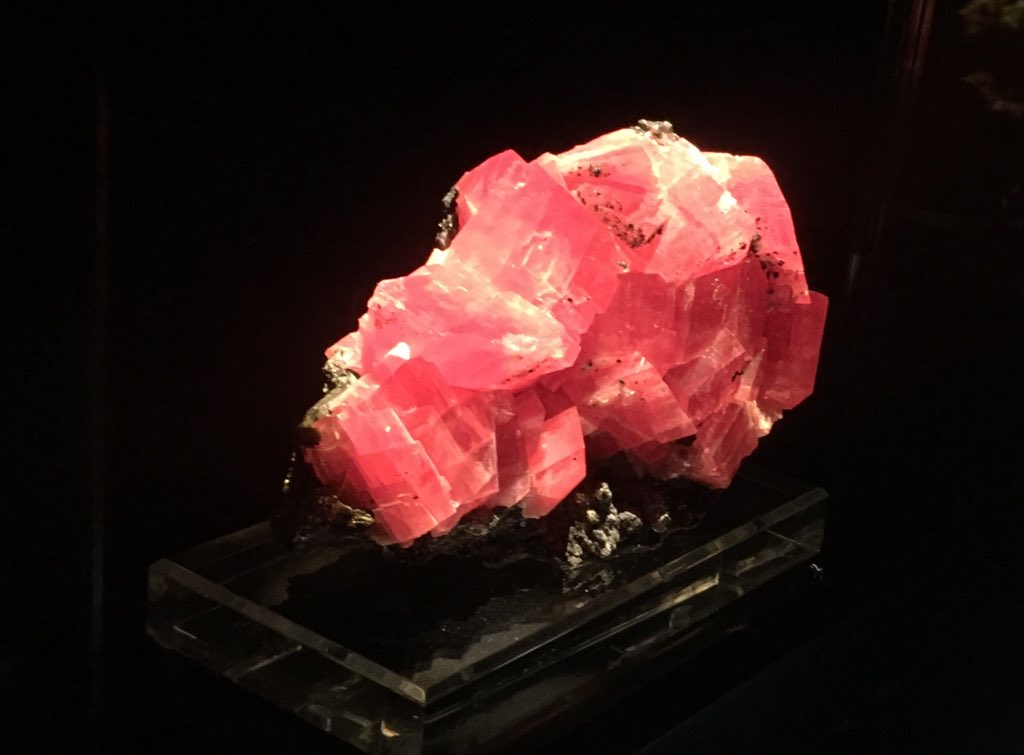
Crystal twins are when 2 crystals share a lattice, resulting in an inter grown symmetrical pair.
Aside from the undeniable pretty factor (high), it’s a good example of barrel vs prism crystal shapes.
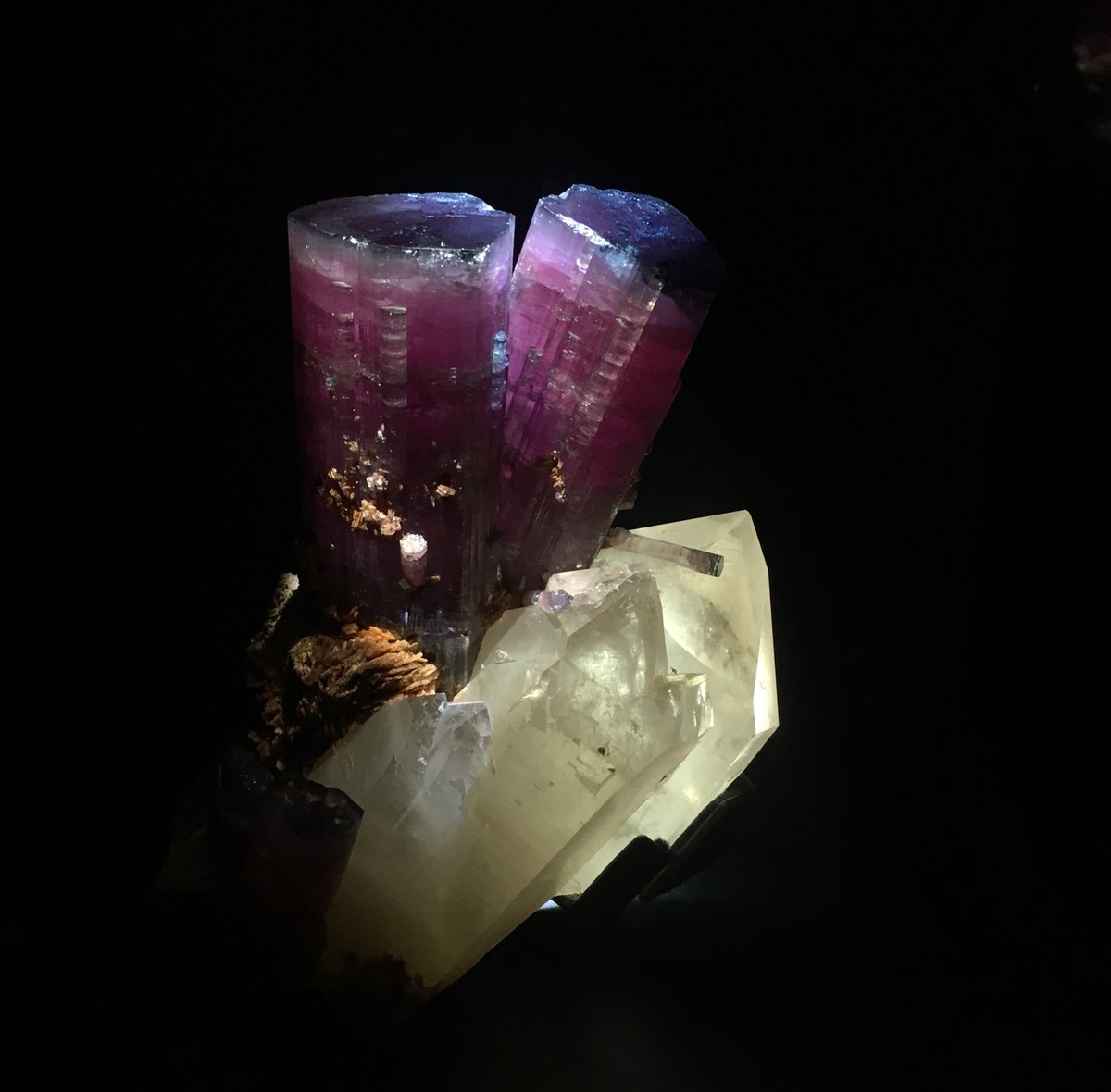
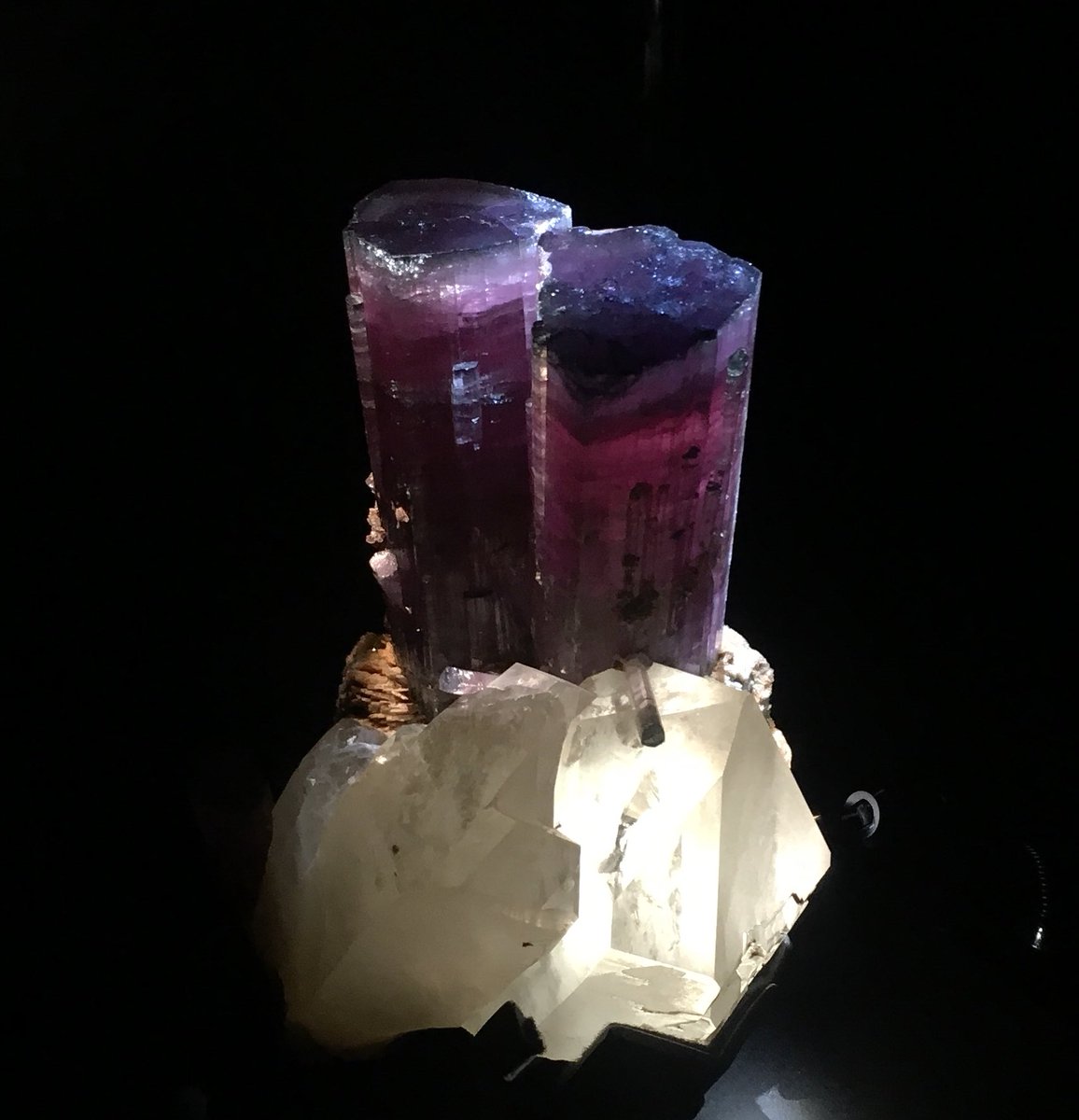
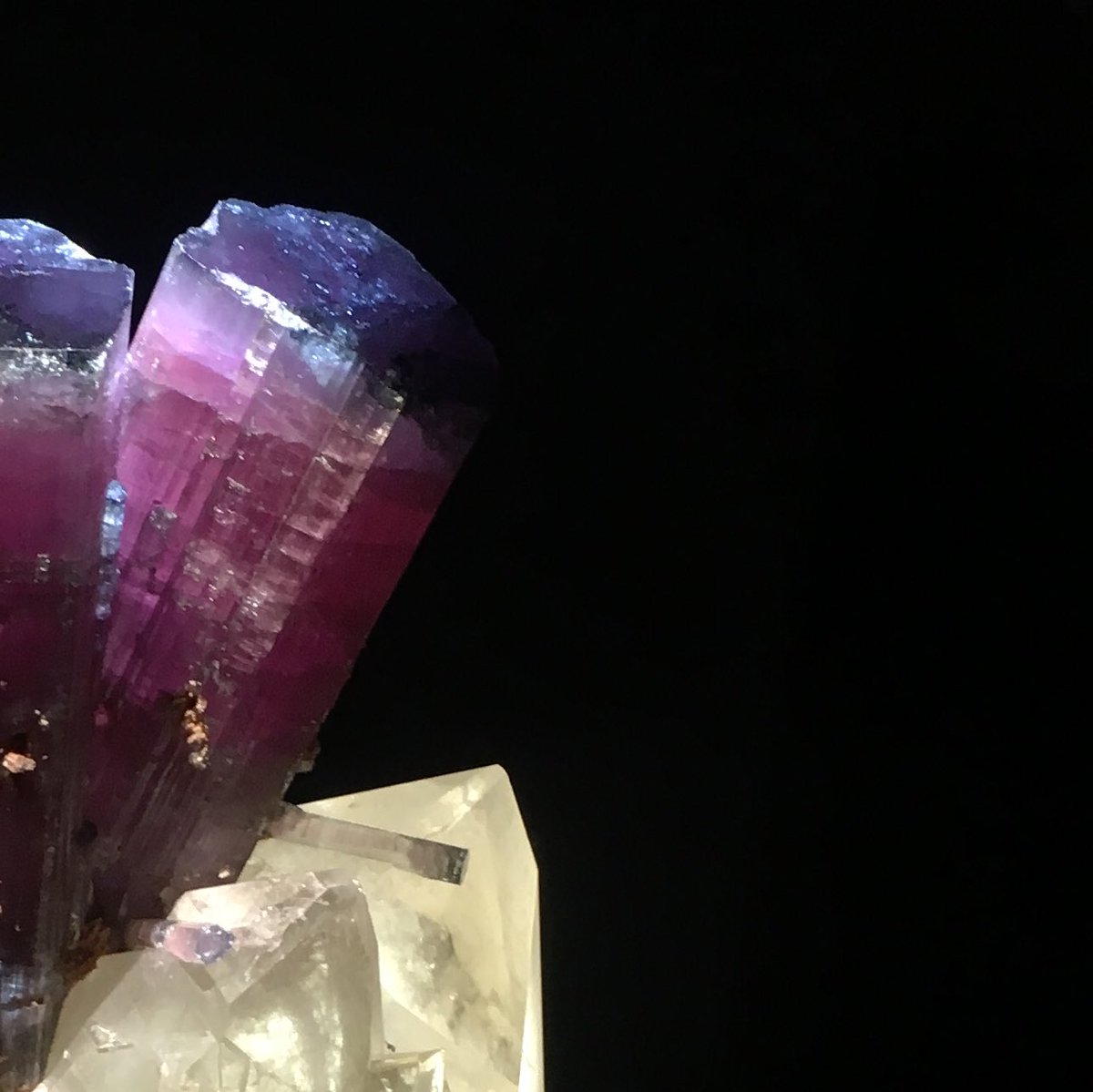

It seems so unread something this sharp, this geometric, & this vibrantly pink is a totally natural mineral that just kinda... grows, doin’ its own thang.
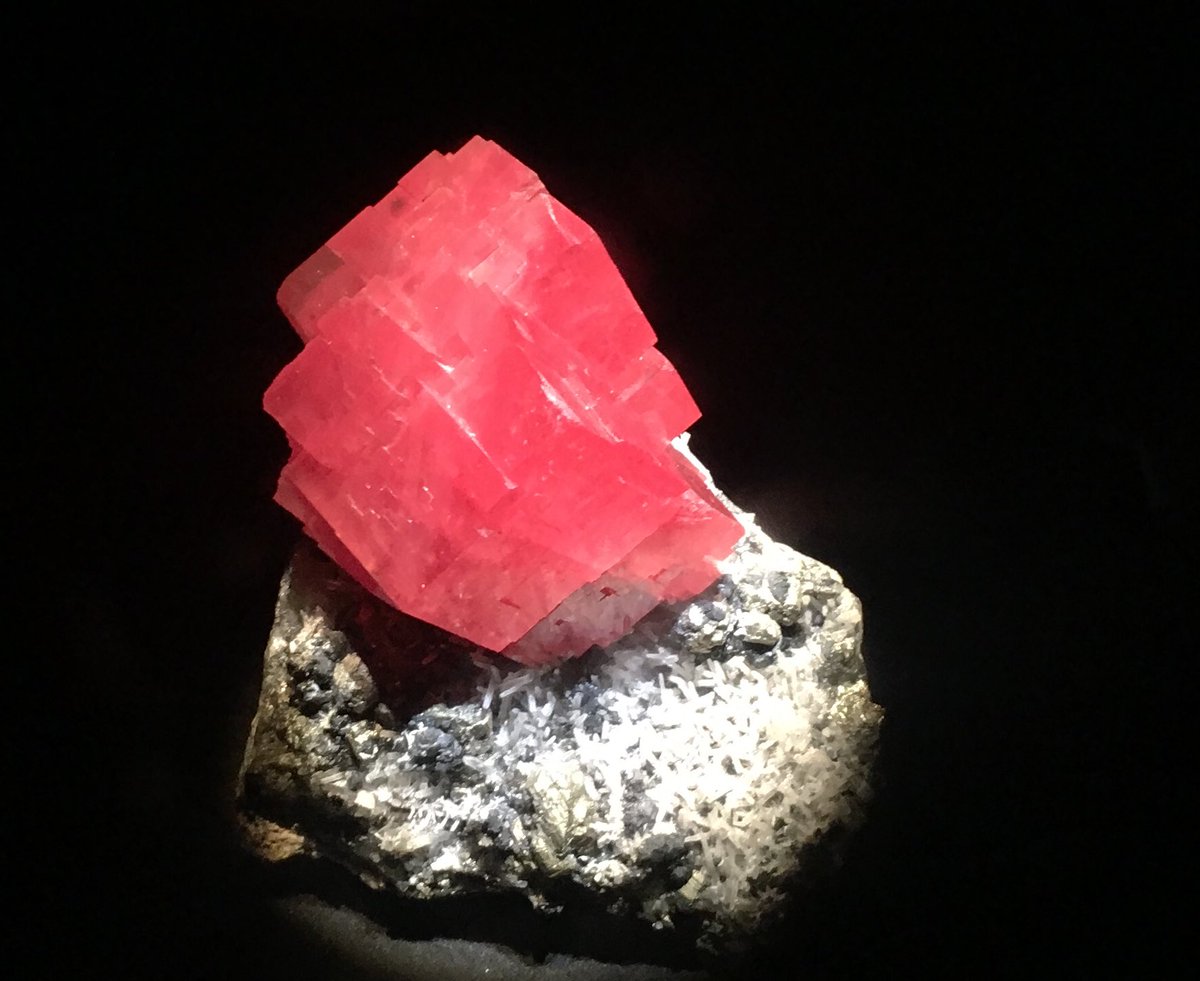
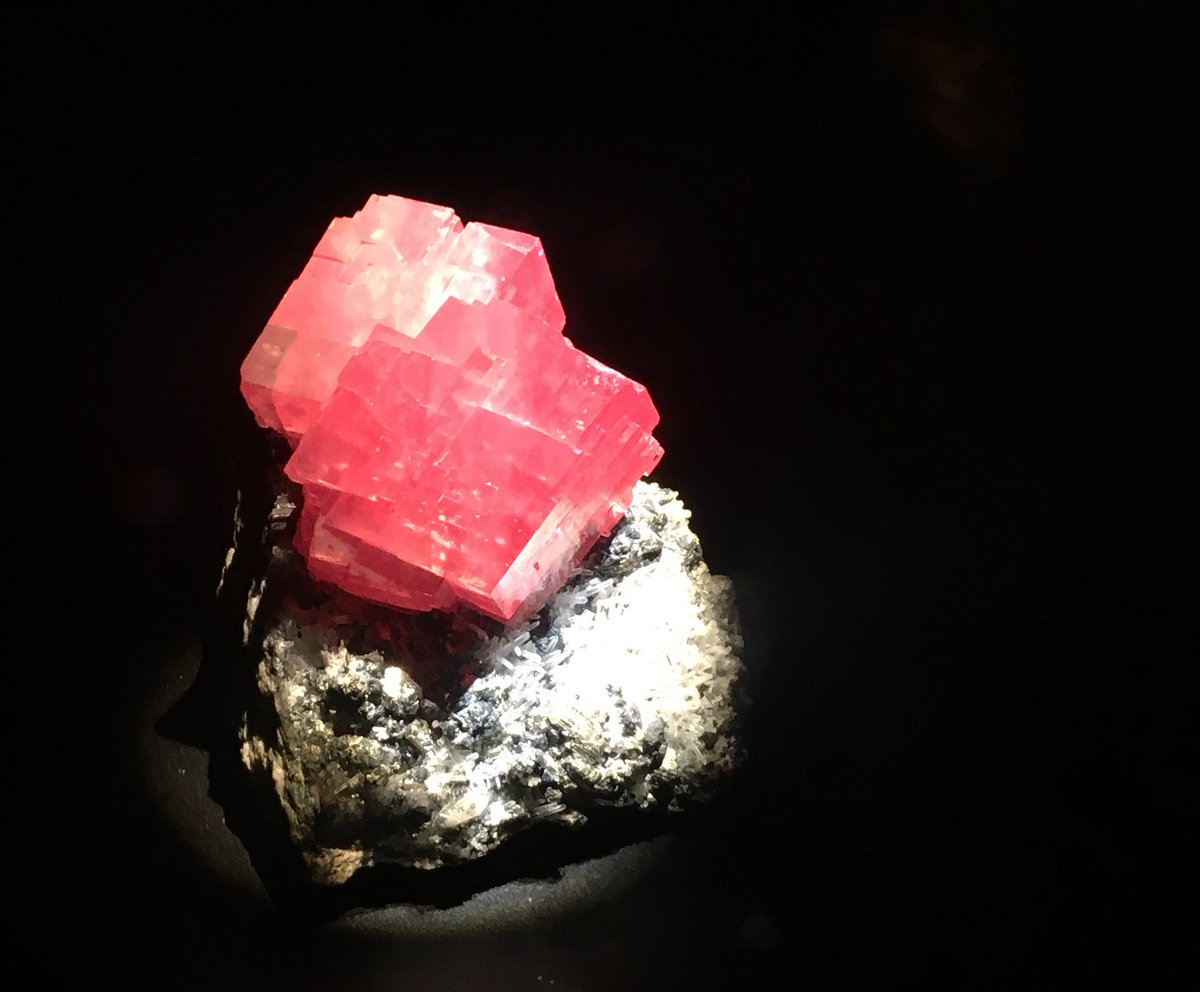
Hydrated calcium x sodium x aluminum silicate, named for being a compositional middle-ground between #natrolite & #scolecite.
Yes, the fuzzy-puffball look is diagnostic.
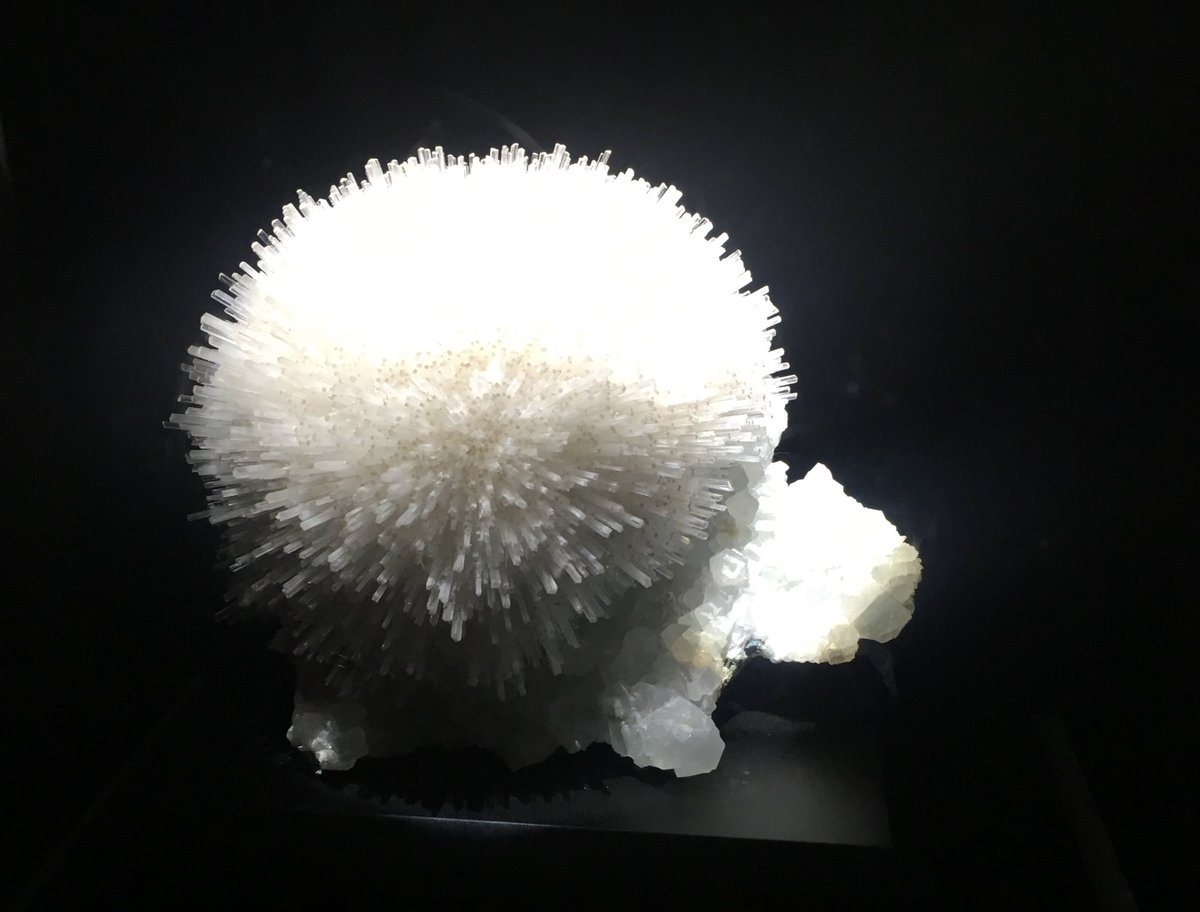
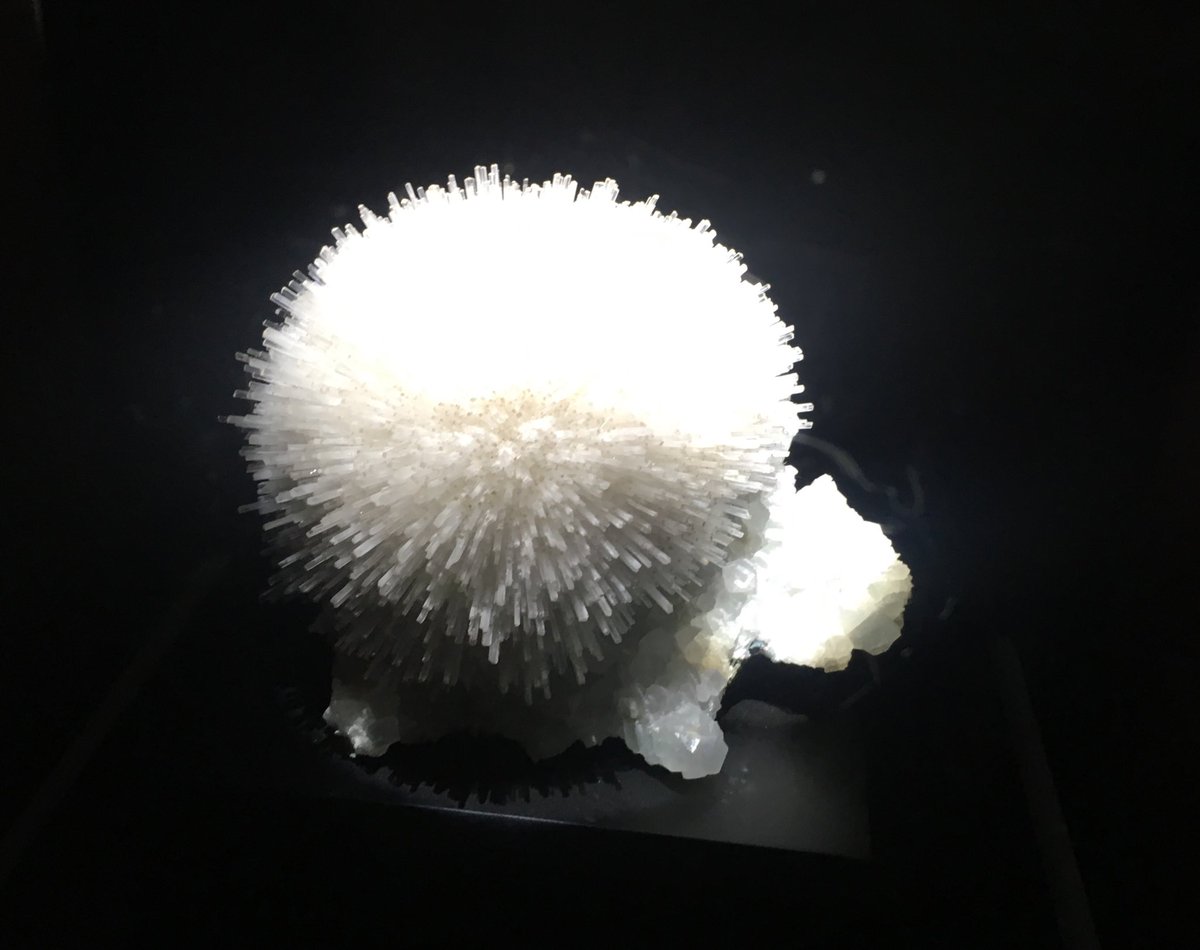
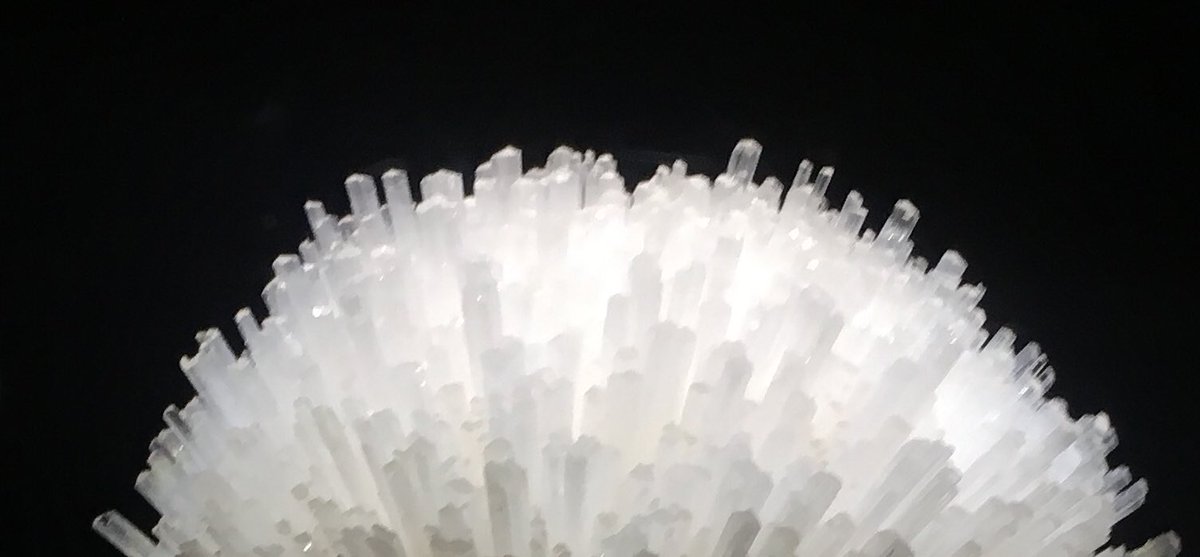
It’s as pettable as it looks — roughly as hard as glass so it won’t crumble, with silky-smooth texture.
It’s named for acting like a worm under a blowtorch’s flame, which. Uh. Seems mean?
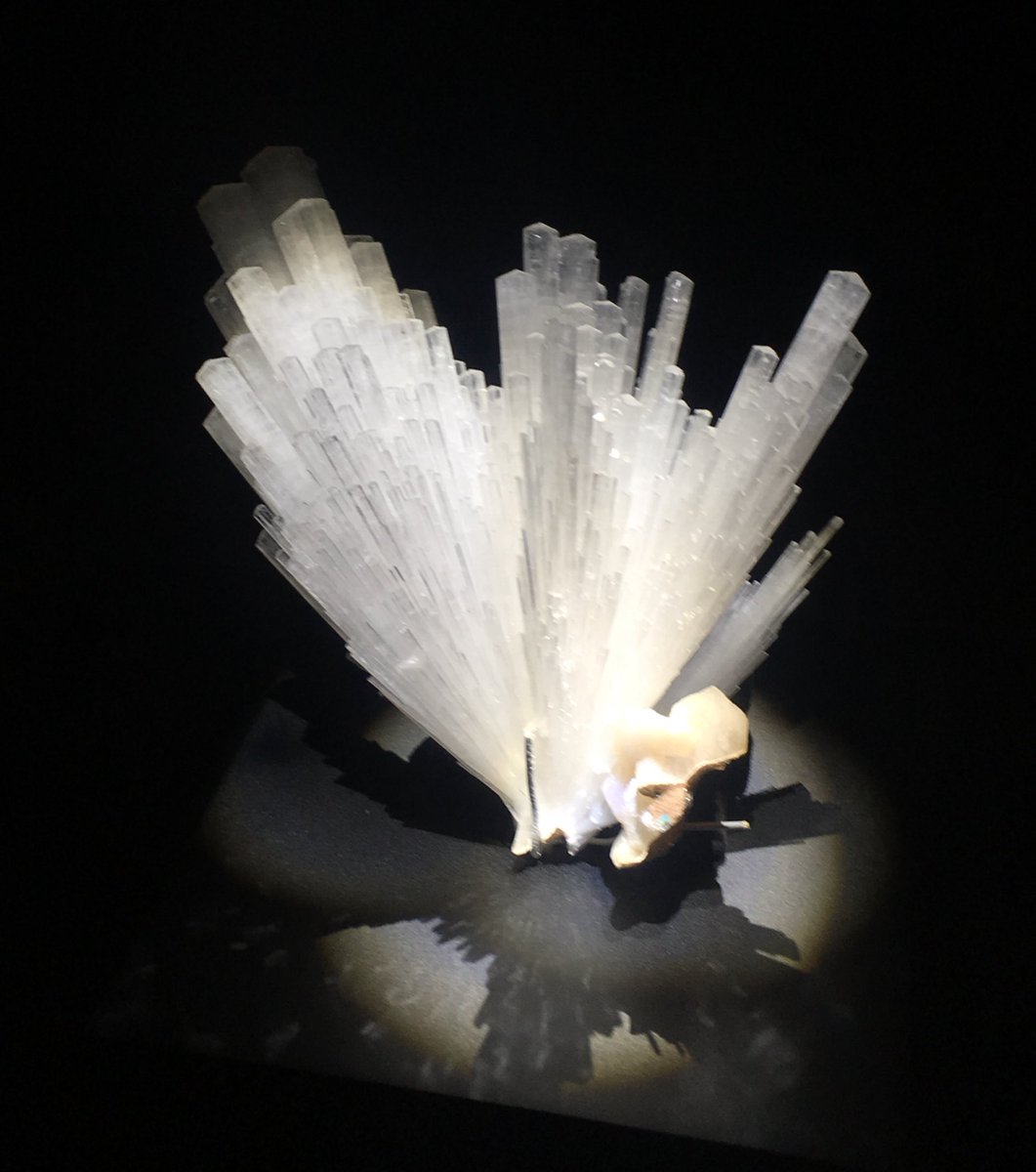
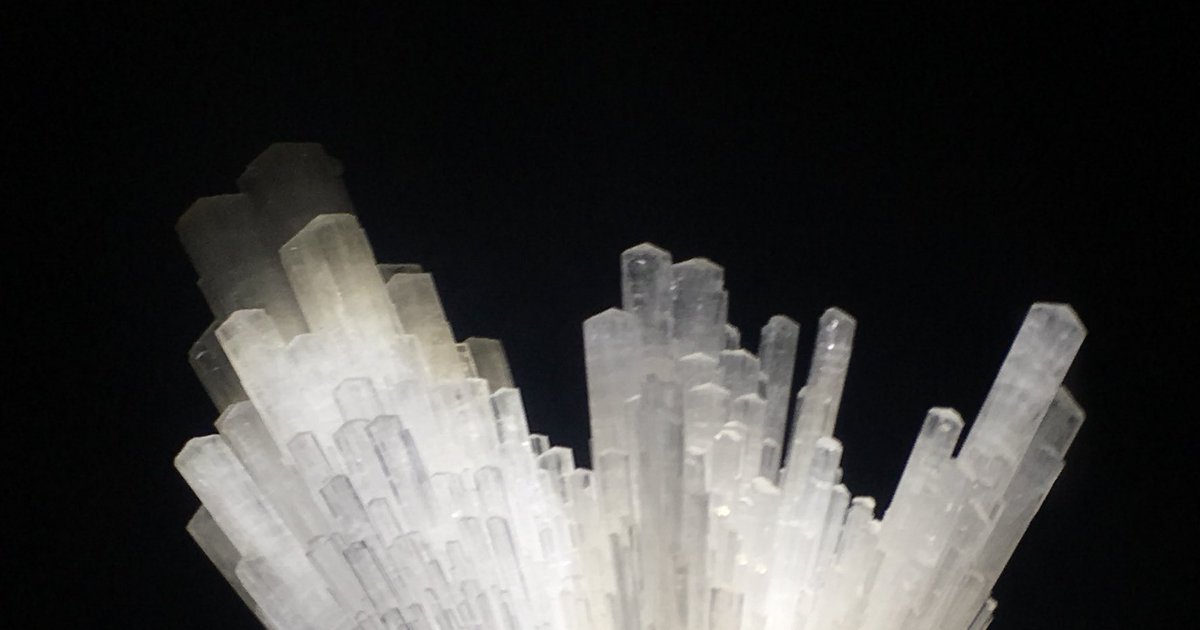
Apophyllite is a pearly white & exfoliates (sheds layers) if you heat it. Opaque cluster?
Stilbite‘a name means super-shiny-glittery mirror. Maybe it’s grainy base?
Quartz is green bunch?
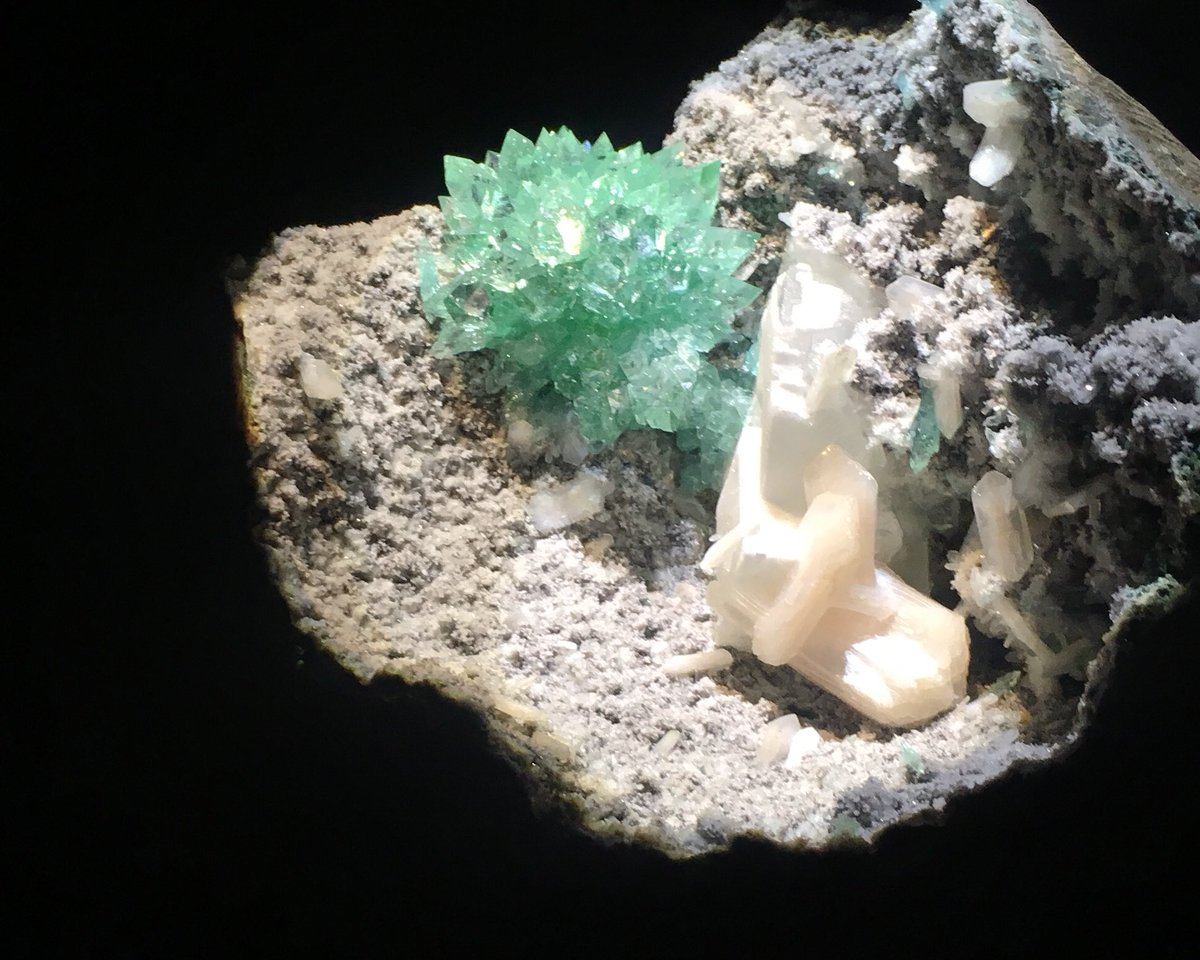
Quartz is a silicate (kinda like natural glass).
It’s pretty much the most common mineral on the crust of the Earth. Pick up the nearest rock. Odds are it has quartz in it.
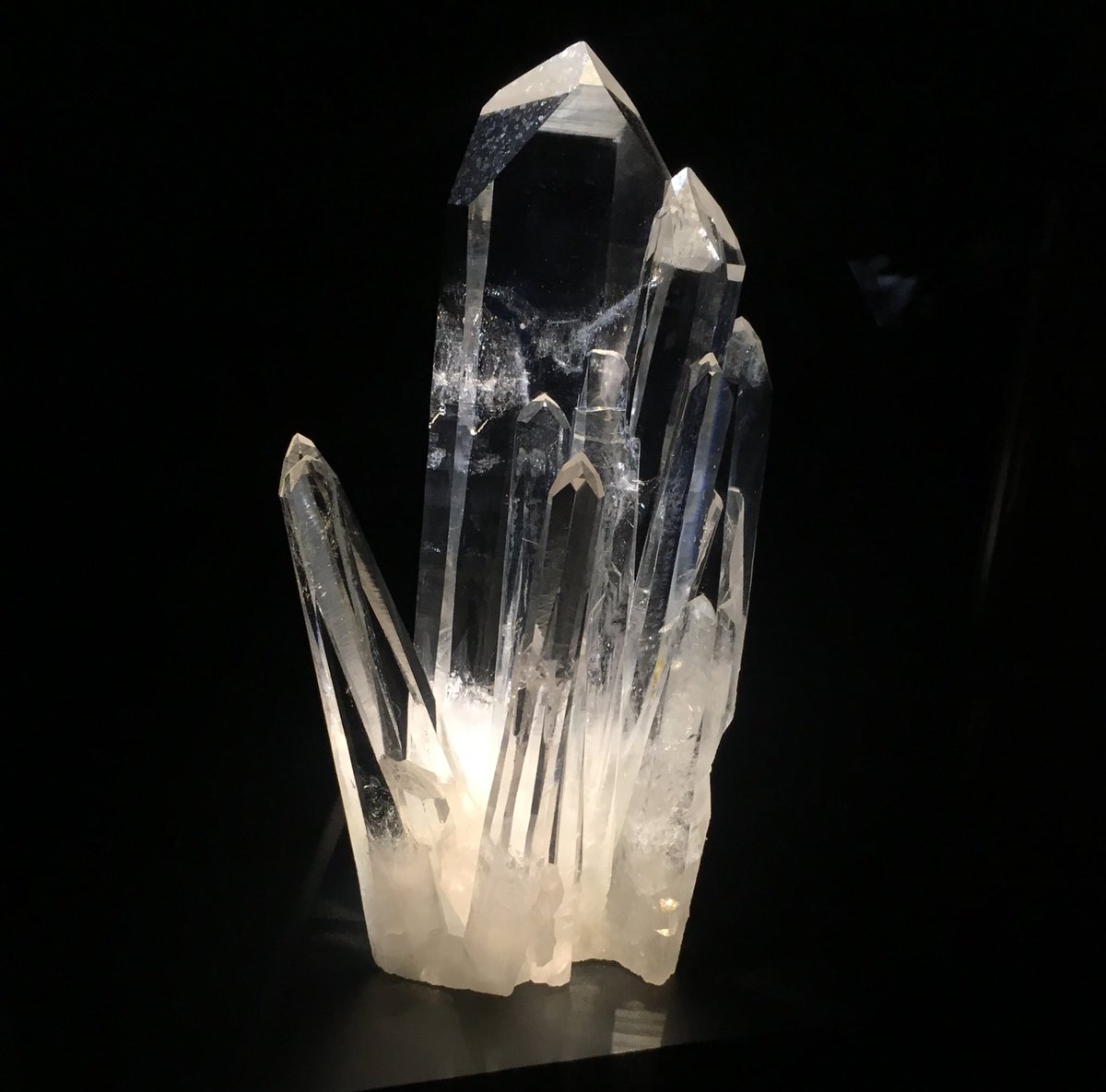
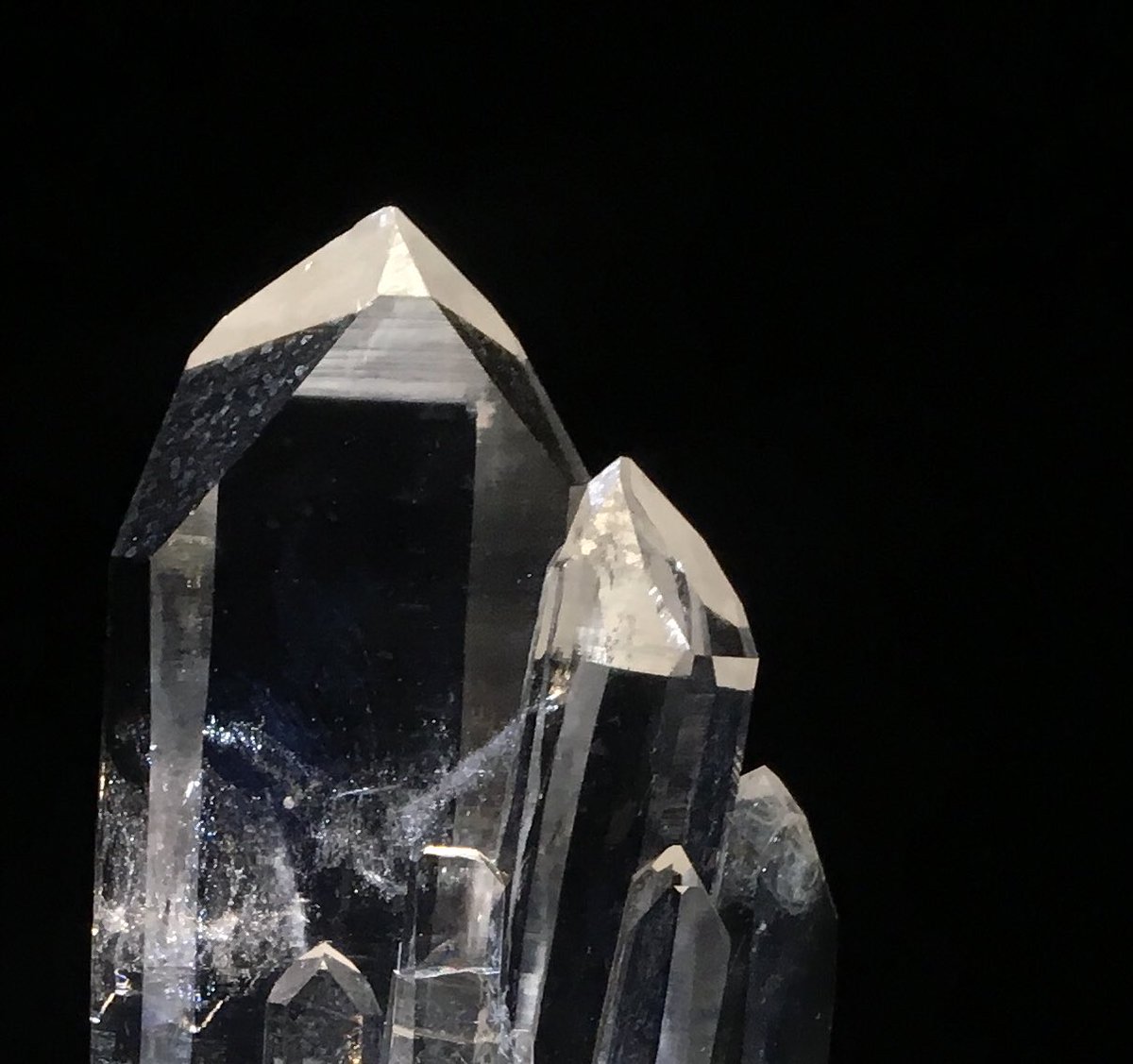
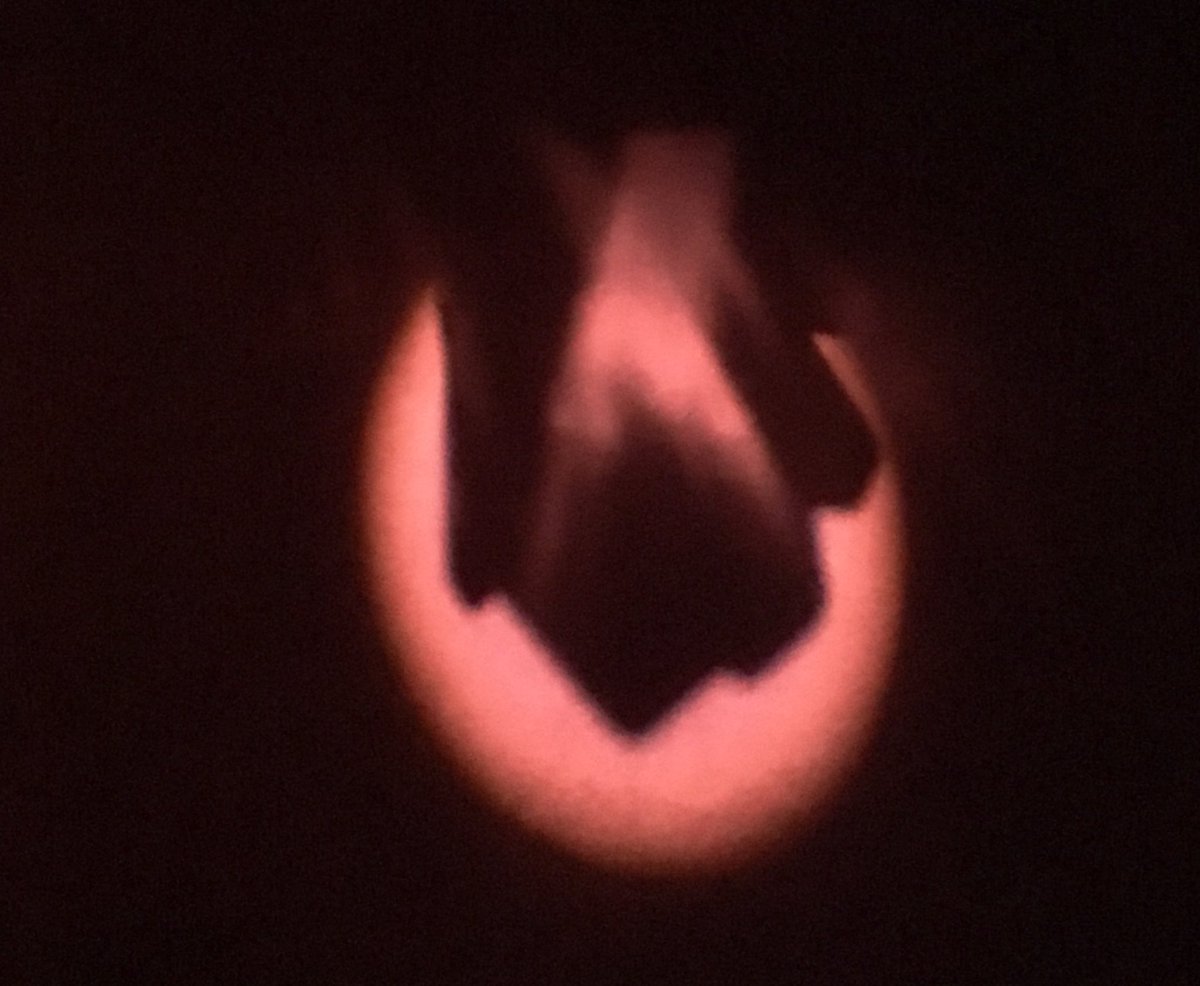
Like a lot more — @hmns has over 450 minerals on display, not counting their temporary special exhibit of tourmalines I didn’t even get a chance to see before I had to leave. Bah, humbug!
